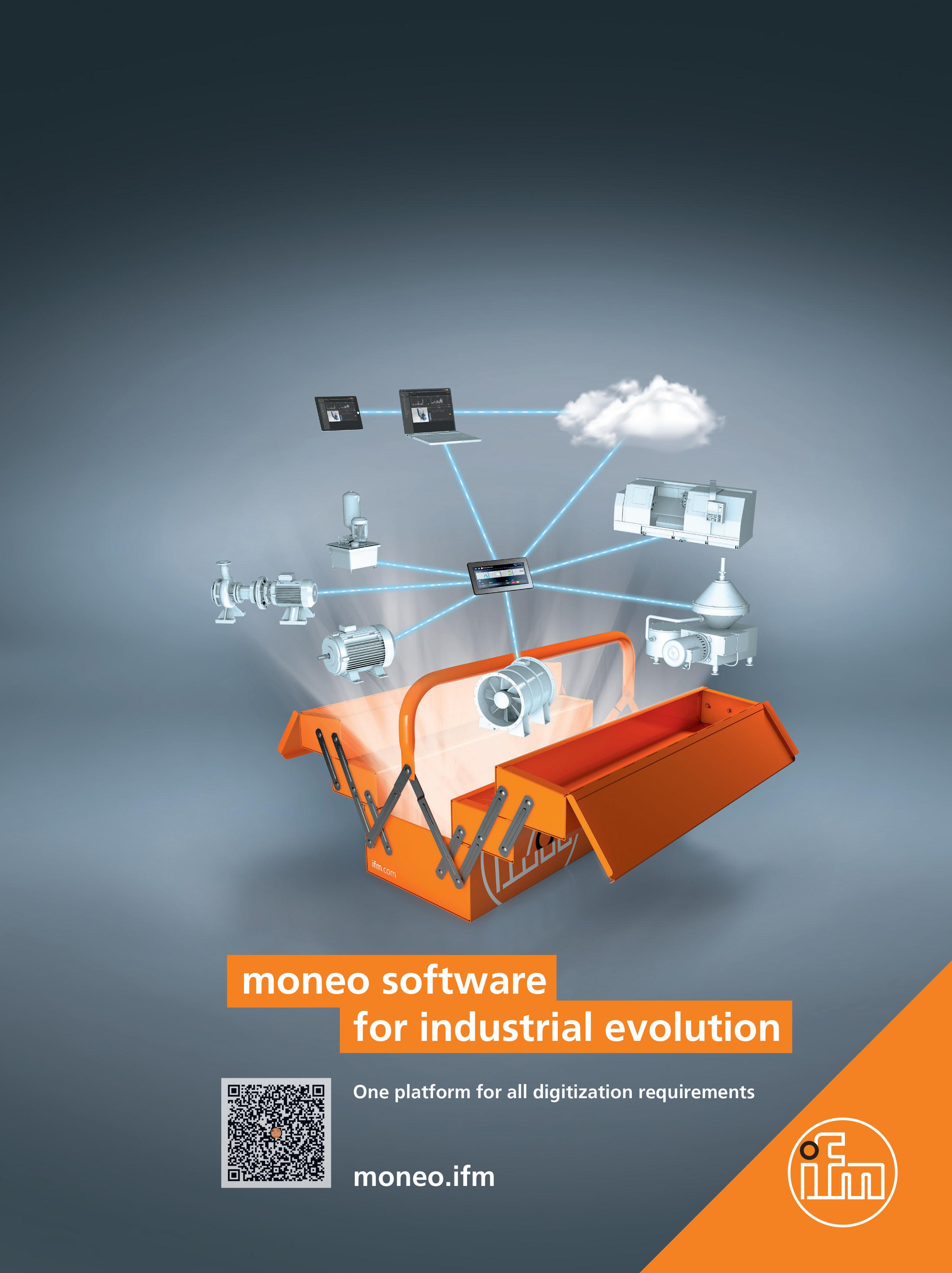
Manufacturing Engineering Process Control Automation
MAY 2024

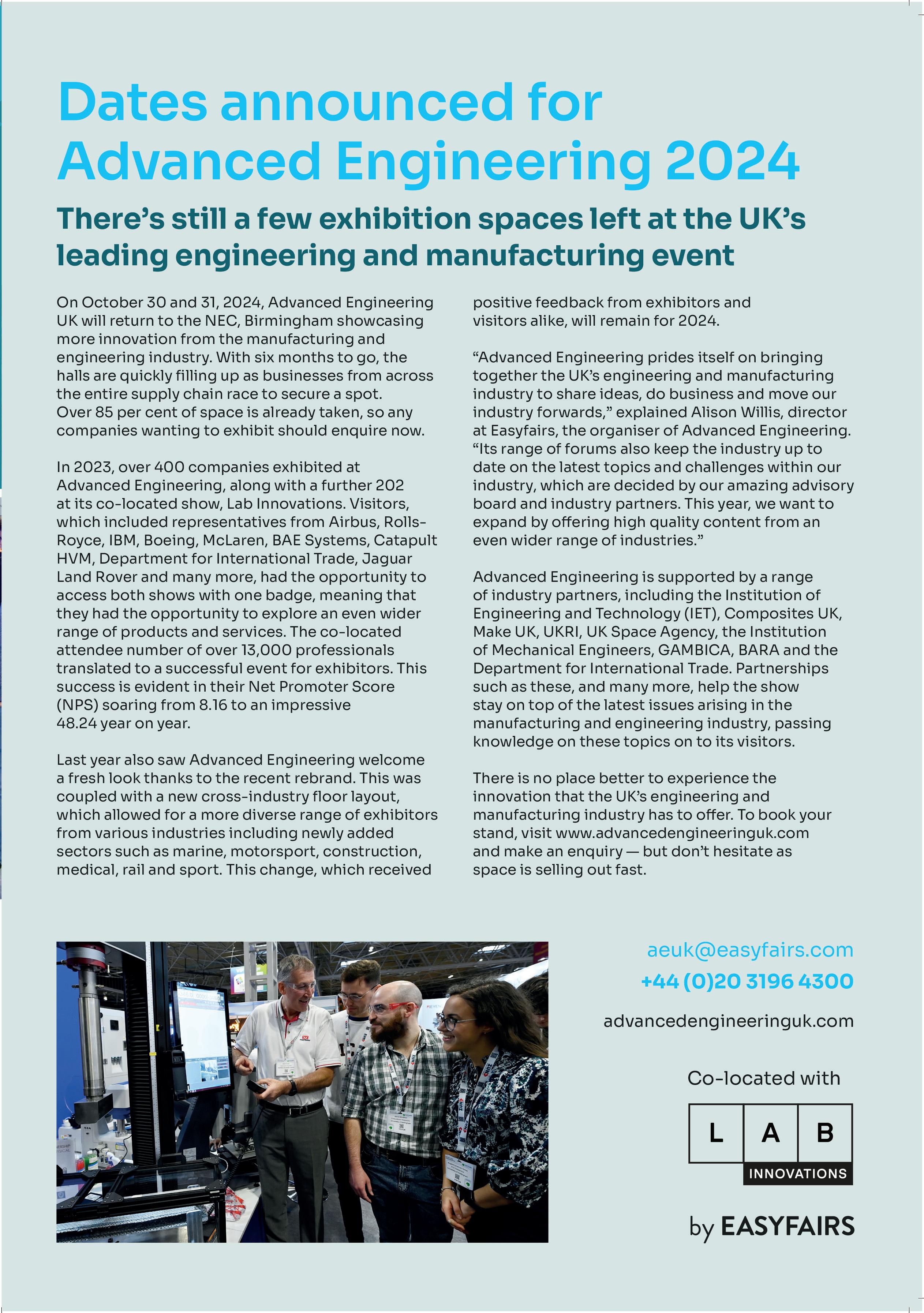
Editor
Chris Callander chrisc@cimltd.co.uk
Publication Manager
James Burke jb@cimltd.co.uk 01795 509115
Account Managers
James Davies jamesd@cimltd.co.uk 01795 509105
Jim Bearden jim@cimltd.co.uk 01795 509105
Design & Production
Grant Waters grant@cimltd.co.uk
James Taylor james@cimltd.co.uk
Administration Manager
Natalie Murray admin@cimltd.co.uk 01795 509103
Credit Facilities Manager
Gwen Lee
creditcontrol@cimltd.co.uk 01795 509103
Marketing Manager
Lucas Payne lucas@cimltd.co.uk
Sales Director
Tom Woollin tom@cimltd.co.uk
Chief Executive
John Denning
© 2024 TGM Publishing Limited,1st Floor, Saphir House, 5 Jubilee Way, Faversham, Kent, ME13 8GD. No part of this magazine may be reproduced or stored in a retrieval system or transmitted in any form – electronic, mechanical or physical – without express prior permission and written consent of the publisher. Contributions are invited and when not accepted will be returned only if accompanied by a fully stamped and addressed envelope. Manuscripts should be typewritten. No responsibility can be taken for drawings, photographs or literary contributions during transmission or in the editor’s hands. In the absence of an agreement the copyright of all contributions, literary, photographic or artistic, belongs to TGM Publishing Limited. The publisher accepts no responsibility in respect of advertisements appearing in the magazine and the opinions expressed do not necessarily represent the views of the publisher. The publisher cannot accept liability for any loss arising from the late appearance or non-publication of any advertisement.

May
2024
In the drive towards sustainability in the industrial sector, the focus often falls on the obvious areas of energy efficiency, waste reduction, and water conservation. While these are undoubtedly crucial, several critical areas frequently escape attention, potentially undermining broader sustainability goals.
One area often overlooked is the environmental impact of the supply chain. From raw material sourcing to end-product delivery, every step in the supply chain can add substantial carbon and waste footprints to an otherwise ‘sustainable’ operation. However, integrating green procurement policies that prioritise suppliers who comply with environmental standards and optimising logistics to minimise transportation emissions can make a considerable difference.

Another frequently missed area is biodiversity. Industrial sites, especially in or near sensitive ecological zones, can threaten local flora and fauna. In those cases, creating green belts around facilities and ensuring that industrial activity does not encroach on protected areas is vital. Moreover, investing in biodiversity projects can help with ecosystem restoration, promoting a positive environmental image and fostering local community support.
The role of employee engagement in driving sustainability is also often underestimated. A workforce that is educated about and, more importantly, committed to sustainability practices can dramatically improve a site’s environmental performance. Implementing training programs that emphasise the importance of sustainability and how employees can contribute can lead to significant improvements.
Lastly, long-term sustainability planning is crucial. Sustainable practices should be a core aspect of all strategic planning processes. This involves not just immediate changes but also preparing for future environmental regulations and potential ecological challenges.
Many industrial companies are making positive strides in the areas traditionally associated with sustainability, but the next time you or your organisation are considering how to improve sustainability, try to explore options beyond the traditional avenues.
Enjoy the issue.
Chris Callander, Editor

4 www.mepca-engineering.com CONTENTS 22 To subscribe to MEPCA visit our website www.mepca-engineering.com or scan the QR code. @Mepca-magazine






OPINION
18 COVER STORY
21 MATERIALS & HANDLING FOCUS
Bito Storage Systems, Mobile Industrial Robots and Euchner
28 SENSORS & SENSING SYSTEMS
Micro Epsilon, ESI and Baumer
36 ROBOTICS

Control Solutions, Drives, Motors & Controls, Valves & Actuators and the latest event
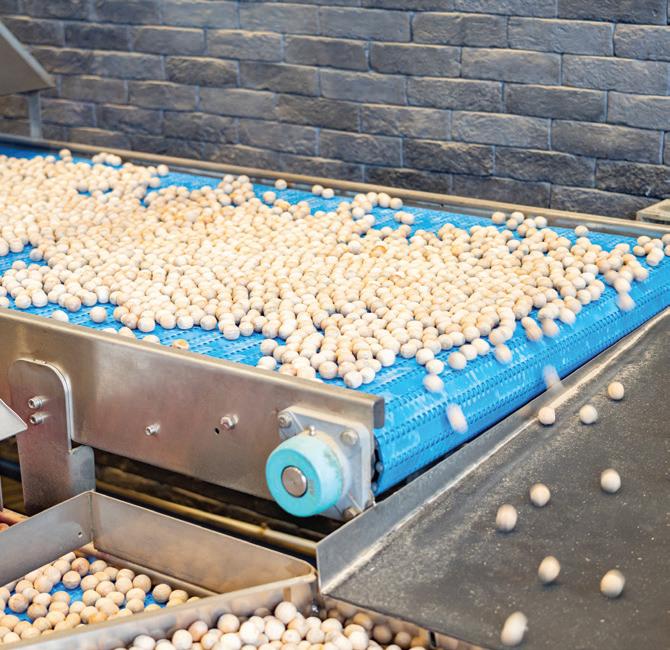
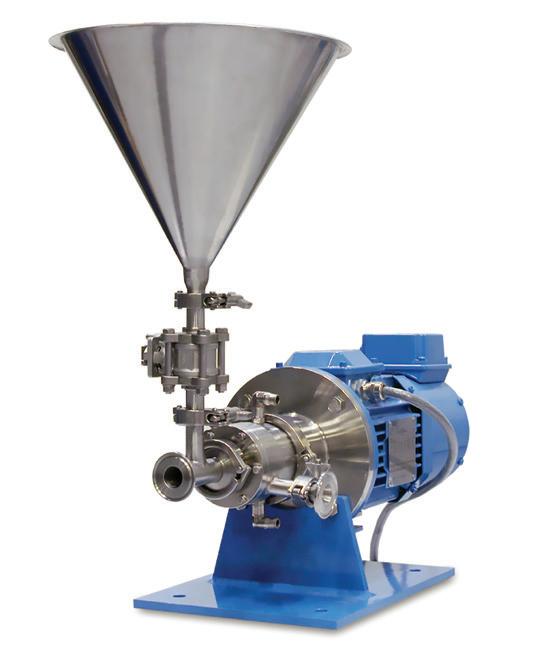

www.mepca-engineering.com 5 CONTENTS 42 34 FEATURES 14
Gambica and
Axair
ifm electronic
Trio Motion 46
Schneider Electric PLUS
SUSTAINABILITY
previews Industry Partners: 24
Scientists have found a way to transform metal waste into a highly efficient catalyst to make hydrogen from water, a discovery that could make hydrogen production more sustainable.
A team of researchers from the University of Nottingham’s School of Chemistry and Faculty of Engineering have found that the surface of swarf, a byproduct of the metal machining industry, is textured with tiny steps and grooves on a nanoscale level. These textures can anchor atoms of platinum or cobalt, leading to an efficient electrocatalyst that can split water into hydrogen and oxygen.
Hydrogen is a clean fuel that can be used to generate heat or power vehicles, and the only byproduct of its combustion is water vapour. However, most hydrogen production methods rely on fossil fuel feedstock. Electrolysis of water is one of the most promising green pathways for hydrogen production, as it only requires water and electricity.
The industry is facing a challenge with

water electrolysis, as this process requires rare and expensive elements like platinum to catalyse the water splitting. With the limited global supply and increasing prices of precious metals, there is an urgent need for alternative electrocatalyst materials to produce hydrogen from water.
Dr Jesum Alves Fernandes, from the School of Chemistry at the University of Nottingham, who led the research team, said: “Industries in the UK alone generate millions of tons of metal waste annually. Using a scanning electron microscope, we could inspect the seemingly smooth
Trash to treasure – researchers turn metal waste into a catalyst for hydrogen Aerospace deal signed for largest robots ever ordered in UK
Aerospace automation specialist Loop Technology has signed a deal with FANUC UK for seven new robots – including four units of the largest industrial robot ever to be ordered in the UK, the FANUC M-2000iA/1700L.
Renowned as the strongest longreach robot in the world, three FANUC M-2000iA/1700L six-axis units will be delivered to the University of Sheffield Advanced Manufacturing Research Centre (AMRC) for its new innovation facility in South Yorkshire. This is part of Project Compass (Composites at Speed and Scale), which includes an aerospace manufacturing R&D project delivered by a consortium of
partners, including Boeing, Loop Technology, Spirit AeroSystems and the AMRC.
The Loop/AMRC deal also encompasses two further FANUC M-2000iA robots: a 1200L and a 900L model.
surfaces of the stainless steel, titanium, or nickel alloy swarf. To our astonishment, we discovered the surfaces had grooves and ridges that were only tens of nanometres wide. We realised that this nanotextured surface could present a unique opportunity for the fabrication of electrocatalysts.”
The researchers used magnetron sputtering to create a platinum atom “rain” on the swarf’s surface. These platinum atoms come together into nanoparticles that fit snugly into the nanoscale grooves.
Dr Madasamy Thangamuthu, a Postdoctoral Researcher at the University of Nottingham who was responsible for the analysis of the structure and electrocatalytic activity of the new materials, says: “It is remarkable that we can produce hydrogen from water using only a tenth of the amount of platinum loading compared to state-ofthe-art commercial catalysts. By spreading just 28 micrograms of the precious metal over one cm² of the swarf, we were able to create a laboratory-scale electrolyser that operates with 100% efficiency and produces 0.5l of hydrogen gas per minute just from a single piece of swarf.”
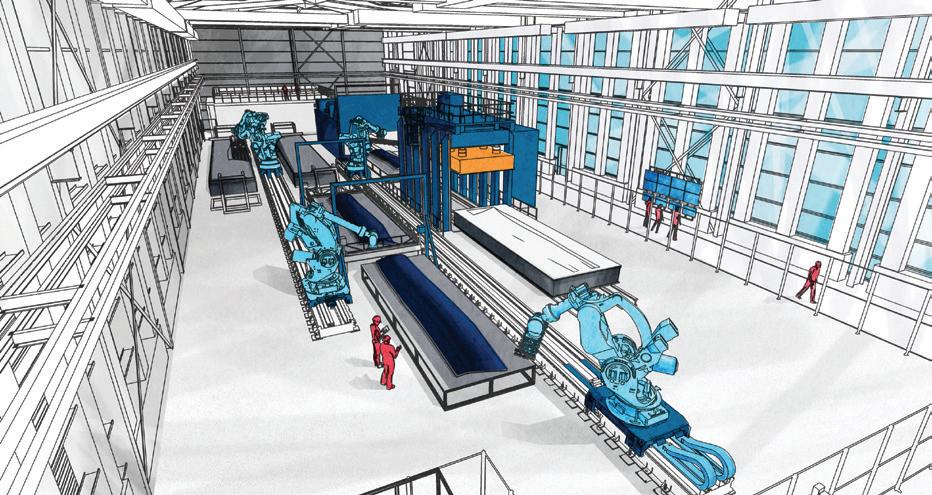
As part of a separate project, another 1700L model, along with an additional 900L unit, have been ordered by Loop Technology to form part of a highrate composite preforming cell for a North American aerospace client. This brings the total number of FANUC M-2000iA six-axis robots commissioned by Loop Technology for this latest order to seven.
The five FANUC M-2000iA industrial robots that have been ordered by Loop Technology
for the AMRC facility will form part of Loop’s proprietary high-rate deposition cell, known as FibreLINE. This state-of-the-art highrate preform manufacturing system, with FibreFORM at its centre, can pick composite sheets (plies) and form them into complex 3D double curvature profiles before placing them onto a tool, inspecting them and heat staking them ready for the next stage of the production process, at a rate of up to 200kg an hour.
6 www.mepca-engineering.com
INDUSTRY NEWS
GAMBICA launches manifesto urging government to act
GAMBICA has issued a manifesto to the incoming government, highlighting key sector objectives that must urgently be addressed.
The manifesto calls for a collaborative partnership between industry and government so a long-term industrial strategy that fosters business growth can be achieved.
Priority outcomes have been presented in the document, informing the new government so they can take positive action to solve current issues.
Working together with members, the manifesto was created through consultation and round-table discussions with key councils and committees.
The manifesto sets out the following objectives:
• Long-term economic and political stability to create the best climate for business investment and growth.
• A collaborative partnership between government and industry to deliver an evidence-based policy and regulatory environment that supports our goals.
• An industrial strategy, developed by business and government together that:
- is truly crossdepartment and co-ordinated by an overall authority.
- has a long-term vision that can be carried forward across future governments.
- addresses current barriers and future opportunities across the policy themes such as skills and jobs, trade, regulation and sustainability.
• A Net Zero policy that drives industry and consumers towards best-practice technology and systems to reach ambitious targets.
Commenting on the manifesto, Steve Brambley, GAMBICA Chief Executive, said: “There are a number of policy areas where we are looking for government to enhance and accelerate support such as skills, trade and regulation. It is vital that these actions are co-ordinated within a crossdepartment industrial strategy to really maximise potential.”
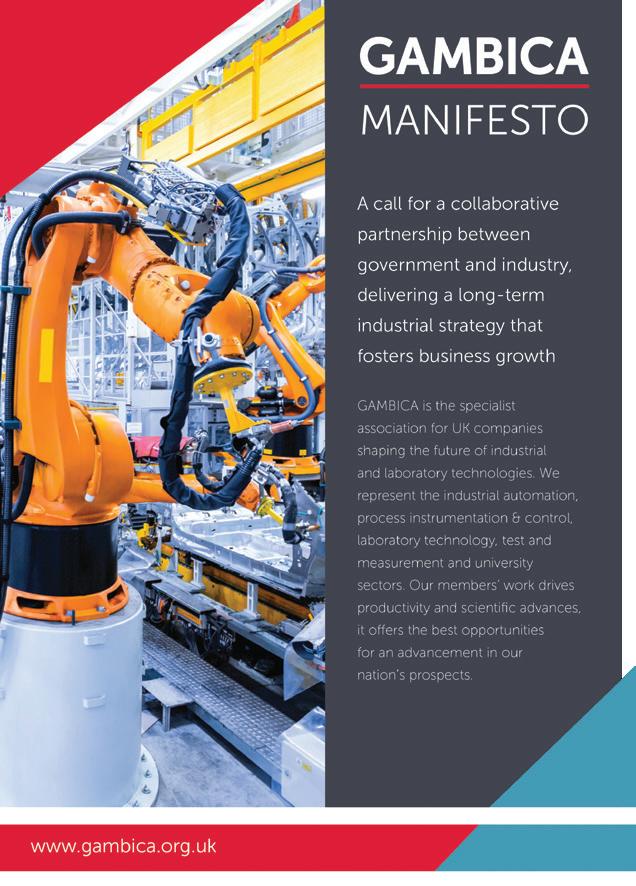
The full manifesto can be downloaded at bit.ly/G-manifesto
OMRON UK and Brillopak forge strategic partnership as official solution partners
Industrial automation technology supplier OMRON UK, and packing solutions provider Brillopak, have announced a strategic partnership as official Solution Partners.
As an official OMRON UK Solution Partner, Brillopak will gain access to OMRON’s comprehensive portfolio of products and technologies, including advanced robotics, sensing, control, and safety solutions. This partnership will enable Brillopak to further enhance its packing solutions, offering customers increased efficiency, flexibility, and reliability in their operations.
“We are thrilled to partner with OMRON UK as an official Solution Partner,” said Xavier Barraud –Engineering & Operation Director at
Brillopak. “This collaboration aligns perfectly with our commitment to delivering innovative solutions tailored to our customers’ needs. By leveraging OMRON’s advanced technologies, we are confident in our ability to drive significant value for our customers across the UK.”
Through this partnership, OMRON UK aims to expand its reach in the packing sector by leveraging Brillopak’s expertise and market presence. OMRON UK will provide Brillopak with comprehensive technical support and expertise, ensuring seamless integration and implementation of solutions for customers throughout the region.
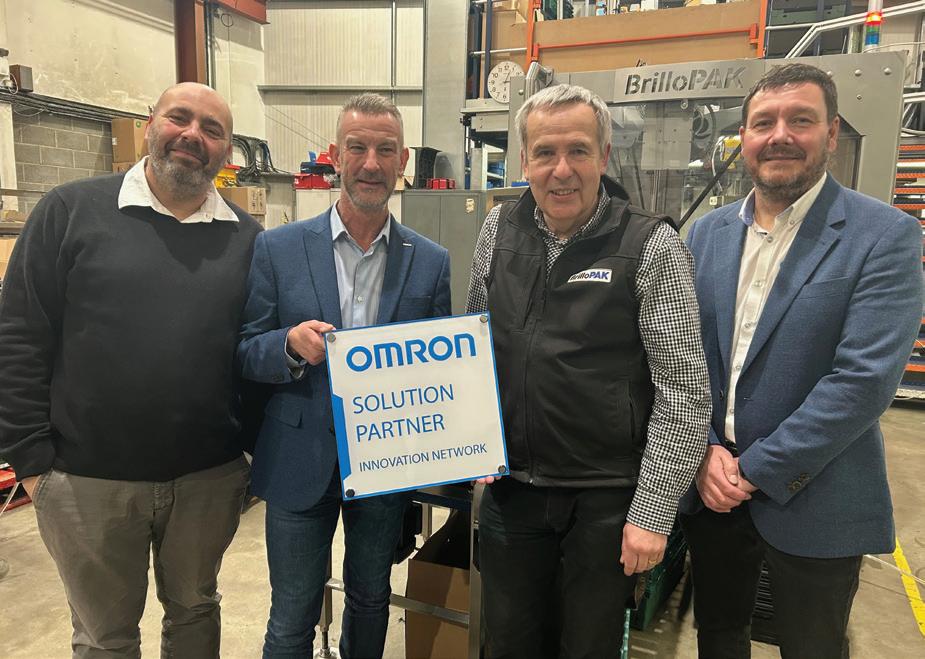
“We are excited to welcome Brillopak to our network of Solution Partners,” said Robert Meechan – System Integrator Manager at OMRON UK. “Brillopak’s dedication to innovation and customer satisfaction perfectly complements OMRON’s commitment to delivering cutting-edge technologies. Together, we look forward to delivering transformative solutions that drive operational excellence for our customers.”
www.mepca-engineering.com 7
INDUSTRY NEWS
Dewatering project wins Project of the Year award
KSB submitted the South Crofty tin mine project into the Pump Industry Awards, with Cornish Metals. In March it was announced the 2024 Project of the Year winner.
The mine ceased production in 1998 and was allowed to flood to adit level – circa. 60m from surface. Approximately eight million cubic metres of water needed to be removed to enable resumption of tin mining from the deepest levels.
Two KSB BSX463/5 950kW borehole pumps were purchased to dewater the mine, each capable of pumping up to 525m³/hr from a maximum depth of 400m. Utilising variable speed drives (VSDs), both pumps have been installed to their initial first phase depth of 365m. Dewatering started in November 2023.
The workings at South Crofty are almost 900m deep, with the primary access, New
Cooks Kitchen (NCK) Shaft, reaching 769m. NCK Shaft is the focal point of the dewatering and is directly connected to the original pump stations of the mine, with one at 350m from the surface and another at 730m. The ability to install the pumps and rising mains from the surface to dewater in a single phase to the first pump station elevation enables dewatering of the upper half of the mine without the need to conventionally re-access the shaft.

Conventional mine dewatering requires time-consuming installation/commissioning of a shaft winding system to facilitate pump installation sequentially deeper as the water levels recede. The ability to install and control the pumps entirely from the surface in advance of any shaft refurbishment
accelerates the dewatering considerably. This improves safety by allowing the re-access works down the shaft to be conducted independently of the dewatering rate. Using VSDs and the positive head of water above the pumps, considerable energy is saved.
www.ksb.co.uk
Safety laser scanner enables safety over industrial networks
SICK has enabled its smallest safety laser scanner, the nanoScan3, with its Safe EFI-Pro standard industrial Ethernet-based safe networking capability. Using the SICK nanoScan3 EFI-Pro, machine builders can more easily design responsive and productive autonomous vehicles and stationary robots through safe integration over industrial networks.
The ultra-compact SICK nanoScan3 is only eight centimetres tall, so it fits into the tightest spaces, ideal, for example, for small, lightweight automated guide vehicles (AGV) or automated mobile robots (AMR). With SICK’s robust and reliable safeHDDM (HighDefinition Distance Measurement) scanning and evaluation technology, the nanoScan3 is capable of multiple dynamically adapting protective fields to protect personnel safety, as well as providing data simultaneously for navigation and contour detection.
The SICK nanoScan3 can also be used for hazardous point, area and access protection in stationary robot applications, as well as for retrofitting into contour or tapeguided mobile vehicles. It is a Type 3 device (IEC 61496-3) and can be used in safety functions up to SIL2 (IEC 62061) and PLd (ISO 13849).
SICK EFI-pro is an EtherNet-based network for general and safety-related data communications that enables the exchange of data such as control signals, safetyrelated shut-off signals and diagnostics. Teamed with the EFI-Pro gateway of SICK’s Flexi Soft safety controller, the system facilitates simple and safe system integration via EtherNet/IP CIP Safety for SICK safety laser scanners such as the nanoScan3, as well as for third-party CIP-Safety devices like robot controllers from leading manufacturers, remote I/O modules and safety PLC’s.
Dr Martin Kidman, SICK’s Product Manager for Safety Solutions, explained:
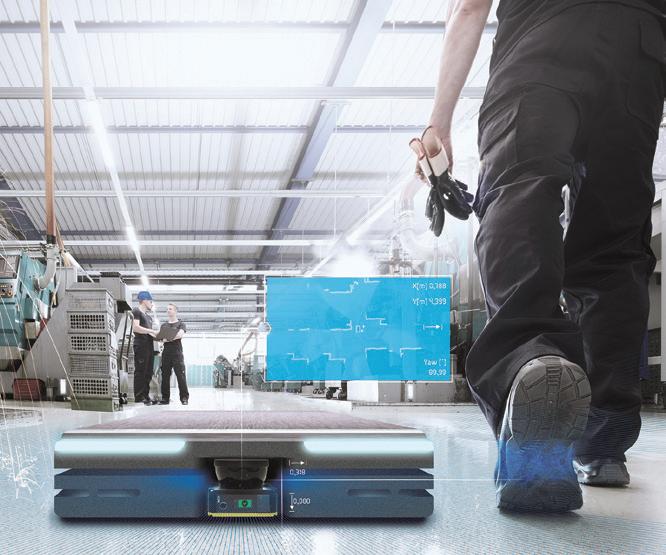
“By using the SICK nanoScan3 EFI-Pro for simultaneous protective monitoring of multiple fields, there is much less need for switching between monitoring cases, so a robot can be more responsive and efficient. Dynamic protective fields can be shorter, enabling the vehicle to be more efficient without compromising personnel safety.
“The intelligent and precise sensing capabilities of the nanoScan3 enable robust safety protection in the industrial environment, as well as the outputting of highly accurate measurement data.” www.sick.com
8 www.mepca-engineering.com
SOLUTIONS FOCUS
Advanced pumping and digital solutions at the Water Equipment Show
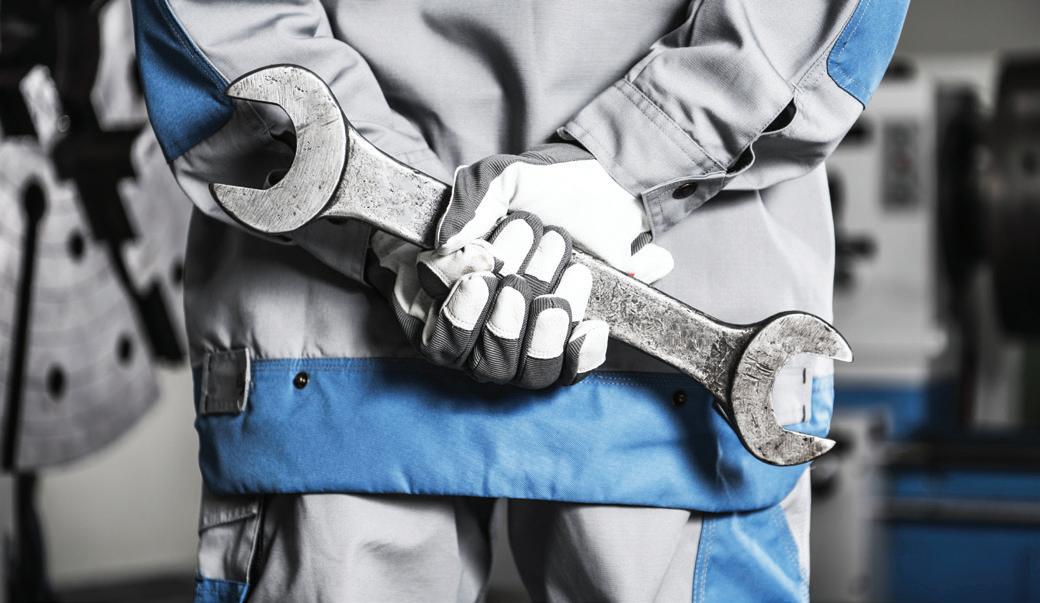
Discover SEEPEX progressive cavity pump technology, advanced Digital Solutions and CARE services at the upcoming Water Equipment Show on 16 May. As proud Gold sponsors, SEEPEX will present a wide range of innovative solutions designed for the water and wastewater industry on stand G4.
SEEPEX pumping technology is found in applications including drinking water treatment and wastewater treatment processes, specifically in the treatment of sludge and wastewater, such as sludge dewatering, mixing, drying, and incineration. Additionally, the company’s pumping solutions are used in advanced digestion, thermal hydrolysis, and chemical dosing. SEEPEX pumping technology is engineered to maintain seamless operations in an energy-efficient and sustainable manner.
SEEPEX Digital Solutions empower its customers to maximise uptime and operational efficiency through pump monitoring solutions and cloudbased services, providing robust multi-asset monitoring capabilities to unlock the potential of SEEPEX equipment, ultimately driving smoother operations and reducing overall costs.
The company’s digital ecosystem facilitates condition-based maintenance, and provides real-time updates on asset performance, enabling predictive and forward-planned maintenance.
Through its CARE services, SEEPEX ensures the continuous smooth operation of critical pumps with planned maintenance and regular updates. This proactive approach not only maintains pump availability but also lowers the overall cost of ownership.
As part of Ingersoll Rand, SEEPEX offers comprehensive solutions to optimise pumps, compressors, and blowers. Its integrated service solutions promote sustainability, efficiency, and cost reduction while minimising the carbon footprint.
Explore the latest in progressive cavity pump technology, digital solutions and CARE services from SEEPEX on stand G4, where its sister company, Robuschi, will also be showcasing its total blower capability. Alternatively, anyone not able to attend the Water Equipment Show can explore the company’s innovative solutions for the water and wastewater industry, learn more about its products and services and discuss new or challenging applications by contacting SEEPEX directly. www.seepex.com











0161 710 3346 info@pemac.com www.PEMAC.com www.mepca-engineering.com 9
SOLUTIONS FOCUS
SEEPEX’s CARE services keep your critical progressive cavity pumps running smoothly.
Exciting developments are underway in the world of robotics as Bosch Rexroth proudly unveils its latest innovation, the 7-axis collaborative robot (cobot), marking a significant stride in automation technology. This cutting-edge creation comes to the UK market as a result of Bosch Rexroth joining forces with Kassow Robots, combining their expertise to push the boundaries of what is achievable in the field.
The 7-axis cobot represents a leap forward in versatility and precision. Its extra degree of freedom unlocks myriad applications, allowing it to navigate complex tasks with unparalleled agility and adaptability. This flexibility is complemented by its impressive payload capacity, enabling the handling of heavier objects with ease. The cobot’s seamless integration into existing production lines ensures a smooth transition to enhanced efficiency without disrupting workflow.
One of the standout features of this collaboration is the incorporation of Kassow Robots’ lightweight design philosophy, resulting in a cobot that is
not only powerful, but also remarkably compact. This space-saving design opens doors to applications in confined spaces, providing manufacturers with new possibilities for automation. Designed to make set-up and programming easy and efficient, these lightweight cobots can be seamlessly relocated and redeployed to different areas and applications.
These cobots have a solid construction, reflected by an all-aluminium surface and very strong materials. The five models offer exceptional durability, ensuring optimal performance in all
VEGA is exhibiting at CHEMUK on May 15 and 16 on Stand H40 — showcasing its industryleading range of process instrumentation for measuring and controlling level, pressure, interface and density. VEGA’s devices deliver safety, value and reliability to the chemical industry.
Certified, tested and approved, they are designed to meet the safety, hazardous area and environmental standards needed in chemical manufacturing.
Visitors to the stand will be able to experience live demonstrations, including the VEGAPULS 6X non-contact radar level sensor that handles virtually any application. A level transmitter making it easier for users
environments. They offer a quick return on investment and can solve a multitude of challenges. By automating repetitive or complex tasks, cobots can help your employees create value for your business. This innovation is set to redefine automation standards, offering businesses a competitive edge in an increasingly dynamic and demanding market.
Powerful technology made simple Chemical process reliability on show
to select the right device to monitor their industrial processes. Designed for maximum simplicity with safety and security built-in. Also on the stand will be an Electronic Differential Pressure system which replaces capillaries with cables and, uniquely for VEGA, allows any transmitter design/ configuration to be mixed and matched.
www.boschrexroth.co.uk

Visitors will also be able to try sensor setup with the VEGA Tools App showcasing instrument adjustment with Bluetooth communications, and compatible with all plics sensors on the market since 2002. The app includes easy-to-use graphic visualisation of data, a menu structure identical to PACTware/DTM and back-up/ restore functions.
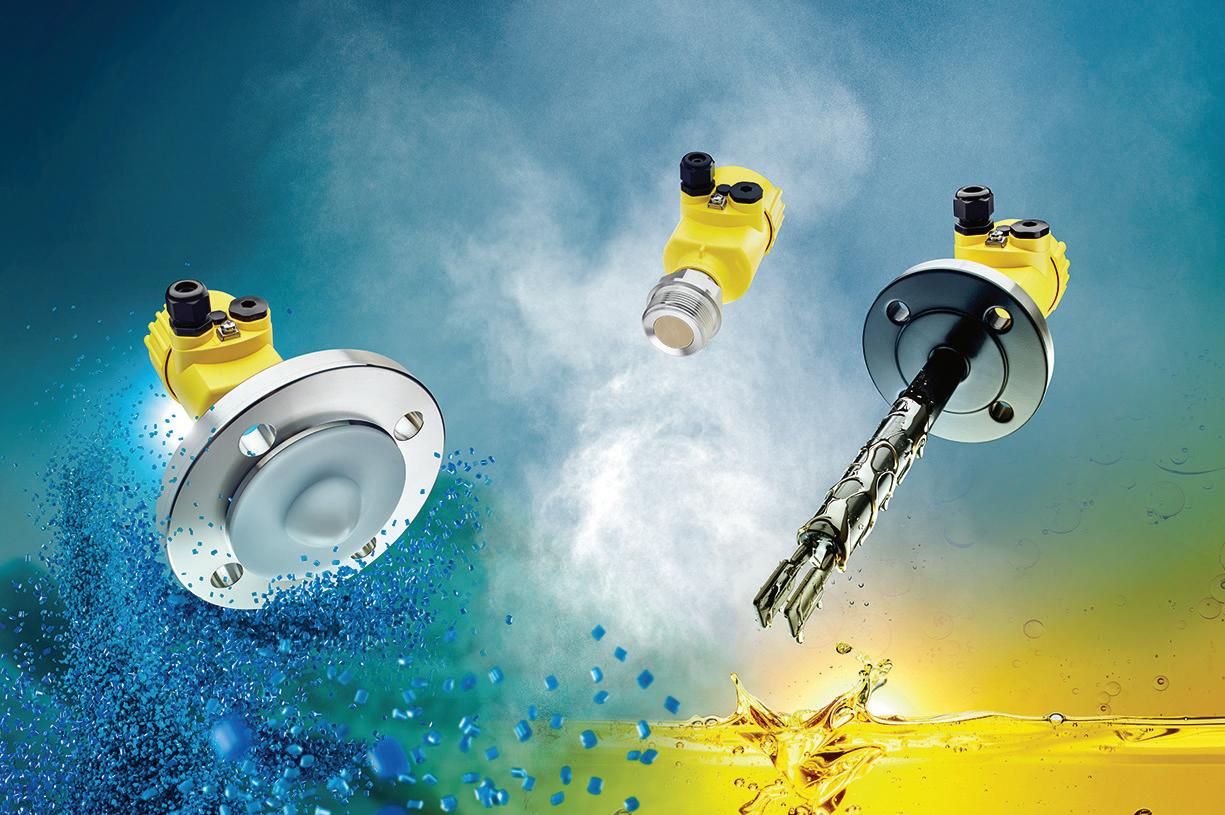
With industry expertise, quick response times, longstanding customer partnerships and proven products, VEGA crafts a winning formula for success and efficiency in process instrumentation. The company ensures satisfaction and reliability at every step of the way, providing optimum customer support, userfriendly modular devices, five-day build times and a three-year warranty.
www.vega.com
10 www.mepca-engineering.com
SOLUTIONS FOCUS
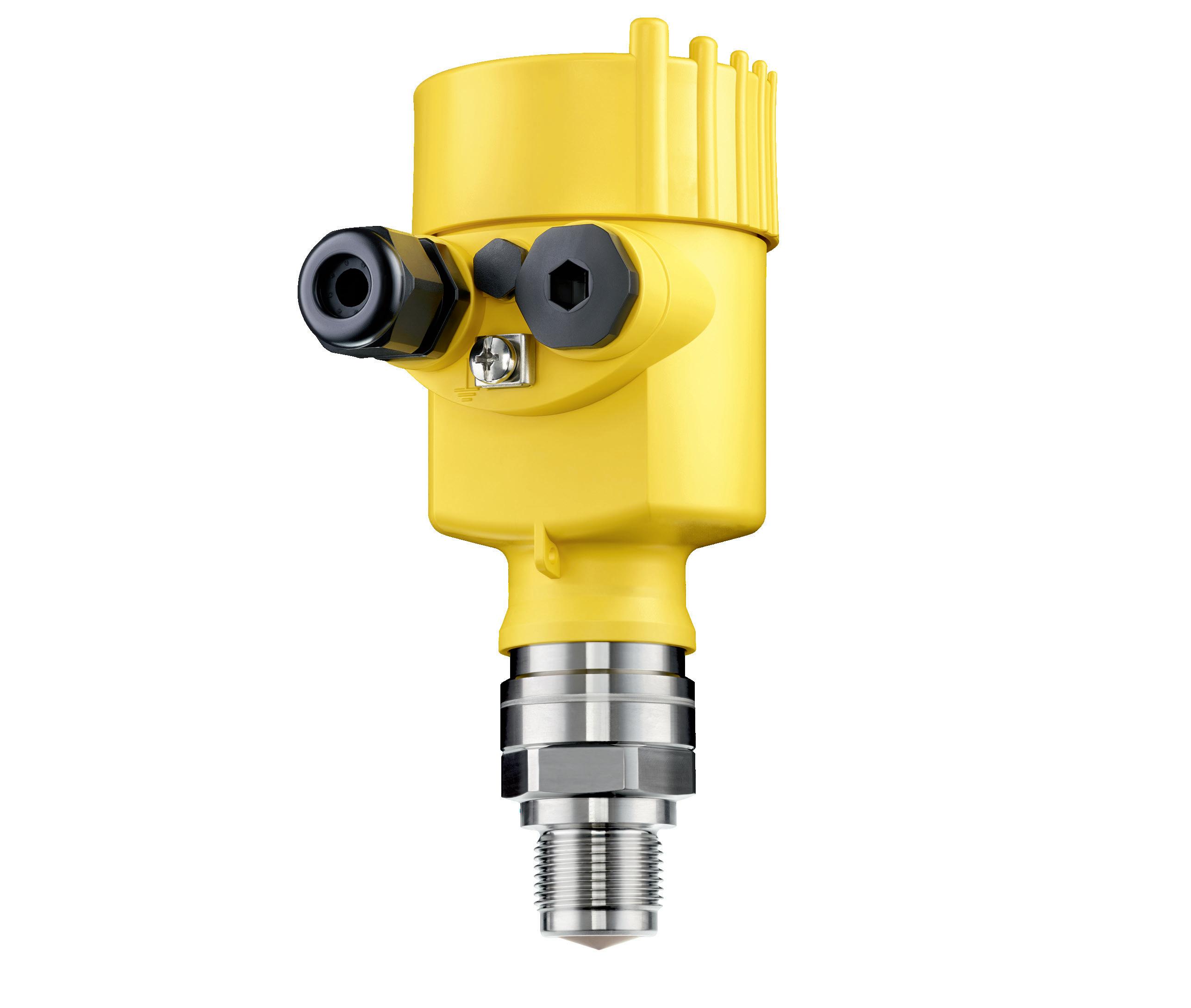
monitoring and full
are
That’s why the radar level sensor VEGAPULS 6X keeps an eye on both – continuously
ITS MAIN JOB: ENSURE PROCESS RELIABILITY. THE 6X ® . FROM VEGA. Increased
reliability
security can only be achieved if the
VEGA. HOME OF VALUES. www.vega.com/radar SUPPLY CHAIN ● PROCESS & PLANT ● LABORATORY 15th & 16th May 2024, NEC, Birmingham, UK STAND H40
process
and
level
cybersecurity
provided together.
and with industry-recognised certification.
Innovative expanded beam fibre optic connector technology
Environmentally sealed connectors and components manufacturer Bulgin has recently launched a patented new expanded beam fibre optic connector and cable management system. The technology, which is now available in the 5000 Series Expanded Beam Connector, is the result of a two-year project to produce a low-cost, sustainable expanded beam product suitable for a wide range of industries.
Expanded beam fibre optic connectors are typically used in applications where it is important to reduce the impact of dirt or contamination when joining two fibre optic cables. Accurate alignment of ferrules and minimal twisting of fibre optic cables are critical to minimise light loss and ensure efficient transmission of the signal through the connector. Bulgin’s patented technology offers a unique ferrule-lens alignment
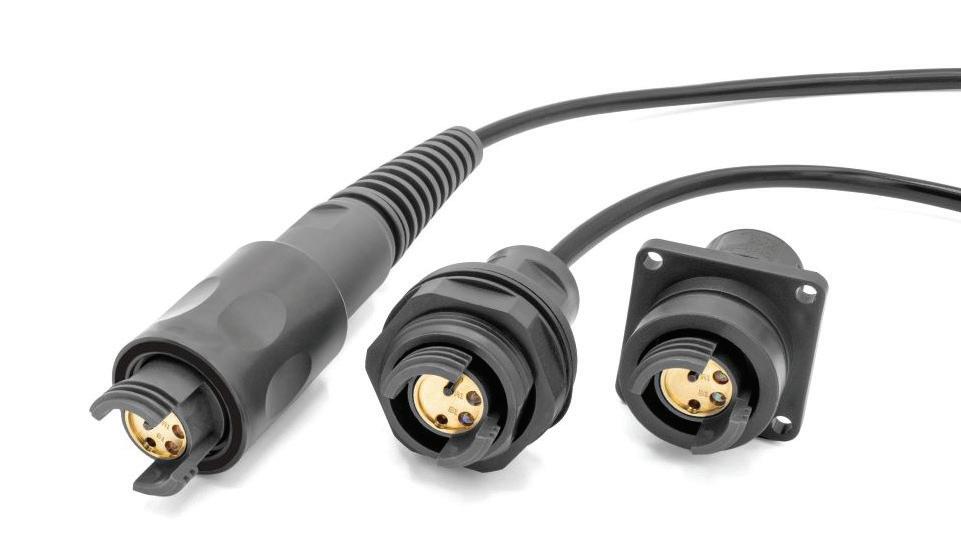
technology in combination with a cable management system to prevent twisting of the optical fibres. This revolutionary solution allows the rapid termination and repair of cables in the field, making the 5000 Series Expanded Beam Connector suitable for harsh environment applications, including military communications, mining, oil and gas, and broadcasting. It is particularly suited to temporary fibre optic set-ups that need to be quickly assembled and dismantled, such as concert venues and sports stadiums.
Thisen Bird, Associate Product Manager at Bulgin, explained: “We have successfully developed a re-deployable synthetic polymer connector system that offers the same robust level of performance as traditional
military standard connectors, but at a lower cost. This project shows what can be achieved when a knowledgeable team is given the freedom to innovate. We are proud of the trust placed in us by the company, allowing us to follow our ideas and resulting in a connector with these unique attributes.” bit.ly/5000EBC
Anti-overload device improves forklift safety
Forklift operators who are insufficiently aware of the load they are lifting and the risks that come with exceeding the forklift rated capacity not only compromise their own safety, but also place everyone working around them at serious risk.
There are several factors that can influence a forklift truck to become overloaded and these include: load centre, weight of load, lift height and the type of load. The load centre, which is the distance from the face of fork to the centre of gravity of the load plays a crucial part. The position of the load centre can also vary depending on the type of load being lifted, for example liquid loads or non-uniform loads.
Forklift operators should be competent in understanding the weight of the load. Combilift’s new product, the Combi Safe-Lift, is an anti-overload device which enables operators to avoid the pitfalls of potential overloading, which can have serious
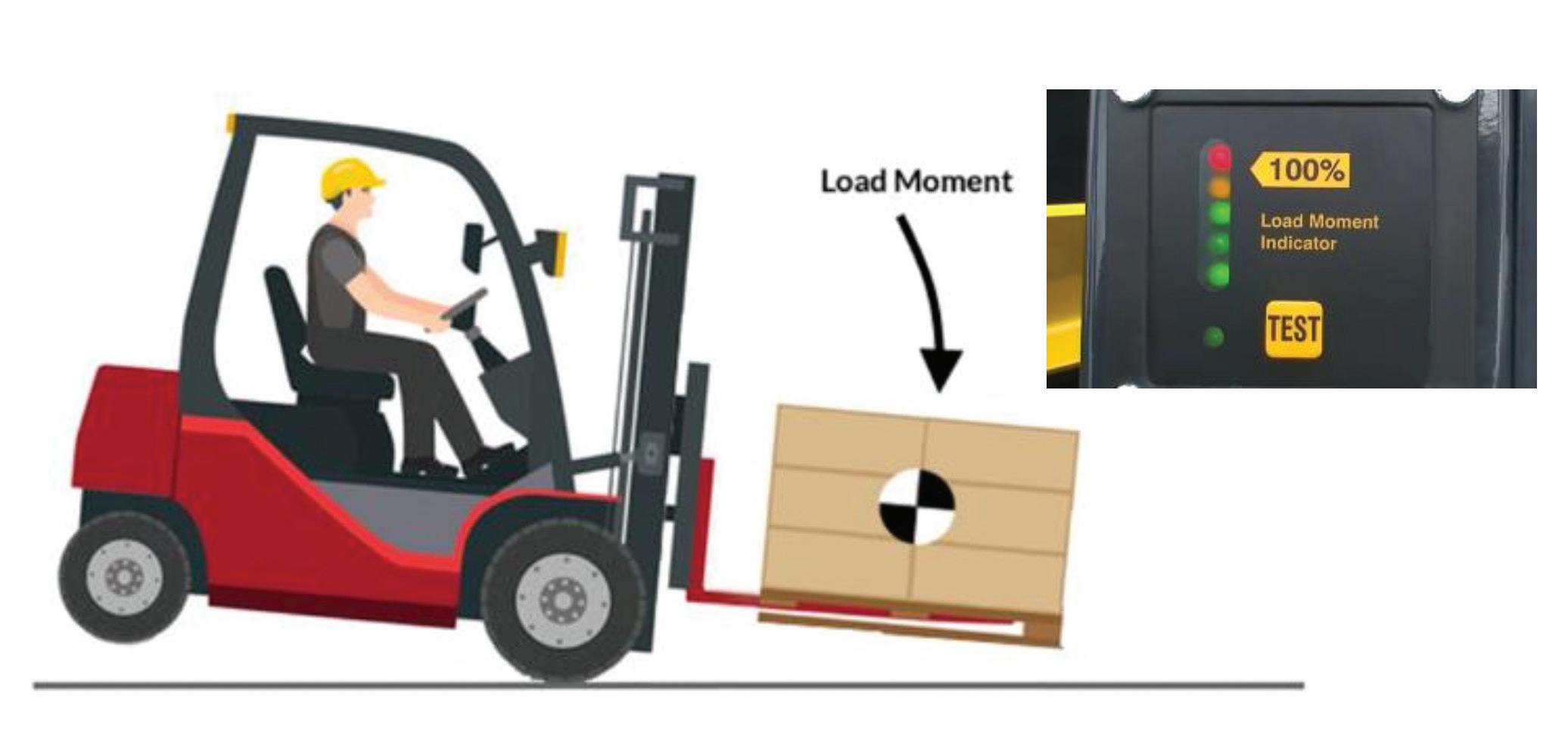
consequences if it occurs.
The Combi Safe-Lift incorporates a strain sensor on the mast section and a lift cut-out valve on the hydraulic line to disable lifting if the unit is being potentially overloaded.
There is an audible alarm which warns the operator of an overload situation and a load moment indicator is fitted to the dashboard in the cab. The operator can instantly see from the green, amber and red traffic light signalling when there is a risk of overloading or when the forks are not fully engaged for example,
and take appropriate action.
MD of Combilift, Martin McVicar, said:
“We offer the Combi Safe-Lift as an option at the moment but we believe that this simple and cost-effective system should become a standard option on all counterbalance trucks in the future. Fitting a straightforward device such as the Combi Safe-Lift is an effective way to reduce risks for the operator and other personnel, as well as to avoid product damage and costly repairs.” combilift.com
12 www.mepca-engineering.com
SOLUTIONS FOCUS
Award-Winning Performance
Innovative process automation with Baumer

Simply better with Baumer
With sensors that are smarter and more resilient we improve the sustainability in your process automation. Numerous awards and prizes prove us right. You can rely on the Baumer expertise.














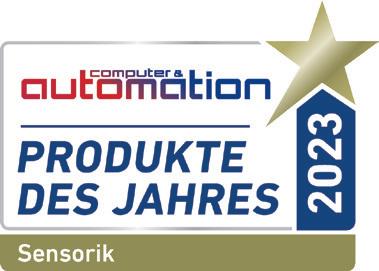

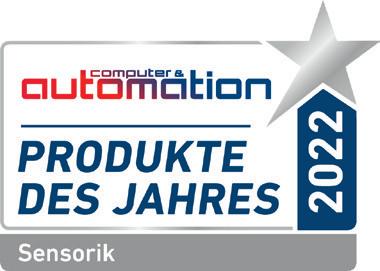
us: www.baumer.com/award-winning
Contact
PAC50 PAD20 PAD20 PL20 PLP70
The UK must automate
The UK manufacturing industry has weathered a perfect storm in recent years. Brexit uncertainties and the global pandemic threw significant spanners into its well-oiled machinery. However, amidst these challenges lies an opportunity. Gambica’s Nikesh Mistry explains how the UK manufacturing industry is showing signs of a robust recovery, and with a strategic push towards digitalisation, it has the potential to become a global leader in the future of manufacturing.
The impact of Brexit on manufacturing was a doubleedged sword. Disruptions in supply chains and trade friction with the EU initially caused a dip in production. However, it also forced manufacturers to re-evaluate their reliance on overseas suppliers and logistics and build resilience to prepare for future disturbances. This has led to a renewed focus on domestic automation solutions, with companies investing more in robots, cobots, and other technologies to streamline in-house operations and reduce dependence on external factors.
The pandemic further highlighted the need for automation. Labour shortages and social distancing measures necessitated the adoption of automated processes to maintain production efficiency. This has led to a surge in the automation market, which is evident from our statistical collections at GAMBICA. Companies are increasingly embracing technologies and automation solutions to optimise production lines, predict maintenance needs, and improve overall productivity.
While the recovery is promising, there are still hurdles to overcome. A significant skills gap exists in the workforce, with a lack of qualified personnel to design, implement, and maintain complex automation systems. The government and educational institutions need to work together to create training programs that equip workers with the necessary digital skills to thrive in this new industrial landscape. GAMBICA has already begun to help this journey by forming the University and Industry Collaboration Council, which helps link our Academic and Industry members together to work on areas of influence such as collaborative research, STEM, policy and careers.
Another challenge often misconstrued is the initial investment cost associated with automation. While the long-term benefits are undeniable, smaller businesses might struggle with the perceived upfront expenditure. Government initiatives like the Made Smarter scheme, which provides financial and technical assistance to SMEs on their automation journey, are a step in the right direction, but more needs to be done to bridge this financial gap. It can also be a question of the right knowledge and understanding of what automation and digitalisation mean, as it does not always require a large initial investment to automate processes.
Looking towards the future, the UK has a unique advantage: its strong digital infrastructure. The country boasts a vibrant tech sector and a pool of talented engineers and innovators. By leveraging this expertise and investing in research and development, the UK can become a hub for cutting-edge automation solutions.
Imagine a future where factories operate with minimal human intervention. A future where AI-powered robots seamlessly handle complex tasks while intelligent systems optimise production processes in real time. This vision might seem futuristic, but with the right focus on digitalisation, it is well within reach for the UK and essential if we are to maintain our competitive advantage around the world.
While the UK is currently very much behind the rest of the world in its adoption of automation and robotics, we are certainly on our way!
This digital transformation will enhance efficiency and productivity and unlock new possibilities. With automated production lines, manufacturers can adapt to changing consumer demands faster and produce smaller, customised batches more costeffectively. This agility will be crucial in a competitive global market. At the moment, we are aware of mass customisation and newer generations requiring full customisation of their products, and along with that, the likes of same-day and next-day deliveries are creating a culture that requires immediate results. As a manufacturing sector, we must keep up with this to avoid falling behind.

The road to a fully automated future in manufacturing is paved with challenges, but the UK possesses the necessary ingredients for success. A skilled workforce, a robust digital infrastructure, and a growing automation market paint a promising picture. By addressing the existing hurdles and embracing digitalisation wholeheartedly, the UK manufacturing industry can not only recover from past shocks but also become a global leader in the exciting future of intelligent manufacturing.
14 www.mepca-engineering.com OPINION
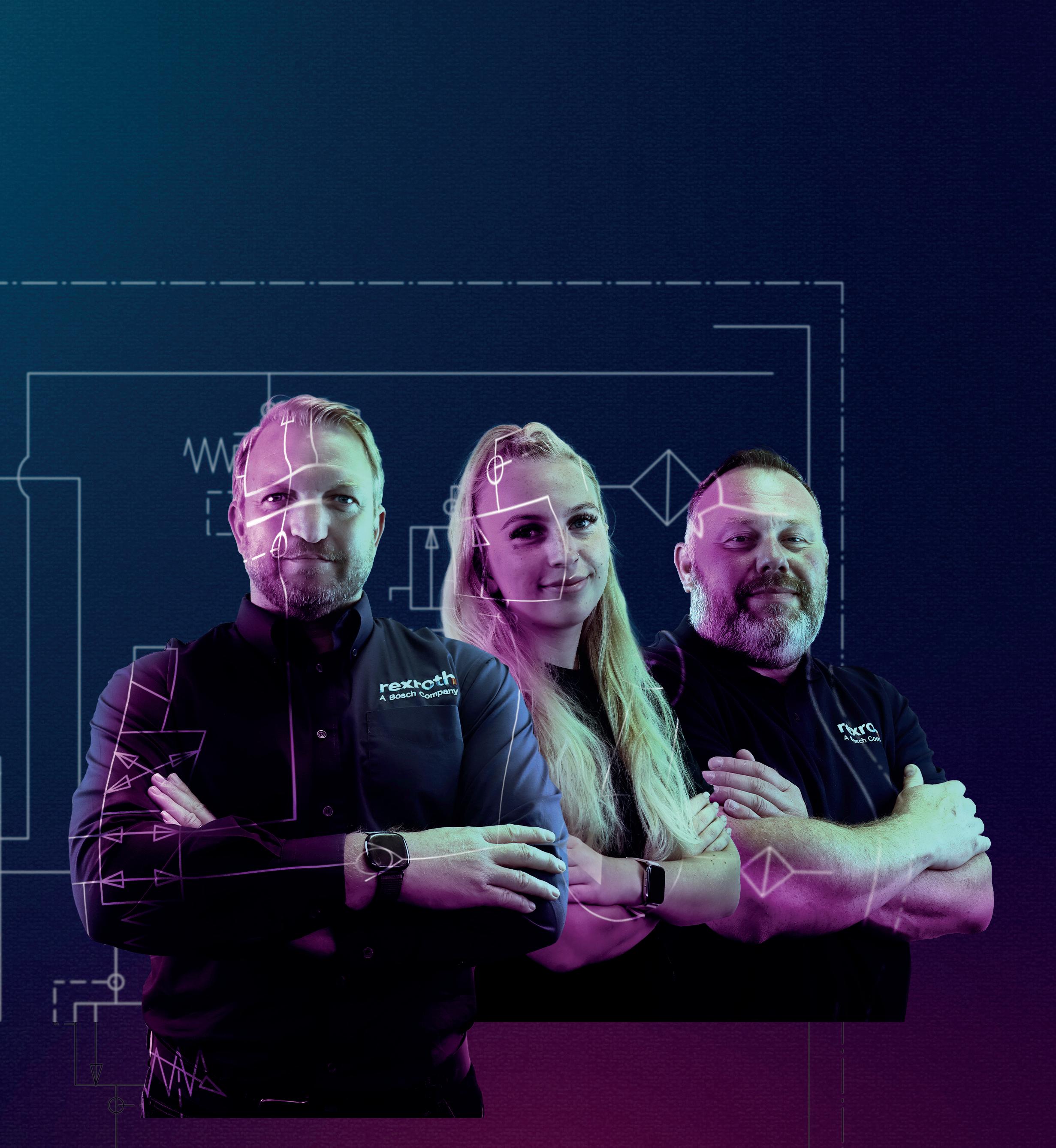

Unlock Efficiency with our sales@boschrexroth.co.uk www.boschrexroth.co.uk Technical excellence meets unbridled enthusiasm. Join forces with our Hydraulic Heroes to unlock the future of industrial engineering. Simplify Complexity, Empower Efficiency
A new approach in an antiquated industry
Andrew Jones, Technical Director at Axair Fans UK, explains how he believes adaptability and collaborative working are key to success for industrial businesses today, especially where the widespread skills shortage remains a fundamental challenge.
Based on data, 90% of large and more than two-thirds of small to mediumsized enterprises are facing skills shortages in engineering. In our industry, the problem is far more specific; it’s a lack of in-depth knowledge and application of physics to understand pressure development, air movement behaviour, the infinity fan laws around power, pressure and volume, and a basic awareness of chemical properties. These are the common things that our customers, in particular, struggle with. In education, this type of knowledge is typically taught only in theory, yet applying that theory to problem-solving is a more difficult skill to ascertain. As a child, I was born with what the industry calls “the knack”, a natural ability to understand and apply concepts quickly and easily, but my formal education was not suited to my skill set.

Collaboration with suppliers and manufacturers is key, the new approach in an antiquated industry. It’s ignorant to think that companies should have an in-house team that makes technical calculations, designing in isolation with the desired outcome of delivering the best system that performs at the optimal level for the customer project. Minimising disruption by working with external experts in niche areas is one way to make an instant positive impact on your business, with no training or recruitment required. Incredibly valuable if those businesses are working on time-sensitive projects or need to avoid any impact on production delays.
This brings me to qualifications and skills being different. These transferable skills are so specific that companies simply cannot get that experience from looking at employees’ formal qualifications or by making hires based on statements on paper. Especially, as with my experience, people sometimes don’t find their feet until later due to a lack of direction. As the technical director of a fan business, I’m pleased that we have a forward-thinking approach, removing the barriers that can obstruct people from entering the profession and allowing them to reach their potential and rise to the top. We hire on ability; through having conversations and interpreting their understanding and approach to problem-solving, we quickly
determine if the knack is there. Out in the field, there are striking gender differences, especially in more technical roles. I’m proud that we have an equal balance of male and female employees. Comparably, our team is getting younger, going against the grain on the issue of an ageing workforce in the field. Today’s industry employment reports show that 19.5% of engineers working in the UK will retire by 2026, exacerbating the skills shortage.
The continued challenge for manufacturers is evident, with 98% of companies expressing concerns that their business will suffer if they can’t hire the right engineers or technically biased employees. New graduates often struggle to apply their theory to actual problems as their education has not been geared towards problemsolving. This leaves that seismic shift when experienced engineers at the top are replaced with new engineers.
It’s a matter of adapting or perishing for businesses that rely on their technical product selection teams. Adapt by working collaboratively and utilising the skill sets of other businesses, such as Axair, that can understand the industry needs and anticipate solutions, suggesting potentially creative business-enhancing fan components that could create opportunities for greater market share and customer satisfaction. Or perish by losing competitive advantage by falling behind on technological advancements and relying on in-house teams that lack the application knowledge without giving them support from these experts. No one ever beats a competitor by staying the same; speed and adaptability are the new key performance indicators in today’s economy. The antiquated approach of we’ve always done it this way simply doesn’t hold weight.
www.axair-fans.co.uk
16 www.mepca-engineering.com OPINION
Andrew Jones, Technical Director at Axair Fans UK
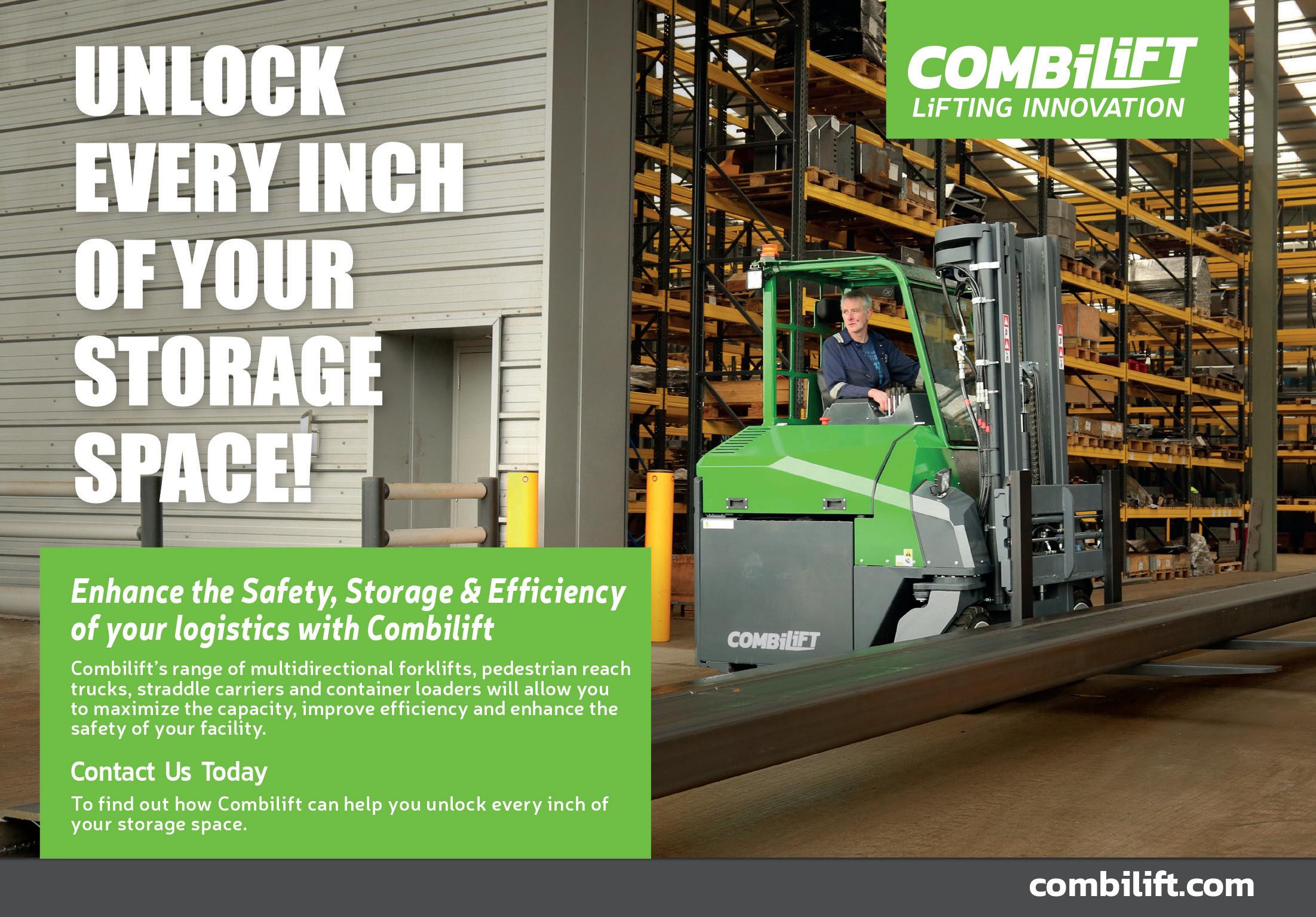

www.mepca-engineering.com 17 Choosing the HGM-S boiler feed pump in ring-section design is an easy decision to make. It offers maximum operating reliability, efficient hydraulic systems and ease of service as well as a five-year warranty, and all this at a very attractive price! QUALITY PAYS OFF. GUARANTEED. Find out more at www.ksb.co.uk - 01509 231872 - sales@ksb.com MEPCA; 180x126; May 2024.indd 1 11/04/2024 11:14:45
Sensors for sustainability
Sustainability is a key issue for every business and is a particular concern for those in the manufacturing sector. But when thinking about sustainability solutions, sensors may not be particularly high on most people’s list of things to consider. However, that could be a mistake, as Tim Dodd at ifm electronic, explains.
It would be hard to overestimate the benefits to a business operating sustainably. Sustainability means reduced costs, lower environmental impact and enhanced reputation with existing and potential customers. But when it comes down to hard facts, what does sustainability actually mean? A simple but useful working definition is the efficient and optimally frugal use of materials, labour and resources, bearing in mind that the most important of the resources is likely to be energy.
What does all this have to do with sensors? Most of us would likely agree that using materials and resources efficiently depends on accurate and reliable control. And there’s a very old cliché which says what you can’t measure, you can’t control. This statement may be old, but it’s undoubtedly true, and, of course, to make measurements, you need sensors. Ultimately, therefore, it would not be unreasonable to claim that sensors – or at least the data they provide – are the foundation stones of sustainability.
Level
Surely, though, modern manufacturing plants will already be equipped with all the necessary sensors, so what scope is there for using sensors to enhance sustainability? Well, let’s take a look, starting with something very simple: level sensors in liquid storage vessels.
It may well be that such vessels are equipped with very simple high- and low-level sensors to indicate when the tank is almost empty and when it is full. That could be good enough to keep the plant working, but might it
not be useful to know more about the level in the vessel? Is there, for example, an optimum level at which the machine fed by the vessel works best? Or is the level in the tank dropping more quickly than usual, suggesting the possibility of a leak?
To obtain information like this, a sensor that provides an output proportional to the actual level in the vessel is needed. Often, this can be arranged very simply by using a pressure sensor installed at the base of the vessel, which, in effect, provides a continuous readout of the vessel’s weight plus its contents.
Sometimes, however, a more sophisticated solution, such as a radar level sensor, may be needed. Radar sensors can measure liquid levels with millimetre accuracy
at a range of up to 10m from the surface of the liquid. This makes them ideal for hygienic applications as they never come into contact with the liquid they are monitoring. Another benefit is that they are typically installed above the vessel rather than at its base, and so are usually very easy to retrofit.
Temperature
Moving on to temperature, it’s not hard to see that accurate temperature control, especially when temperatures significantly above or below ambient are involved, is important for maximising energy efficiency. Accurate temperature control can also lead to improved product quality and reduced wastage. Fortunately, modern temperature sensors are capable of very high accuracy and are available in a wide range of types and sizes. This means it’s often worth reviewing existing temperature control systems to see whether energy-saving improvements can be made at no more cost than fitting a replacement sensor.
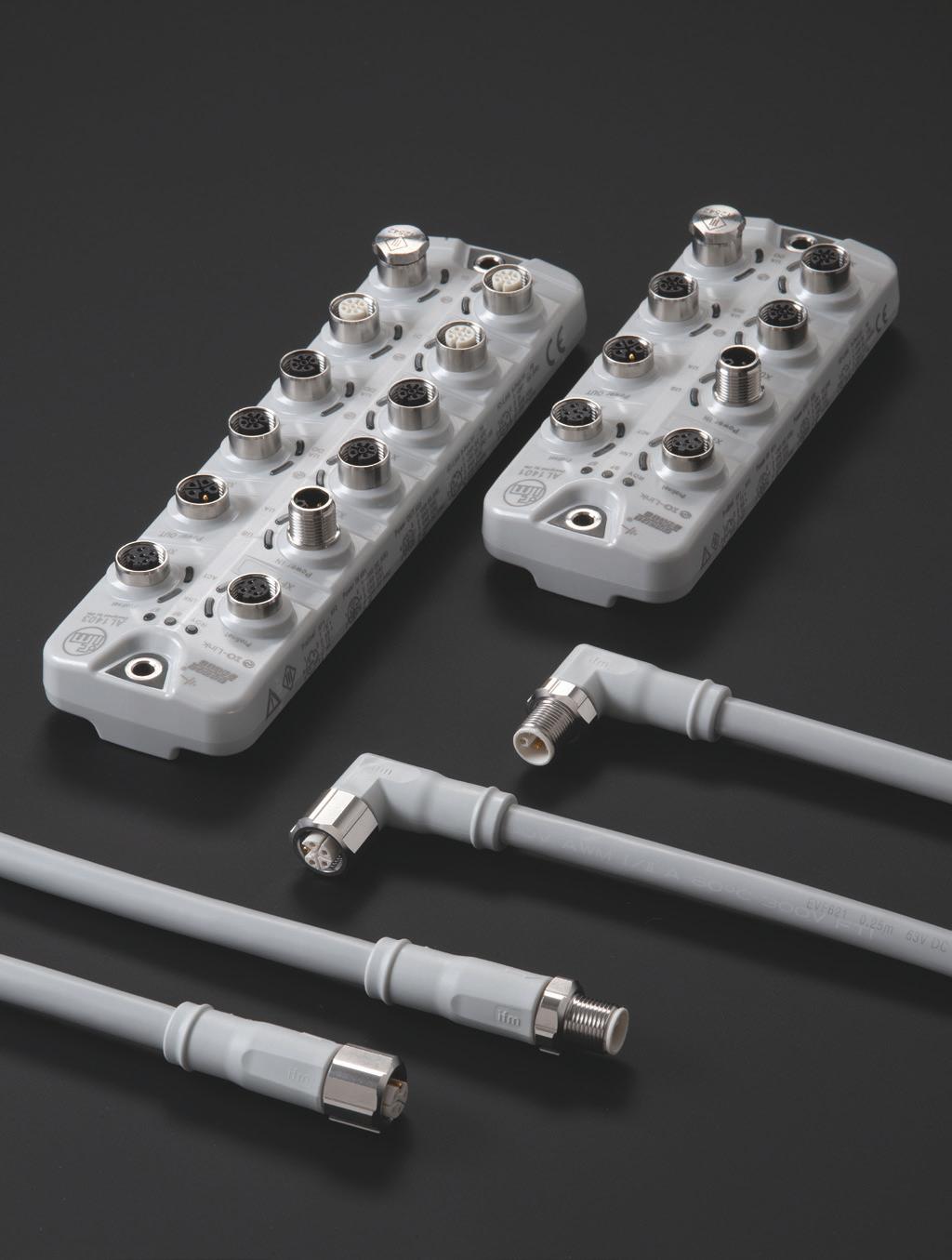
Pressure
Pressure is another process variable that’s worthy of attention. Pressurising vessels and plant – or generating vacuum – uses energy so, as with temperature, accurate control is crucial for energy efficiency. However, with pressure, there is another aspect: a slow loss of pressure may indicate a leak that would otherwise be hard to spot. The substance leaking may be valuable, dangerous to people and the environment or even valuable and dangerous. Therefore, a new or additional pressure sensor could quickly repay its small cost by revealing such a problem.
18 www.mepca-engineering.com COVER STORY IO-Link technology minimises the need for additional field wiring.
So much for directly monitoring process variables, but what about monitoring machines? Here, one type of sensor that isn’t as widely used as it deserves is the vibration monitor. This can be a valuable addition to almost any type of motor-driven plant or machine and is usually easy to retrofit. The sensor will allow any anomalous increase in vibration to be swiftly detected, and this will almost always suggest that problems are developing. If increased vibration is, for example, a sign that a bearing is starting to fail, the machine will be using – and wasting – more energy than usual. It will probably also be heading for a complete breakdown with loss of production and, in many cases, scrapped products and wasted raw materials.
Quality
With scrapped products in mind, let’s move on to quality control. Most production lines incorporate some form of quality control, but the degree of sophistication varies greatly. The ‘gold standard’ for automated quality control is often a sophisticated vision system and associated computing power, but these systems can undeniably be costly. Fortunately, there are now simpler, more affordable systems that, in appropriate applications, are very effective. The reduction in cost also means that checks can be carried out more frequently across the whole manufacturing process.
An example is a laser line-scan system, which uses a laser beam to measure and store the profile of a known good component. Profiles of subsequent components are compared with this, and even small deviations can be detected. This means that problems due to, for example, worn tooling can be detected before they reach the stage where components have to be scrapped or expensively reworked.
Another alternative to a full vision system is a 2D vision sensor. In addition to being less costly, the best of these are very easy to set up, taking no more than a few minutes in straightforward applications. Despite their ease of use, these versatile devices can check patterns, shapes, areas, dimensions, contours and even target contrast, either as individual parameters or in combination. Once again, this allows developing problems to be spotted early before they lead to scrapped products and wasted materials. Adding or upgrading sensors in manufacturing plant clearly has the potential for gaining sustainability benefits, but there’s
an elephant in the room! How should all of the additional data produced by these new and/or enhanced sensors be collected and handled? The answer to the first part of the question is relatively simple: networked sensors using the well-established IOLink technology will minimise the need for additional field wiring. They will also ensure that all the data collected by the sensors is transmitted reliably and without interference or distortion to the plant control system.
Beyond the sensor
That in itself may be enough for considerable sustainability benefits to be achieved, but thanks to new technological advances, even more can be done.

Until very recently, converting the huge amount of data collected by sensors in modern plants into a usable and useful form required specially developed plant-specific software; the expense of developing this software was rarely justified. However, easy-to-use yet versatile software solutions, such as ifm’s moneo system, are available now. These incorporate powerful ‘wizards’, allowing users to configure them easily to suit their requirements.
These novel systems typically provide flow modelling, automatic alarm generation, and fully customisable user interfaces that allow plant and machine information to be presented in numeric, graphical or dashboard formats, according to the user’s requirements. Also provided are powerful features for analysing and summarising the data collected by the system, which makes it easy to spot trends over time that may reveal slow declines in plant performance
and efficiency, leading to energy and material wastage.
Modern sensors provide the information needed to achieve efficient, sustainable operation in machines, plants and processes of all kinds. IO-Link provides an effective and convenient way of collecting the information from the sensors and feeding it to the control system, and the new generation of configurable plant monitoring software allows even more value to be squeezed from the data by converting it into useful, readily accessible information.
So, when you’re next thinking about upgrading the sustainability of your operations, keep sensors in mind. And if you’d like additional guidance on choosing the right sensing technology for your specific applications, don’t hesitate to contact ifm electronic.
www.ifm.com www.mepca-engineering.com 19 COVER STORY
Vibration sensors can give early warning of impending issues in motor-driven systems.

Focus On: Materials Handling & Storage

P24 – Revolutionising pallet handling with AI
explores the latest news, innovations and applications in materials handling & storage
MEPCA
High-density storage for manufacturing
Edward Hutchison, Managing Director of BITO Storage Systems, looks at the high density storage options manufacturers have available, to ensure production lines keep moving.
Without effective and reliable storage and order-picking systems, production and assembly lines will grind to a halt. Just In Time (JIT) supply of parts, semi-finished products and raw materials to production machines requires flexible and scalable warehouse storage and retrieval systems. They can be either manual or automated.
In factories, space is generally prioritised for manufacturing processes, but sufficient stock will generally be needed in close proximity to production to keep lines flowing. Having denser storage often means parts can be stored closer together to reduce order picking times and provide faster supply to the line.
Determining storage density will depend on factors such as stock profile, investment costs of the racking installation; handling/ transport costs per item, which includes the cost of internal transportation and labour; handling capacity measured in picks, i.e., the quantity of items retrieved per unit of time; and optimum utilisation of the available headroom and footprint of a warehouse or storage area.
If goods do not have to be retrieved in a specific sequence, then drive-in racking is an option for storing and retrieving huge stock volumes. This is particularly relevant for large volumes of the same line item, pressuresensitive goods and unstable pallet loads, where LIFO (Last In, First Out) works.
An alternative option for
optimising space is to install mobile pallet or cantilever racking, where the rack moves to open up a single aisle at the required location. It can improve storage capacity by up to 200% on the same footprint or reduce floor space occupation by 50%. However, pickers must wait for the racks to move and the aisle to open up, which is not ideal for items picked frequently.
For frequent picking, pallet and carton live systems create concentrated storage and pick faces within a given footprint. With live storage, each product line can be presented in a separate flow lane and is directly accessible at the pick face. Cartons or pallets are fed into the flow lane from the rear, and move on rollers to the pick position at the front. Being able to hold sufficient replenishment quantities helps to guarantee constant product availability. In addition to providing compact storage on a small footprint, live systems work on the FIFO (First In, First Out) principle, which allows easy control of production batches and sell-by dates. Separate loading and picking aisles
increase operator performance and can improve safety by separating replenishment stock carried by lift trucks and pedestrian order picking in different aisles.
This kind of ‘mechanical’ solution often strikes the right balance between investment, density and speed for fast moving parts. Adding simple automation technologies such as pick-to-light and voice picking will further improve accuracy and throughput speed.
Good use of vertical capacity and floor space can be made by using high-rise narrow aisle racking. As a rule, narrow aisle facilities are serviced with man-operated stacker cranes or order picking trucks. This allows the picking of smaller unit loads from all racking levels. Guide rails and inductive steering ensure that service vehicles always keep the ideal distance to the installation. Using VNA (Very Narrow Aisle) trucks will allow aisle widths typically between 1.6 and 2m, and the trucks generally operate up to approximately 15m high. Going higher means broader trucks and, therefore, wider aisles. High bay automated warehouses served by stacker cranes can theoretically attain heights in excess of 40m, though just over 30m is more common. These generally create the highest density solutions.
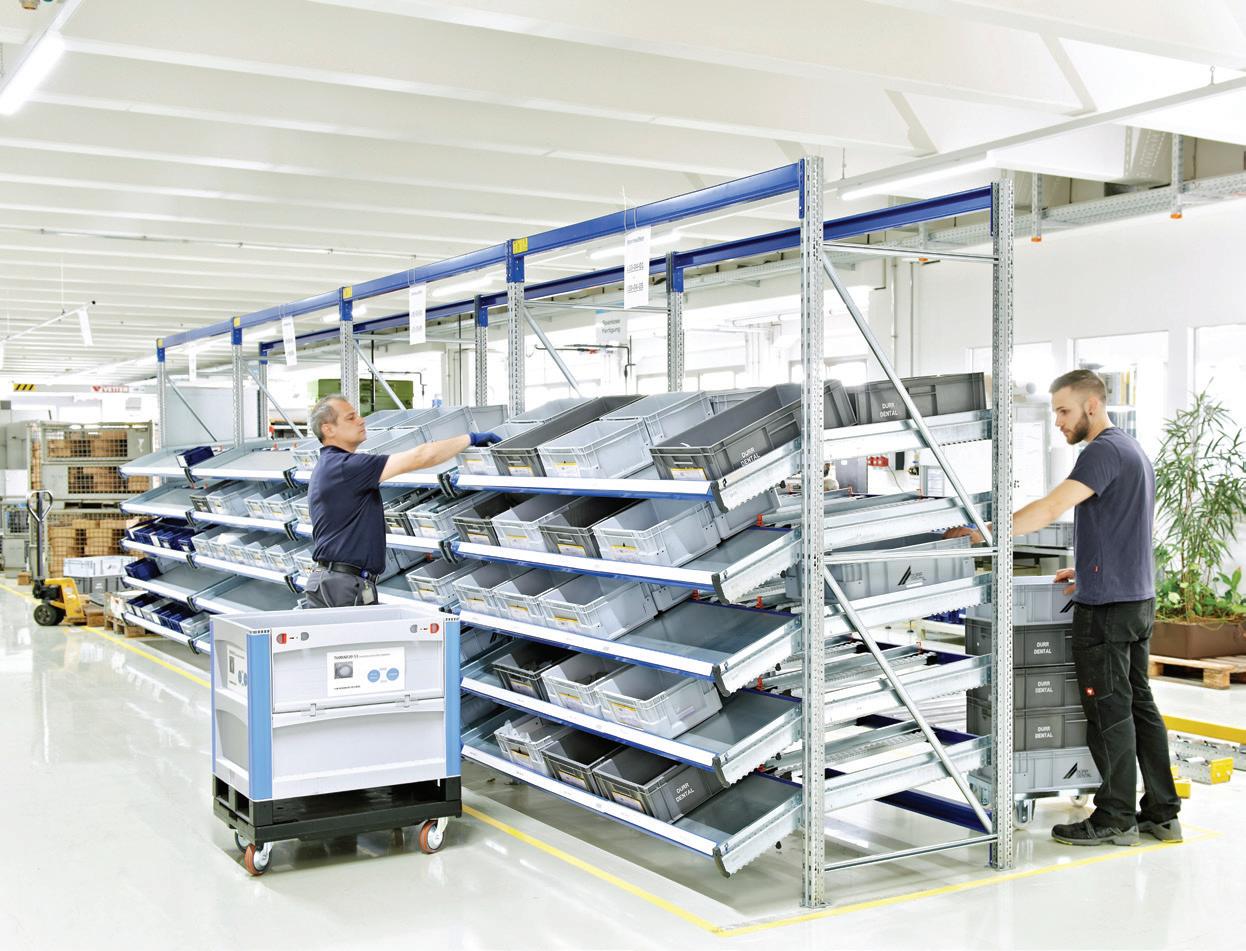
Finally, it is important to source solutions to support production lines from a supplier that can provide expert advice and the comprehensive range necessary to design and instal an appropriate high density storage solution to meet any challenge a manufacturer might have.
www.bito.com
22 www.mepca-engineering.com MATERIALS HANDLING & STORAGE
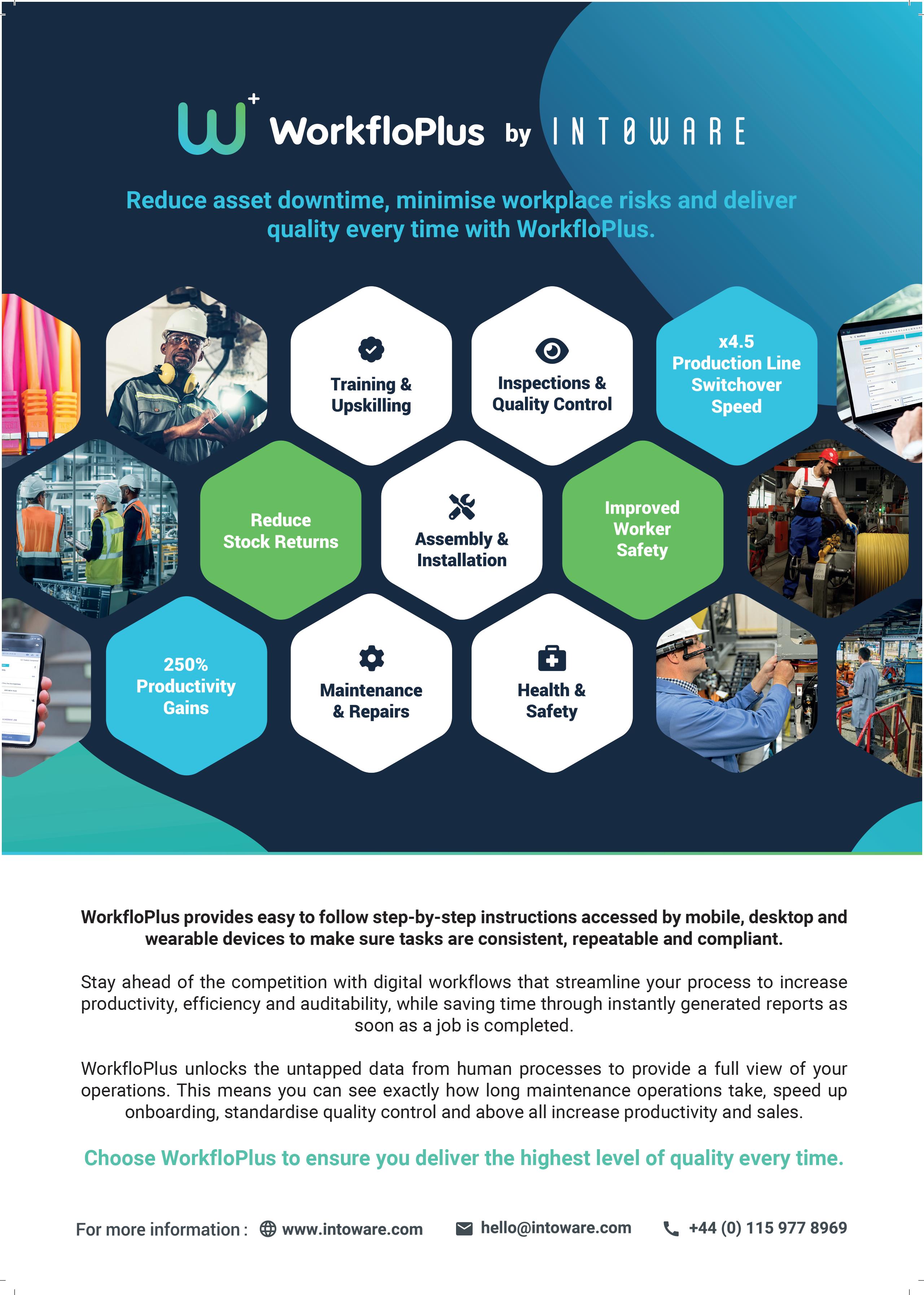
Revolutionising pallet handling with AI
Through the application of AI-based pallet detection and obstacle avoidance, the new MiR1200 Pallet Jack from Mobile Industrial Robots (MIR) sets new standards for the material handling of palletised goods and solves many of the challenges enterprises face when trying to add automation to dynamic and complex environments. The addition of this autonomous pallet jack to the product line allows MiR to be the one-stop shop for autonomous material handling at factories and warehouses.
Mobile Industrial Robots (MiR) has launched the MiR1200 Pallet Jack autonomous mobile robot (AMR). With advanced AI pallet detection, powered by NVIDIA Jetson AGX Orin, MiR1200 Pallet Jack uses 3D vision to identify pallets and pick up and deliver pallets with unprecedented precision.
“The MiR1200 Pallet Jack is our latest effort to push the boundaries in autonomous material handling. We believe that the built-in AI detection system is a significant improvement over older detection technologies. Our approach will reduce pickand-place cycle times, deliver best-in-class pick accuracy and allow us to continuously deliver advanced AI-based functionality and value to our customers,” explained Mads Paulin, VP of R&D at MiR.
Seamless integration
Designed to integrate seamlessly into existing MiR AMR fleets and interoperate with MiR’s deck load AMRs, the MiR1200 Pallet Jack is a perfect match for large-scale enterprise customers who typically operate more complex workflows with larger fleets and multiple sites. These customers can now turn to MiR as a one-stop shop for material handling.
“As the latest addition to MiR’s wide range of AMRs, the MiR1200 Pallet Jack adds a new application area to our existing solutions for transportation scenarios from small to heavy loads, pallet transportation, and more. All robots can be seamlessly managed and integrated via our industryleading fleet management tool, MiR Fleet and monitored and optimised using MiR

Navigating complex environments
Thanks to its 3D vision capabilities, the MiR1200 Pallet Jack addresses the challenges many enterprises face with resource-intensive material handling, especially in complex environments that make automation difficult and where automation is needed due to increasing labour shortages.
The MiR1200 Pallet Jack can dynamically modify its route to avoid obstacles such as loose objects on the floor or overhead obstacles. It processes a large number of cameras and lidar data in real time by accelerating the full stack on the GPU and several other processors built into the NVIDIA Jetson AGX Orin module. Its ability to navigate effortlessly in tight spaces with minimal changes to the existing infrastructure makes it the perfect fit for optimising logistics efficiency and ensuring timely delivery of pallets.
“With MiR1200 Pallet Jack, we have developed a rugged AMR pallet jack that will work in existing customer sites that
present unique environmental challenges for automation. In the design of this robot, we have leveraged the accumulated expertise in software from MiR, and high-payload AMRs that are the result of MiR’s 2022 merger with AutoGuide, another Teradyne-owned company. In addition, the MiR1200 Pallet Jacks’ robust tricycle drive system is developed through a partnership with Logitrans, which has 80+ years of experience with materials handling,” continued Jean-Pierre.
Safety above everything else
The MiR1200 Pallet Jack is not only about speed and efficiency. Safety remains a top priority.
“Safety is in the DNA of every MiR product. The MiR1200 Pallet Jack complies with the latest product safety standards, including ISO3691-4. The fusion of multiple sensor platforms and top-tier safety features provides a much safer alternative to traditional forklifts, pallet trucks and manual pallet jacks,” concluded Jean Pierre.
Insights,” added Jean-Pierre Hathout, President of MiR.
www.mobile-industrial-robots.com
24 www.mepca-engineering.com MATERIALS HANDLING & STORAGE

01254 686 100 enquiries@deltaplus.co.uk deltaplus.eu
The safe key for automated intralogistics processes
Euchner’s CKS2 Key System streamlines operations and enhances employee safety in automated logistics centres, offering a seamless, scalable solution that eliminates the need for complex key exchange boxes. This innovation, paired with the MGB2 Modular safety door system, ensures a safer environment.
Automating warehouse and intralogistics processes is becoming more important for productivity and safety objectives alike. Besides trouble-free operation, safety takes top priority – the tall storage systems used today are highly automated, and employees must be kept out of the danger zone. However, they must still be able to access the interior safely if an unplanned standstill should occur or to undertake maintenance. This calls for reliable safety engineering capable of safe installation lockout and rapid restarting.
The MGB2 Modular has proven its worth over many years in sectors as diverse as the automotive and logistics industries, where it secures safety doors and fences on machines and installations during dangerous machine movements. This modular safety door system from Euchner consists of a locking module; integrated submodules with controls and indicators for pushbuttons, selector switches, key-operated rotary switches or emergency stop buttons; any required expansion modules and various bus modules for connecting to PROFINET/PROFIsafe or EtherCAT P/FSoE. It works especially well when combined with the CKS2 safe access-key system.
One key, many functions
The new CKS2 key system can be used for machine and installation lockout and starting, for assigning authorisation to select an operating mode, or as a key transfer system. The system guarantees maximum safety thanks to its highly coded RFID keys. The CKS2 can be used in an installation either individually as a compact system with integrated evaluation electronics or separately as a submodule in the MGB2 Modular door locking system. This opens up a host of new applications to users – as well as numerous combination options.
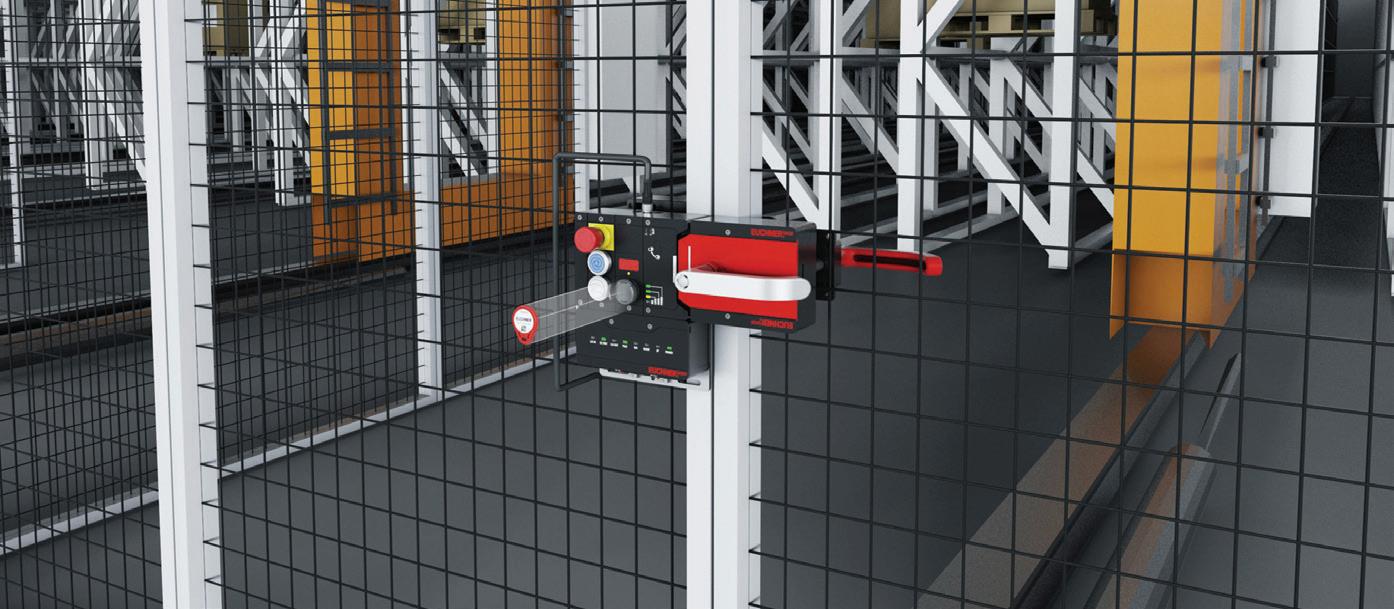
The CKS2 system is readily adaptable to individual requirements. Depending on the specific application, the key can be left in place or removed during automatic operation. When the system is used for locking out, the installation cannot be started without the key, for example. In other words, the key stays in the key adapter station during operation. The key is removed to stop the installation. Only then will a dangerous zone become accessible.
When the CKS2 is used with the additional access restriction function, operators must insert the key before entering the installation. One example is the application in an automated logistics centre: The MGB2 Modular’s safety door system secures the long transport aisles. The CKS2 is integrated as a submodule in an MGB2 locking module, along with a pushbutton for starting or stopping the machine. If a product package falls off a rack in a transport aisle, the person responsible can stop the installation behind the safety fence by inserting the key into the key adapter and pressing the pushbutton to request access. This pushbutton is an integral part of the MGB2 door locking system and sends a signal to the connected control system, which stops the machine in a safe position. Only then does the employee withdraw the key and open the door to return the package to the
right place. The installation can be restarted once the person has left the danger zone. This person then inserts the key into the key adapter from the outside and presses the pushbutton to activate door locking.
The CKS2 offers numerous benefits compared to traditional systems, including its highly coded keys that allow multiple installations to be secured with the same system. Antolin highlights that while protecting 30 transport aisles previously demanded highly complex systems, the scalability of the CKS2 removes such limitations. Moreover, by integrating the MGB2 module through bus systems, all key adapters can be monitored within the overall control system, enhancing security and efficiency.
Keys are easy to manage – the electronic principle of operation renders key exchange boxes and distribution stations obsolete and eliminates complicated configuration work. Another benefit is that applications are defined directly in the control system for maximum flexibility. “Convincing arguments in favour of the new system include safety and the time savings if a key should become lost; it’s then simply a matter of teaching in a new RFID transponder. The old key will no longer work, and nobody can copy it.
www.euchner.co.uk
26 www.mepca-engineering.com MATERIALS HANDLING & STORAGE
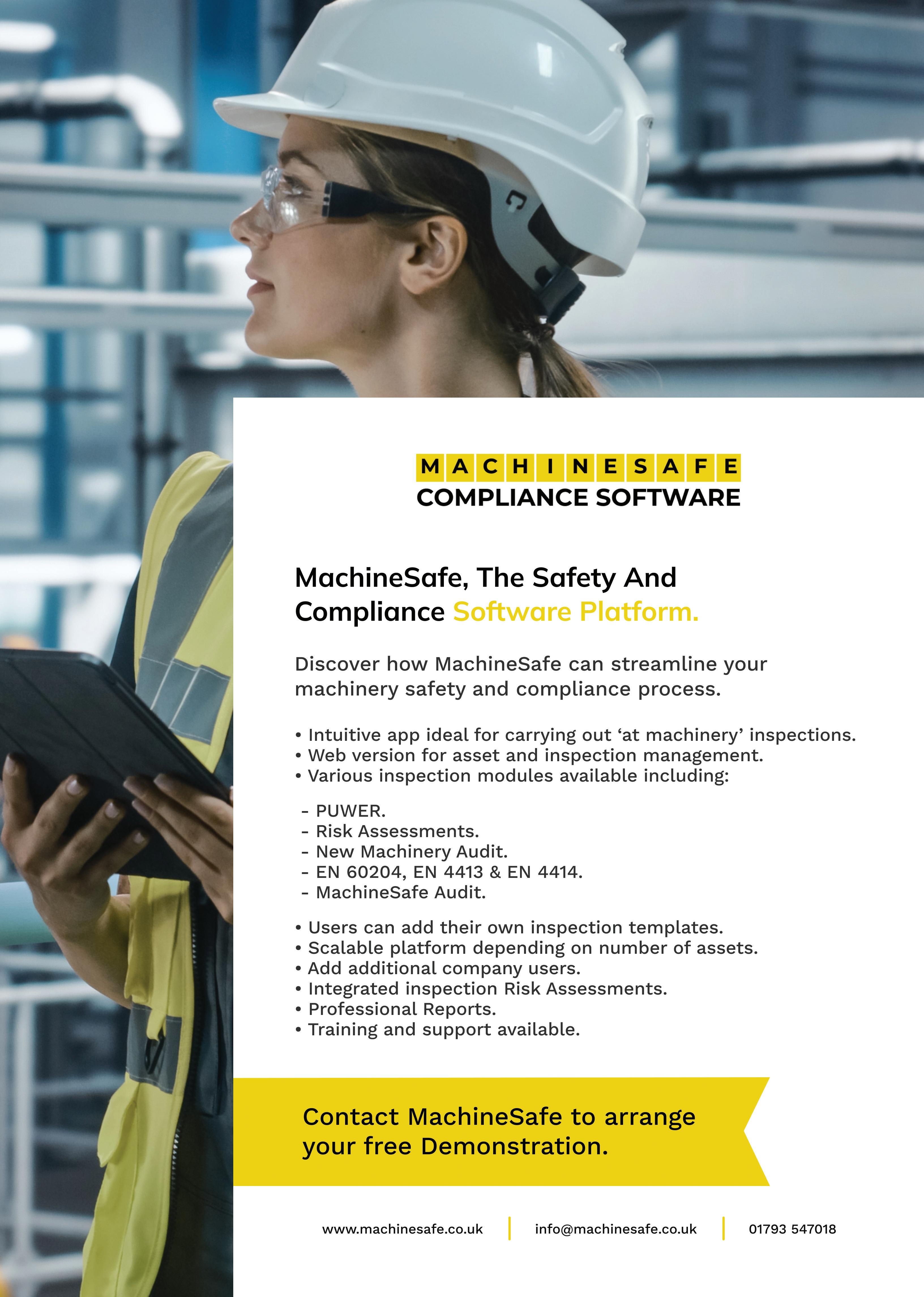
Overcoming the challenges of inline thickness measurement
When selecting an in-process thickness measurement system, a number of challenges need to be considered, including the effect of combined real-world errors. In his second article on thickness measurement for MEPCA, Glenn Wedgbrow, Business Development Manager at Micro-Epsilon UK, discusses how these challenges can be overcome in practice.
What is important when selecting a suitable thickness measurement system from a supplier is to understand the combined real-world errors that can occur when using a non-contact system and how these errors can be eliminated or compensated for. While many suppliers state on their datasheets that the measurement system meets a certain resolution and linearity, in the real world, this performance is affected by a number of environmental influences. Errors associated with real-world thickness measurement are not always obvious, but they can combine to create significantly large errors. It is, therefore, critical to select a system based on system accuracy, not just sensor accuracy.
To overcome these challenges, as a systems supplier, we must take each application on its own and assess the needs of the customer, consider the tolerances required and whether sensors alone are able to solve the task. Our systems division is focused on thickness and width gauging solutions for strip processing materials, including metals, plastics and rubber. All our key competencies can be found within the systems division and so we are able to use the many different measurement sensor technologies from within the Micro-Epsilon group. We also develop our own software and algorithms, including all the automation, linear guiding, traversing and programming of robots. Most importantly, we understand the mechanics of the systems we build, and our knowledge of the surrounding environmental influences, such as temperature and how to overcome these, is critical to the success and continued operation of our systems. We now have more than 500 system installations worldwide.
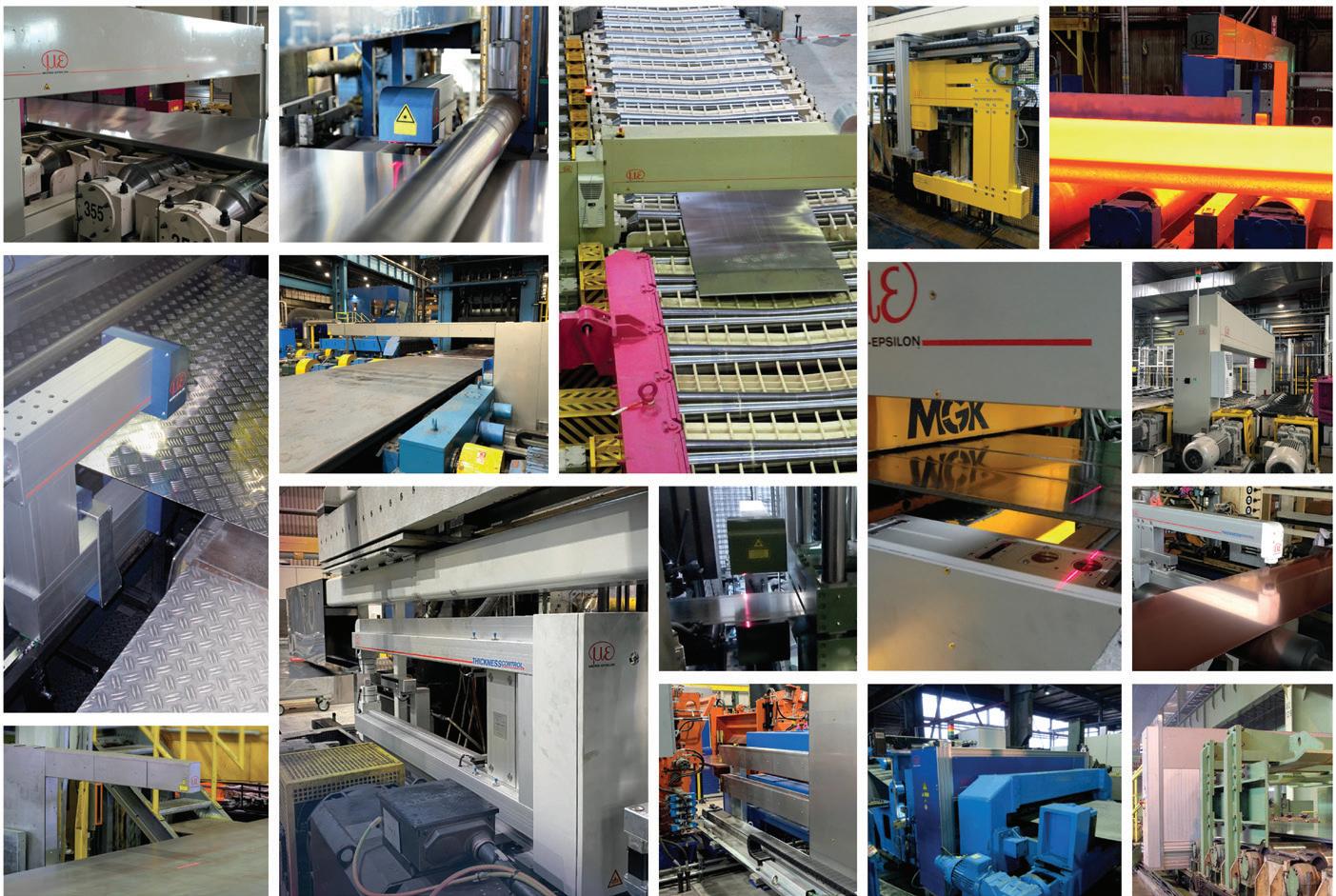
So, how do our systems solve the challenges of inline thickness measurement?
Two of the big challenges, alignment and synchronisation, are taken care of when purchasing a system from Micro-Epsilon. Knowing the overall gap or distance between the two sensors allows the calculation of thickness to be made. To establish this value, we first need to calibrate the system. A certified gauge block is positioned in the measuring path. This known thickness, combined with the readings from the sensor above and below the target, equals the overall measurement gap. Our systems will periodically return to the calibration position to check for changes and readjust values accordingly. Once the gap is confirmed and stored, the system can then be moved onto the target to be measured. The thickness of the material will now be the known gap, the sum of the individual measurements from the upper and lower sensors.
Thermal compensation
A typical system solution is a traversing C-frame measuring strip metal thickness for crown, wedge and edge drop on a decoiling line prior to slitting. Calibration checks against the certified gauge block are performed at regular intervals to avoid inaccuracies that may be caused by changes in the mechanical frame, for example, due to temperature.
Thermal compensation in an O-frame system works slightly differently. The gap between the sensors is key to accurate thickness measurement. Even in an O-frame configuration, the mounting frame can expand and contract with temperature changes. Typically, the upper frame will move further than the lower frame, and heat rises, so the reference for the gap between the sensors can vary, the consequence being that the system reports a thickness change even though the real thickness has not
28 www.mepca-engineering.com SENSORS & SENSING SYSTEMS
Micro-Epsilon turnkey systems have been installed across a wide range of industries and production lines.
changed. Micro-Epsilon O-frame systems use a patented compensation frame made from an invar material and are designed so that thermal expansion of the frame is transferred in the horizontal direction rather than vertically. However, this is only part of the solution.
Thermally stable system
The second element is to measure the gap change between the main frame, which holds the sensors as this invar frame. This is achieved by using two Micro-Epsilon capacitive sensors, which are extremely accurate and thermally stable. When the main frame expands or contracts, we can measure this change in the gap between both the top and bottom frames and compensate for the effect in the thickness calculation. Even when the sensors are traversed across the full opening, the changing gap is continuously monitored and adjusted. As with the C-frame system, we also have a certified gauge block included that can be positioned into the measurement zone.
The effect of temperature change with no compensation employed can be significant. A 25°C change in temperature is perceived as an almost 400-micron change in thickness.
Optical sensors
Three optical sensor technologies are available for integration into the measurement systems. Single point laser triangulation sensors offer a relatively lowcost entry into full thickness measurement capability. Confocal sensors provide the highest precision available, especially on shiny surfaces, whilst laser line technology is the most commonly used due to its excellent combination of high precision and large measuring ranges. One of the main reasons for the use of laser line profile sensors is that we are able to make a best fit line of the multiple points taken from the surface. Even if some points are missing due to surface oils or textures, the average reading is still good and valid.
Another consideration in the use of laser line sensors is that the laser line can compensate for tilts in the material. If a single-point measurement is used, significant errors can be introduced because the measurement is no longer taken perpendicular to the surface. The line sensor allows for the detection of the angle of the tilt and thus compensates to ensure the correct

thickness value is measured. In addition, the laser line power/exposure time can also be adjusted to cope with oil films, emulsion and scale on the surface. It also offers the ability to measure profiled surfaces for both minimum and maximum thicknesses, which can be helpful in understanding the performance and wear of, for example, an embossing roller. A single-point sensor cannot do this.
Advantages
The more traditional method of thickness measurement in the metals industry has been the use of Isotopic or X-ray gauges, but these can have limitations when it comes to handling, ongoing support and operation. As we use optical measurement techniques, we are generally not restricted on the material type we can measure. Our measurements are made against a certified gauge block, and we do not have to recalibrate them for different material types. Isotopic or X-ray systems need to know the material type being measured due to material property changes that influence the systems’ measurement behaviour.
As well as the fact that we have no radioactive substance to handle or control, there is also no need for a safety area around the system, other than standard guarding.
Total system accuracy
Each individual sensor has its own measurement accuracy, and therefore, in order to obtain the best performance for the ‘system’, we need to understand the
measurement behaviour of the individual sensors and combine them. This is achieved in the systems department through the use of a known target and highly precise reference gauge, which is moved through the measurement range of the sensor. The values of the sensors are recorded, and the combined readings are stored in a new linearisation algorithm, which is used by the systems software to calculate the true thickness reading. This is the extra step needed to achieve the total system accuracy, which is often better than the quoted individual sensor performance.
The fact that we are measuring against a known target for calibration allows for the customer to perform their own capability checks at any time and to verify the system performance without influence from the supplier.
Each measurement system from MicroEpsilon comes with fully capable software for operation, data capture and analysis of the required measurements. The multitouch functionality provides a familiar user experience similar to many smartphones and touchscreens in everyday use. The software screens are customisable and can be adjusted for a customer’s own specific needs. The software also includes the means to check your system’s capability at the touch of a button, performing both reproducibility and repeatability checks whenever required and without supervision from Micro-Epsilon.
www.micro-epsilon.co.uk www.mepca-engineering.com 29 SENSORS & SENSING SYSTEMS
Micro-Epsilon systems include a certified gauge block which is used for automatic calibration of the sensor gap.
Silicon-on-Sapphire for hazardous areas
Silicon-on-Sapphire (SOS) sensor technology has emerged as a cornerstone in the design and functionality of ESI’s intrinsically safe pressure transmitters, playing a pivotal role in ensuring reliable and accurate measurements in hazardous environments. The combination of silicon’s sensing capabilities and sapphire’s resilience creates a symbiotic relationship that addresses the challenges posed by harsh environments in hazardous locations.
The SOS sensor leverages the properties of both silicon and sapphire. The sapphire offers durability, chemical inertness, and resistance to extreme temperatures. The silicon is grown onto the surface of the sapphire substrate, creating a sensor that benefits from the properties of both materials. The silicon provides sensitivity and accuracy, while the sapphire substrate shields it from corrosive chemicals, abrasive substances, and high temperatures, ensuring long-term reliability in even the harshest environments.
The use of Silicon-on-Sapphire technology is particularly crucial in intrinsically safe pressure transmitters designed for hazardous locations. In environments where the risk of explosion is present, safety is of utmost importance.

Intrinsically safe devices are engineered to prevent the release of sufficient electrical or thermal energy to ignite a hazardous atmosphere. ESI’s pressure transmitters, incorporating SOS sensor technology, meet these stringent safety requirements while delivering accurate and dependable pressure measurements.
The inherent electrical insulation properties of sapphire play a pivotal role in achieving intrinsic safety. Sapphire is an excellent insulator, preventing the passage of electric current and reducing the risk of sparking or overheating. This makes SOS sensors inherently safer for use in explosive atmospheres compared to traditional sensors that may pose a higher risk.
Revolutionising IO-Link device management
To enhance operational efficiency and seamless IOLink sensor integration, ifm electronics has introduced moneo configure free, the cutting-edge tool designed to empower businesses with intuitive smart IO-Link management.
moneo configure free offers unparalleled ease and efficiency by enabling simultaneous parameter setting of multiple IO-Link sensors while also facilitating central parameter setting of IO-Link masters across the network. This innovative solution significantly streamlines the configuration process, saving valuable time and enhancing the overall
process reliability of production operations.
One of the standout features of moneo configure free is its integrated, manufacturerindependent IODD (IO-Link Device Description) management, leveraging the extensive IODD database. This empowers users to seamlessly integrate sensors from various manufacturers into the IOLink network, allowing for the seamless configuration of their parameters. This interoperability not only fosters flexibility but also underscores our commitment to industry collaboration and future-focused solutions.
Furthermore, during setup or error analysis, moneo configure free provides
Additionally, silicon-on-sapphire technology enables ESI to create pressure transmitters with a compact design without compromising performance. The thin yet robust nature of the SOS sensor allows for the development of smaller and lighter devices, making them easier to install and maintain in tight spaces within industrial facilities.
As industries continue to prioritise safety and accuracy in their operations, SOS technology is poised to remain at the forefront of intrinsically safe pressure transmitter solutions, providing a reliable and durable solution for critical applications.
esi-tec.com
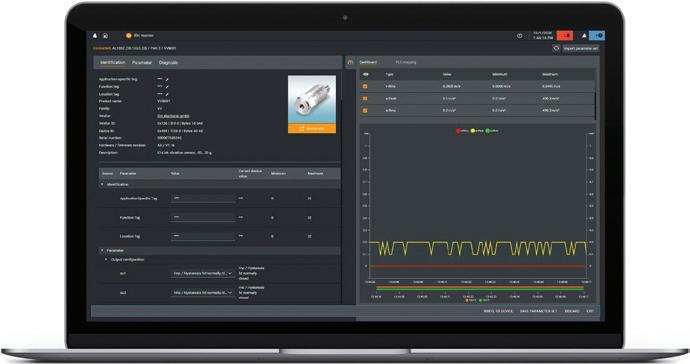
clear indication of up to two process data values for each IO-Link sensor in the cockpit, irrespective of the manufacturer. This invaluable feature enhances visibility and facilitates swift decision-making, ultimately contributing to optimised operational performance.
Moneo configure free is available for download from the ifm website. bit.ly/mon-con-free
30 www.mepca-engineering.com
SENSORS & SENSING
SYSTEMS
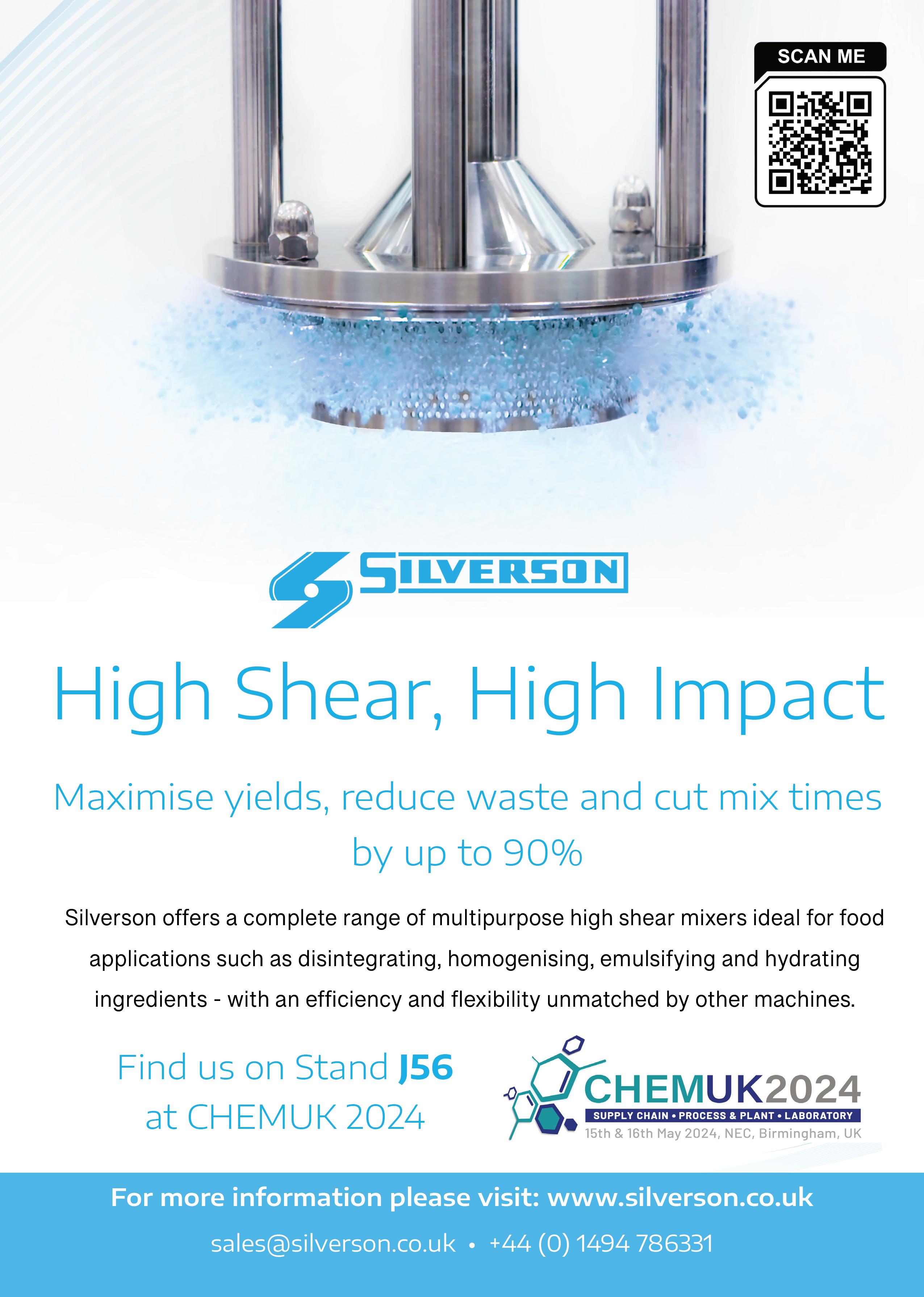
Sandwich processing aided by smart sensors
Smart sensors have become essential in many manufacturing systems as the demand for ever more sophisticated automation continues apace across a huge range of processing applications. In many automated processes, specific information is essential to ensure the smooth running of systems, typically provided by optical, inductive, or ultrasonic sensors or cameras. However, a more versatile, lesser-known alternative is smart 2D profile sensors, such as the OXM 2D sensor, developed by sensing and instrumentation specialists BAUMER.
Agood example of these smart sensors being very effective is on a fully automated sandwich and filled rolls production line at a German company, Weber Maschinenbau. The company specialises in developing slicing systems for food industry applications, and its latest production line accommodates over 70 sandwiches rolling off the line every hour, perfectly topped with sausage or cheese.
For this application, precise edge control, margins, and positioning data are essential to smooth operation. For example, what is the exact position of the sandwich or filled roll on the belt? What is its height, and is the edge even? The robot in the roll section needs to know the roll height and centre (lengthwise and crosswise) and whether the roll is, or isn’t, properly aligned on the belt.
Thanks to integrated measurement and evaluation functions, the OXM sensor delivers the entire measured value calculation and the calculated coordinates correctly in the required units (millimetres). The sensor also measures the bread height and every edge to calculate the centre of the roll, which enables suction pads to gently lift off the finished product without causing damage.
On the sandwich line, the sensor also determines the lateral position and height of the sausage and cheese slices on the belt, allowing the gripper to position the slices accurately on the bottom half of the sandwich. Weber Maschinenbau exploits this functionality on its sandwich lines and the slicers that cut and portion cold cut optimally prepared for packaging. Here, the sensors deliver the position data required for precisely aligned slices of salami, ham or cheese, which is
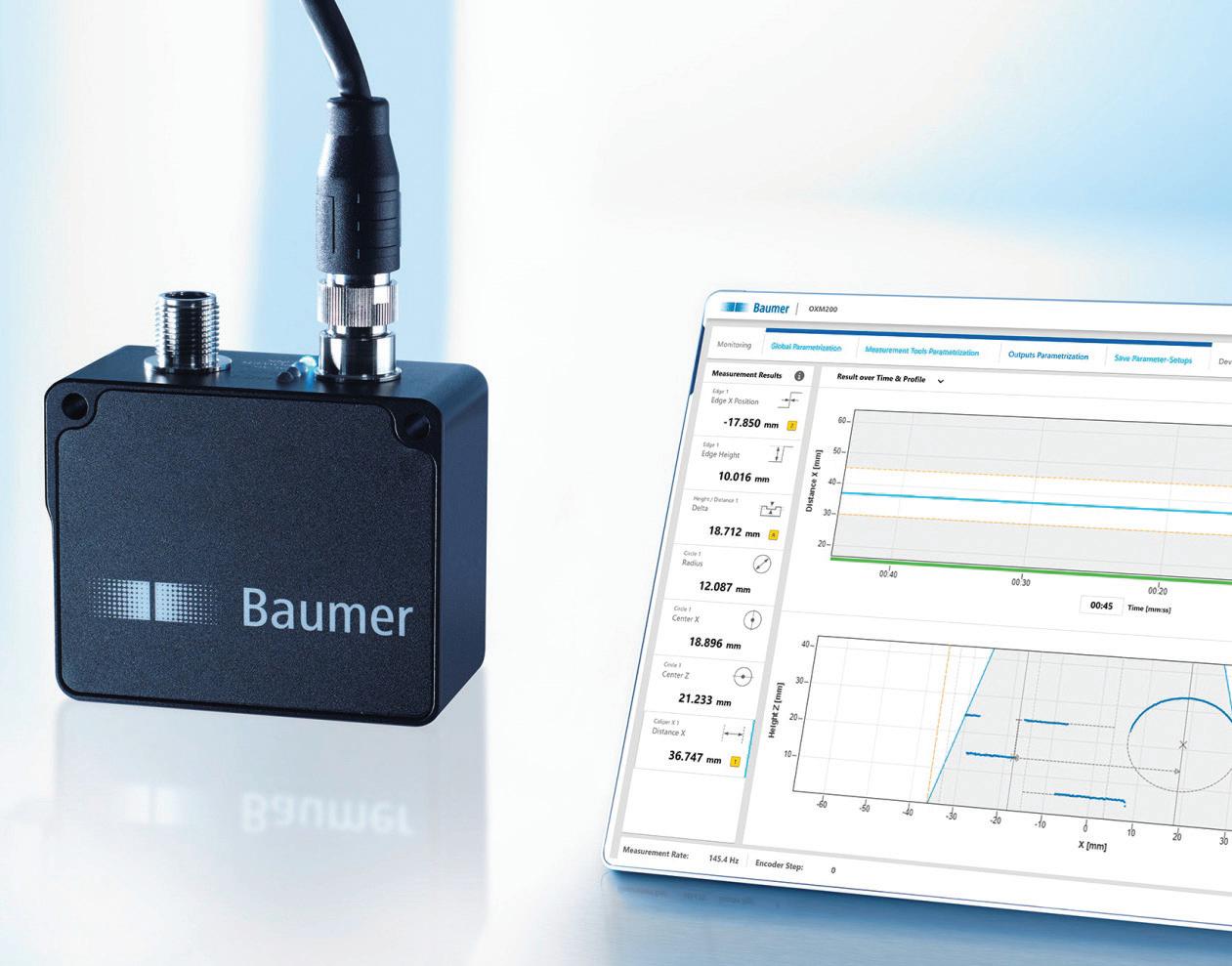
essential for allowing the finished product to always be placed in the same position in the packaging process.
Marco Nichau, Head of Automation at Weber Maschinenbau, commented: “It’s important for us that we don’t have to spend too much time and effort in integrating sensors and because the OXM sensor transmits all the position information directly to the machine controller, we don’t need an additional controller, saving space and reducing costs.” He added: “As the sensor is very compact and easy to connect, we can parameterise it via the intuitive web interface. Furthermore, it is ideal for the sandwich line as its performance is unaffected by variations in surfaces and ambient light. These factors, combined with
excellent support and response from Baumer, were the key factors in our choice.”
The latest versions of these smart 2D profile sensors are compact and lightweight, with simple connectivity using a single cable via IO-Link, Ethernet and more. They provide measurement ranges of up to 500mm with a field view of up to 300mm and operate with a precision of up to 5µm. These features make the sensors ideally suited to height checks of assembly parts, control and positioning tasks in robotics, such as position checks of feeder parts for pickand-place applications, or gap checks in automotive manufacturing.
bit.ly/OXM2D
32 www.mepca-engineering.com SENSORS & SENSING SYSTEMS
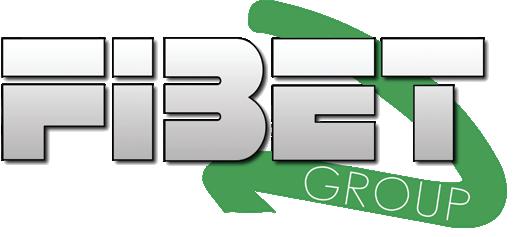

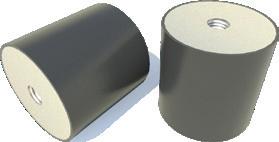



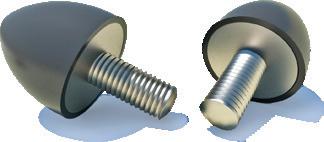
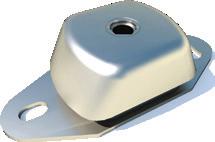








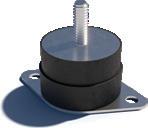
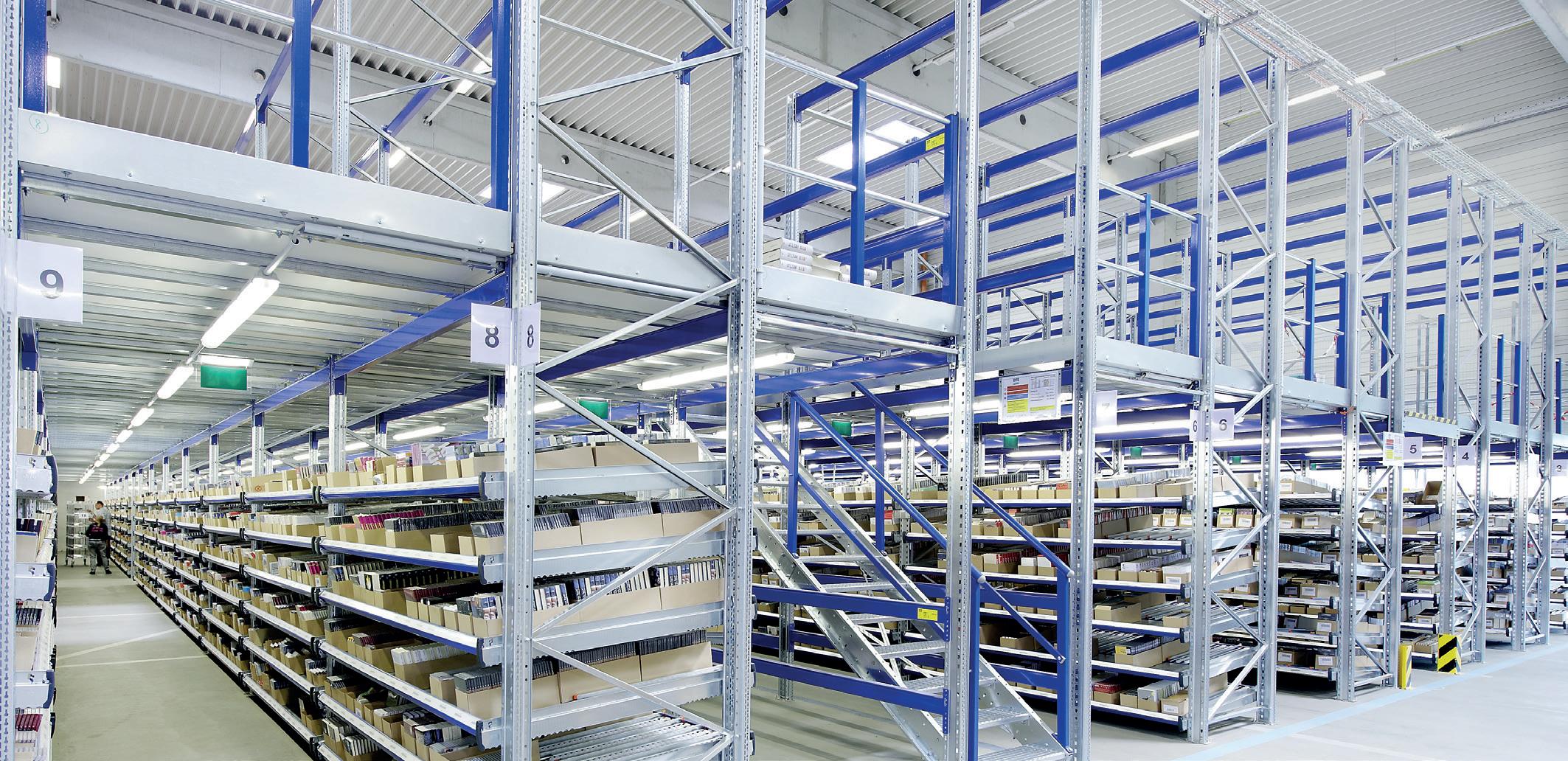

www.mepca-engineering.com 33 RUBBER ENGINE MOUNTS • PEDESTAL MOUNTS • CAB / CONE MOUNTS • RUBBER BOBBIN MOUNTS RUBBER BUFFERS / RUBBER STOPS • RUBBER BUSHES / SUSPENSION BUSHES • UNIVERSAL MOUNTS • LEVELLING FEET 01282 878200 SALES@FIBET.CO.UK WWW.FIBET.CO.UK MANUFACTURER OF HIGH QUALITY ANTI VIBRATION PRODUCTS, MOUNTS & BUSHES FOR OVER 70 YEARS WITH US, SPACE EFFICIENT BECOMES EVEN MORE EFFICIENT www.bito.com Maximise your storage capacity by multiplying floor space with a multi-tier storage and picking solution. BITO Multi-tier shelving
Robot nut sorting line optimises process efficiency
Hosting 50 pairs of Trio SCARA robots, a new nut sorting conveyor at a large processing facility in the U.S. is handling a much greater throughput than a traditional manual line. Operating 24/7, the robot system has presented double-digit percentage growth in productivity and is freeing up the need for tens of workers across several rotating shift patterns.
Instead of having to rely on manual sorting, and the challenges that brings in workforce recruitment and retention, integrating robotics is helping an American nut processing facility increase production.
A rise in robotics is also extending the potential to improve working conditions. At the plant, baked or shelled nuts are fed onto a conveyor, where operatives positioned along the line look for, and then remove, sub-quality produce. The conveyor is constantly moving for relatively long periods, while workers have to focus their eyes and repeatedly pick defective nuts. The new SCARA conveyor is in addition to the existing manual lines and has increased capacity at the facility. However, in the future, replacing the manual lines with SCARA automation can enable workforce redeployment to less physically taxing and more cognitively involved tasks.
Automating nut processing at the facility is not only increasing throughput, but is also improving product quality and consistency too. With the manual approach, defining a defective item can be subjective from person to person, and so can the ability to spot an unwanted nut, so consistency can vary. To ensure productivity, the conveyor is relatively fast moving, so the manual process also has to be completed at speed, balancing throughput with accuracy.
But substituting humans for robots on the nut sorting line requires seamless integration within the automated system, combined with high robotic motion coordination. First, the robot has to spot a defective nut; then it has to be able to quickly pick it up with the necessary dexterity to grip and hold very small, non-uniform items.
On the new conveyor line, each SCARA robot pair connects to a camera vision system that plots precise coordinates with
sub-millimetre
accuracy. The vision system identifies defective nuts, and the SCARA pair then guides their gripper to pick and remove the unwanted produce.
A SCARA robot, the acronym for Selective Compliance Assembly Robot Arm, is ideal for this process thanks to its compact footprint, enabling the integration of multiple ‘pickers’ along the conveyor line. Rigid in their vertical axis but with freedom on the horizontal plane, SCARAs are designed for operation over a controlled path and can optimise productivity thanks to their speed and precision. Crucial to the intricacy of picking a small nut at speed is the robot’s end effector, which features a three-pronged gripper.
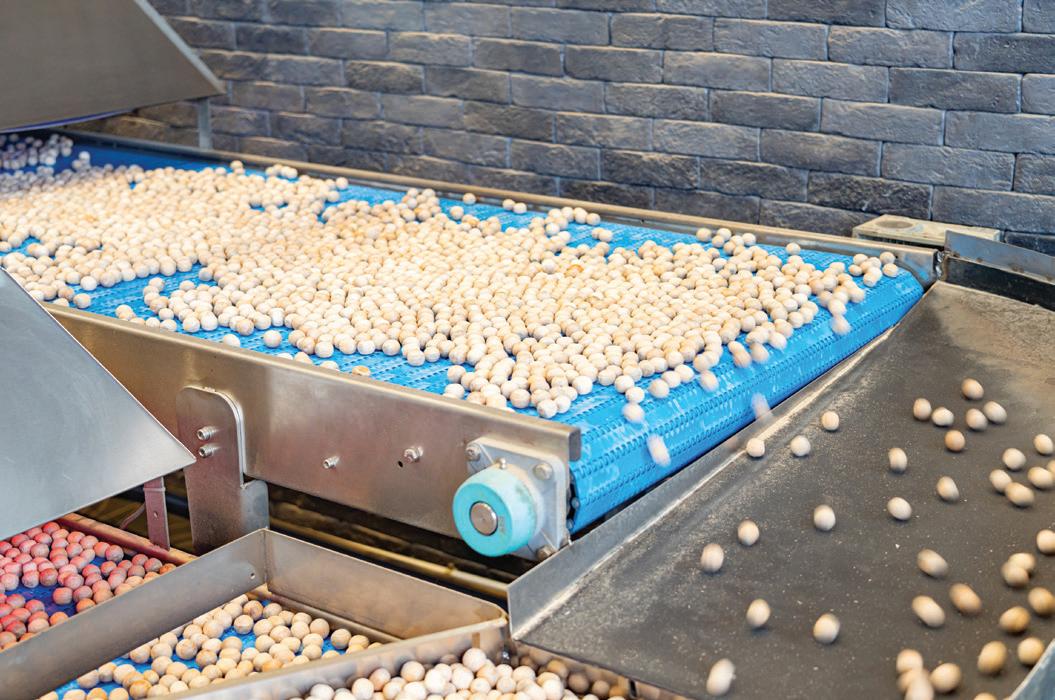
identification and picking, while optimising quality through consistency.
The 50 robot pairs cover a conveyor system around 50m long. This extended length and high concentration of robots ensure a refined level of sorting, giving the highest quality end product. A single controller for each robot pair, instead of a typical approach of one controller for each robot, has also reduced the total cost of hardware, including cabling.
Speed and precision
Responsible for coordinating both SCARA pair, as well as the camera vision system, is a single Trio Flex-X Nano motion controller. The Trio Flex-X Nano also controls the motion of the grippers. XYZ-Theta axis control of the grippers gives three-dimensional motion, plus rotation, and also controls their opening/ closing movement.
The Trio controller features deterministic, real-time EtherCAT communications down to 125µsec, with an execution benchmark of 125 lines/ms. This gives high-speed commands to the robots, while Trio’s SCARAs achieve repeatability down to ±0.1mm and ±0.01°. This combination of speed and precision ensures high speed
IoT integration
While the controllers coordinate the motion of each tandem of SCARAs, they also need to coordinate with the motion of the conveyor. Integration with the plant’s existing control architecture means that the Trio controllers connect to the hierarchy via Modbus. The automated line is also enabling IoT efficiency gains through real-time data management, combined with remote monitoring.
Trio developed the motion profiles and automation programming in IEC languages, and the company’s U.S. team is supporting the plant’s automation engineers.
www.triomotion.com
34 www.mepca-engineering.com ROBOTICS

Solvent and abrasion-resistant marking for PE pipes
T-Mark, a specialist in challenging printing and marking applications, has recently developed a solution to mark polyethylene pipes with high-resolution, solvent-resistant and abrasionresistant UV-curing ink.

T-Mark has set a new standard for printing on difficult surfaces such as PE. New UV-curing inkjet technology means that polyethylene extrusions, such as water pipes, can have ultra-durable coding that is resistant to solvents and abrasion.
In Doncaster, a recent installation for Egeplast UK, which produces polyethylene wastewater and drinking water pipes, prints on a black or blue extrusion with a whitepigmented UV-curing ink. The resulting mark is high-resolution, solvent- resistant and abrasion-resistant.
High-resolution: The system prints the company logo, batch and material information and a bar code, all in 300dpi resolution. The appearance of the product is enhanced, and the bar code enables automation benefits for end-user customers. Solvent-resistant: The durability of the
code enabled Egeplast to achieve ENATS accreditation, because the print is not removed by contact with petrol or other solvents.
Abrasion-resistant: With plasma treatment, the ink is partially absorbed into the material surface, and so is difficult to remove by scratching.
The installation at Egeplast UK incorporates a twin-head inkjet printer and integrated UV controller. The modular system makes for low maintenance, and the touchscreen controller means easy operation. The printer and UV curing module are mounted 1mm away from the curved surface of the pipe, producing a sharp white print against the dark surface of the pipe.
Further applications
T-Mark plans to use the same technology to mark undersea pipelines and industrial footwear. A forthcoming installation in
Scotland will combine the solvent resistance of UV curing with the abrasion resistance provided by plasma treatment to produce a permanently indelible mark for deep sea umbilical PE cables, which can be up to 20,000m long. Additionally, the company has secured an order to mark safety wellington boots for an inline process, to enhance the operational efficiency of the customer’s factory by reducing product handling.
T-Mark, through its parent company Timbermark, specialises in providing engineered solutions to challenging printing and marking requirements. Originally focusing on the timber industry, the company has diversified to service construction products and plastic packaging industries, using its 20 years of experience to recommend the best application for each individual customer.
www.t-mark.co.uk/uv-curing
36 www.mepca-engineering.com CODING & MARKING

Future-proofing production environments with the right tools
According to Marc Vissers, of automation specialist Lenze, the manufacturing industry needs to produce in an increasingly agile way with fewer technicians. As a result, the market is looking for more expertise. We found out how Lenze wants to support manufacturers, not only with its products but also with customised training on topics such as modular automation, robotics-as-a-service, servitisation and the smarter use of data. The aim? To future-proof manufacturing environments.
Many companies in the industry are seeing profit margins narrowing in machine production. The market is exerting pressure to reduce cost prices. So, it is necessary to organise processes smarter, better, faster and/or more efficiently. This involves regularly looking at opportunities to replace components or parts with cheaper alternatives. However, as Marc Vissers, Manager Marketing & Communication EMEA West at Lenze, explains: “The cost of motion control and automation is only about 25-30% of total machine costs. Savings in this area do not translate into significant savings when compared to the total cost of ownership. That is why we are lookingtogether with machine builders - for ways to improve the integral costs, especially on engineering and resources.”
Varying needs
Lenze does not only do this with products. “We naturally look at companies’ problem definition first. Every company is different, has a different infrastructure and organisational structure and uses technology from one or more brands,” continued Marc. “By talking to machine builders, we determine together what is most suitable for the company and where opportunities for improvement lie, for example, by setting up the organisation differently or using and deploying the generated data differently. Depending on the machine builder’s needs and goals, we offer solutions with workshops and training courses that can add value.”
Marc elaborates on a number of training courses: “For example, we run bespoke workshops that zoom in on the drive
technology aspect. How can companies be smarter about what they need? We also organise workshops to better position yourself as a company, with modular automation or robotics-asa-service, for example.”
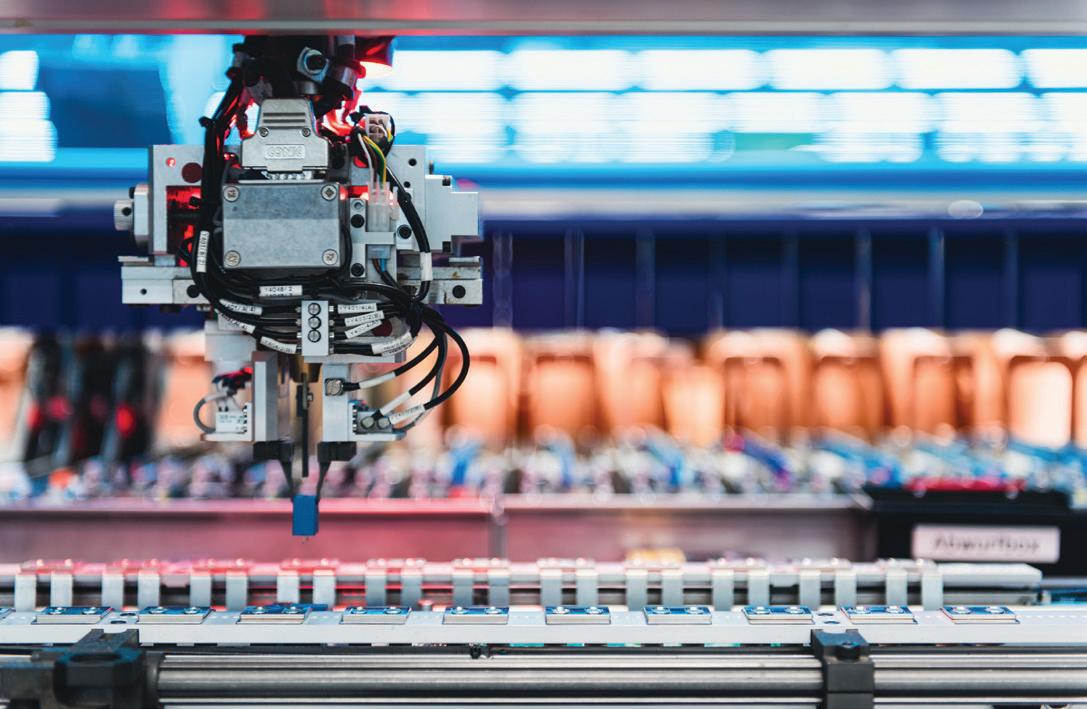
Within the Lenze FAST software platform, it is very easy to develop and structure a modular machine control system. “In the concept phase, the FAST software architecture helps companies come up with their own robust and extensible solutions that even better address today’s requirements for machines towards visualisation, IIoT and cloud,” added Marc. “In addition, we are able to facilitate better commissioning through digital twinning. This leads to better time-to-market as companies can make changes faster before something is physically built. Through modulation and the technology within Lenze FAST, we are able to quickly further optimise and future-proof robots from renowned robot manufacturers in production environments. In this, we can guide customers with workshops and training courses.”
Smart data handling
Finally, Lenze offers workshops related to the smart(er) use of data. “If you use data in the right way, on the one hand, you get more insight into how machines function
and where optimisation opportunities exist, allowing you to develop better machines and thus reduce cost price. On the other hand, data offers opportunities to create new business models such as pay-per-use constructions or servitisation,” explained Marc.
Lenze’s Nupano platform, among others, can play an important role in this, as Marc concluded: “It is a platform with a simple operation where we use open IT architectures and technologies. As a result, prior knowledge of information technology is not required. It is an accessible tool for integrating own or third-party apps, linking them to assets or systems, and keeping them up-to-date throughout the lifecycle. The platform thus simplifies the implementation of digital services at machine and plant level. It helps machine builders to produce machines that enable them to differentiate themselves from their competitors thanks to software. The extent of a company’s advancement determines the structure of the training provided by Lenze.”
www.lenze.com
38 www.mepca-engineering.com MACHINE BUILDING

Driving sustainability in automotive die-casting
With an increasing number of vehicles on the roads, there’s more demand than ever to reduce CO2 emissions and increase fuel efficiency. We found out how, with help from industrial connectivity specialist Brainboxes, CastAlum, a leading global supplier of cast aluminium and machined components, is utilising eco-friendly die-casting of easily recyclable and cost-effective materials to produce lightweight automotive parts that reduce waste, save time and lower costs for manufacturers and customers.
Manufacturers can reduce emissions by using automotive die casting, which uses a metal moulding process to produce parts from molten metal. The metal is cooled down and solidified into parts, which are then machined into shape. This process enables cars to be as lightweight as possible due to the manufacturing of lightweight components through die-casting.
CastAlum produces steering gear housing, transmission cases, and safety-critical suspension knuckles. Using devices from Brainboxes, the company is continuing to develop a factory management system in-house to help it further automate and improve its die-casting processes. Remote IO Brainboxes capture production events and remotely collect real-time data to maintain high productivity levels and prevent delays.
For one element of this bespoke system, CastAlum needed a mechanism to send signals from the die-casting machines to the software’s database via an API. Communicating directly with the machines and their software controls was not only technically difficult and expensive, but also came with increased security and safety risks. Relying on human interaction with a digital system would always mean a degree of latency in communication.
The industrial design of the Brainboxes makes them suitable for the harsh environments of automotive die casting, whilst the devices provide a perfect interface between CastAlum’s machines and bespoke software. The Brainboxes are capable of monitoring any input from the machines, from TTL to high-voltage, high-current

industrial devices. This provides CastAlum with a simple interface to capture and visualise production events in real time, instantly reducing communication latency on the shop floor. The system creates an immediate flow of information as all staff members are able to know the state of each machine at any given moment.
In addition to tracking production events, CastAlum has also been able to implement the tracking of shots as they are happening. This provides engineers with a wealth of information, from simply logging parts produced, to cycle times, shift efficiency, and tooling life. This data is collected in real time and presented on digital signage throughout the factory. Utilising remote IO, CastAlum has clear visibility of parts-production data to improve management of the shop floor.
“People can view the data, at all times, on their own devices. So, everyone, wherever they are, can always know how each machine is performing at any given moment during the course of a shift, day, week, month, or production run,” explained Nathan Field, Innovation Lead at CastAlum
By using Brainboxes remote IO devices, CastAlum is continuing to achieve its goal of attaining the highest levels of productivity and quality. Supervisors and engineers are freed from the administrative requirement to update systems manually and can instead rely on receiving real-time information from the machines themselves to quickly identify issues and gain a more holistic view of the production floor.
www.brainboxes.com
40 www.mepca-engineering.com CONTROL SOLUTIONS
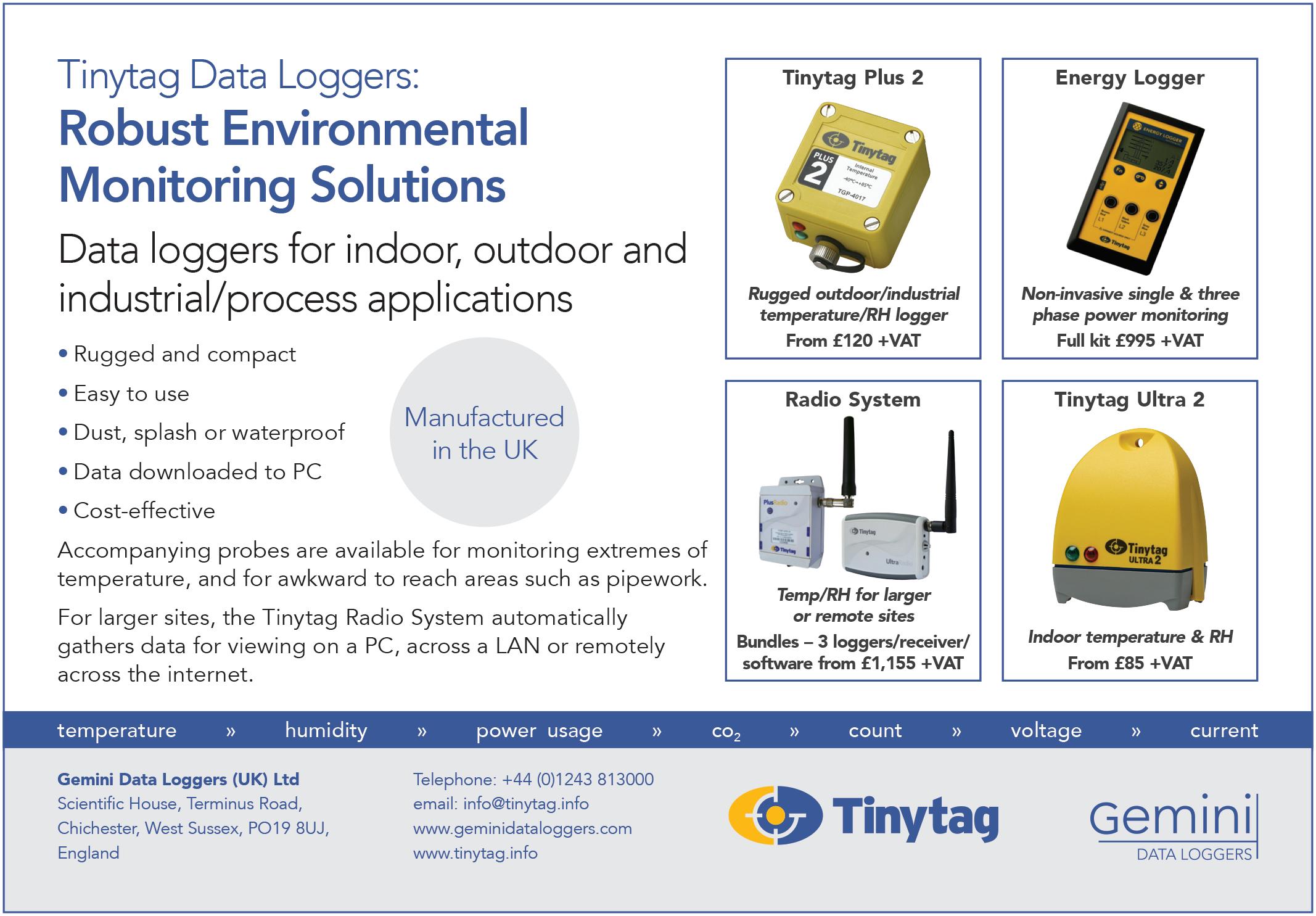
Verifying & Grading

VE Series Smart Cameras
• Easy to use with powerful inspection capabilities.
• Free Vision Manager software, including off line emulator.
• Runtime editing, no down time when making changes.
• Ethernet/IP, Modbus/TCP and Profinet.
• 6 Programmable I/O.
• Robust metal housing, IP67 with lens cover.
• Two line onboard display provides sensor information for easy settings, focus and product change over.
• C-Mount lenses.
• 3 bright sensor status indicators.

www.mepca-engineering.com 41
Turck Banner Ltd. Blenheim House, Blenheim Court, Wickford, Essex SS11 8YT Tel: 01268 578888 vision@turckbanner.co.uk
VE Series Compact Durable Versatile Smart Camera www.turckbanner.co.uk
Small-scale mixers to launch at CHEMUK
On stand J56 at CHEMUK this year, visitors will be able to see laboratory mixers and larger scale in-tank high shear mixers from Silverson Machines in action. In addition to these mixers Silverson will also be launching new mixer variants, some of which will be on show for the first time at CHEMUK.
Silverson Machines’ new mixers have been developed in response to the demand for small-scale in-line mixers and powder/liquid mixers. These mixers bridge the gap between the laboratory scale mixers and production scale mixers currently available in the Silverson product range, offering customers more options in terms of batch sizes and processing requirements.
Each of these new mixers is available with IP-rated motors and as a flameproof model, making them suitable for many applications that cannot be carried out with standard laboratory mixers.
The new range includes small-scale ultrahygienic specification models, a small-scale unit suitable for higher viscosity mixes and a small-scale powder/liquid mixer.
The ultra-hygienic specification models, the 150 and 200 UHS In-Lines, are ideal for batches of up to 50l. They can be supplied with multi-stage rotor/stator workheads, offering intense yet targeted high-shear capability. These small-scale mixers are designed for ultra-hygienic applications typically encountered in the pharmaceutical and biotech industries, where the smallest production-scale mixers may be too large, but laboratory equipment doesn’t offer sufficient capacity. The mixers are built to the same high specification as production scale UHS mixers and can be supplied with Silverson-designed hygienic single mechanical shaft seals, which can be converted to hygienic double mechanical shaft seals suitable for pressurised flush.
For small-scale manufacturing of higherviscosity products, Silverson has developed the UHS-HV, an in-line mixer that matches the capabilities of the production scale of
Silverson HV in-line mixers. It incorporates a unique and innovative pumping rotor design that substantially increases the mixer’s self-pumping capacity, which is ideal for processing higher-viscosity products.
High flow rates
High flow rates, typically around 6,500l/ hr, are maintained as viscosity rises, often eliminating the need for an additional feed pump when processing many higherviscosity products such as creams, ointments, sauces and slurries. A range of motor options is available, including high speed, which allows the mixer to run at 9,000rpm. This gives the mixer more power to continually recirculate higher-viscosity products in the vessel. Other motor options include stainless steel and flameproof models.
The new FMX10 small-scale powder/liquid mixer provides a simple, effective and hygienic means of powder/liquid mixing on a small scale, with a batch size of up to 50l, depending on viscosity. This batch size bridges the gap between the laboratory scale FMX5 and the larger Flashmix product range.
The FMX10 features the same pumping rotor design as the HV models in the Silverson product range, allowing it to process higher viscosity mixes. There is also the option of a high-speed motor, capable of 9,000rpm, and flameproof specification, making this model even more versatile.
The mixer offers proven performance on a wide range of powders, including pectin, guar gum, gelatine and xanthan gum, as well as sugars,
flours, milk powder, etc. The standard powder feed hopper has a 5l capacity. Different designs are available to assist with the flow of more cohesive powders.
In operation, the mixer recirculates liquid from the vessel and powder is loaded into the stainless-steel hopper. Once the powder feed valve is opened the powder is drawn into the high velocity liquid stream, with the ingredients coming into contact with each other just prior to the mixer’s high shear rotor/ stator workhead. A brief period of recirculation results in an agglomerate-free, homogeneous dispersion in a matter of minutes.
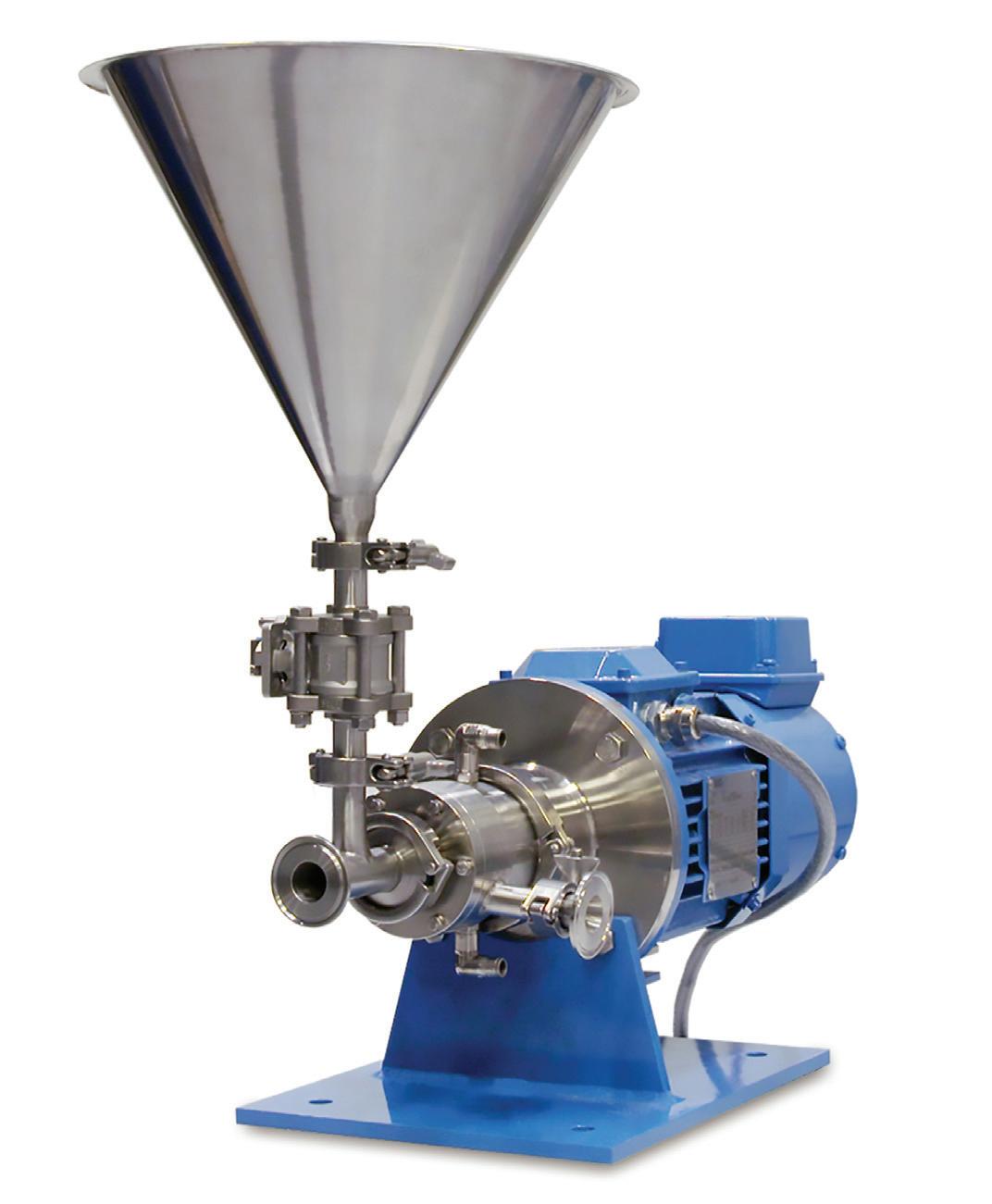
www.silverson.co.uk
42 www.mepca-engineering.com MIXING & BLENDING
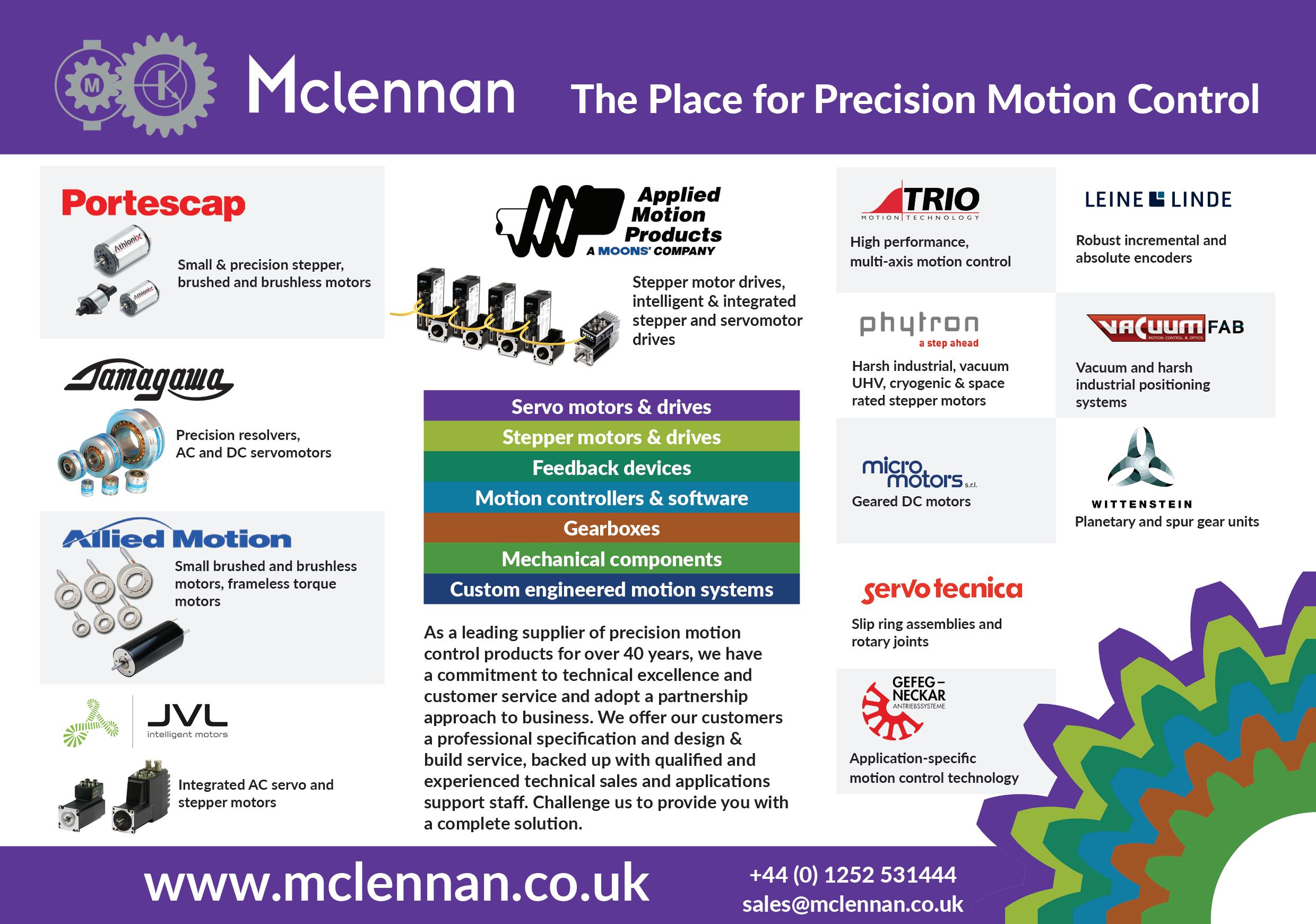
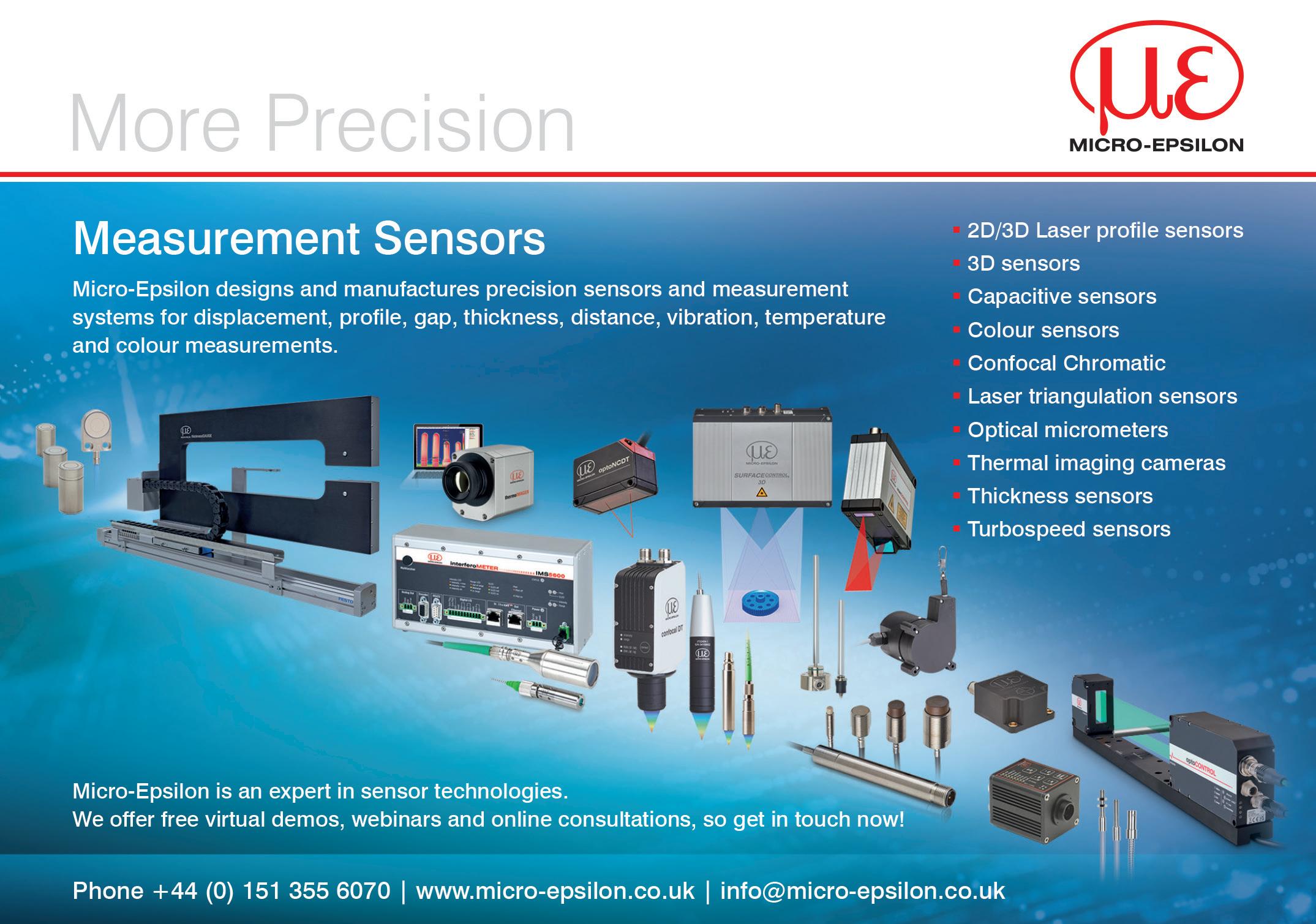
www.mepca-engineering.com 43
The electrically powered journey of offshore wind
The increasing need for electricity worldwide is driving the transition towards renewable energy sources on a large scale. The International Energy Agency (IEA) estimates that renewable energy will contribute 70% of the global energy mix by 2050 under a net-zero scenario. Onshore and offshore wind power are expected to play a significant role in achieving this goal. Flow control specialist, Rotork, explains how its electric valve technology is helping to make this possible.
To efficiently transmit the electricity generated by offshore wind farms, which are often located far from the shore, High Voltage Direct Current (HVDC) technology is used. HVDC converter stations play a critical role in this process. They convert the alternating current (AC) electricity generated by wind turbines into direct current (DC) for longdistance transmission with minimal power loss. Upon reaching land, the DC electricity is converted to AC and fed into the power grid.
The flow control of cooling fluids (seawater, deionised water, and glycol) is critical for the regular operation of the platforms. Any technical faults with controlling parameters such as ambient temperature, humidity, and pressure within these platforms could cause the entire wind farm to fail.
Rotork IQ3 Pro electric valve actuators are suitable for this safety-critical application due to their reliability and intelligent features that help reduce unplanned downtime. They only require an electric power source, avoiding the need for additional equipment that might add weight and complexity to the platform. Rotork CVA electric actuators are selected for applications requiring constant modulation. They can provide continuous, repeatable modulating control and a programmed fail-to-position option. The IQ3 Pro and CVA actuators have advanced and user-friendly programming and commissioning technologies and extensive data logging, diagnostic, and asset management capabilities.
HVDC platforms also have safetycritical applications in their auxiliary power

units that must reach a failsafe position. Rotork provides two solutions to these needs: the IQ3 Pro Shutdown Battery and the Skilmatic SI3 electro-hydraulic actuator with a mechanical spring-based design. The IQ3 Pro Shutdown Battery includes explosion-proof certification and will continue to operate in uninterruptible power supply (UPS) mode (multiple open/close cycles) until the battery charge runs out. The SI3 uses the same technology as the IQ3 Pro, which helps to standardise the platform’s control system. The compactness and weight of these actuators make them a preferred solution for offshore platforms.
As offshore wind generation moves further from shore, converter platforms and large cable networks are required to reduce transmission losses before the electricity reaches the onshore grid. These converter platforms convert low-voltage energy generated by turbines into high-voltage electricity needed for transmission, providing efficient power delivery over great distances.
Another challenge for any equipment on an HVDC platform is that it is unmanned and fully controlled from the shore. This means that access to this equipment is only possible once a year during the platform’s
planned maintenance. This is where Rotork’s Intelligent Asset Management (iAM) solution can help. iAM is a cloud-based system that provides a platform for end-users with advanced condition monitoring of their intelligent actuation and flow equipment.
Users can download the data logs and send them to the iAM system. It helps reduce unplanned downtime by using analytics based on data taken from intelligent actuators to create a maintenance plan. The key areas of information taken from data loggers and uploaded to iAM are torque, temperature, vibration and event log information, and other secondary metrics such as partial stroke profile, maximum starts per hour and motor run time.
Rotork’s range of intelligent electric actuators (isolation and continuous modulating types) and its service offering, including iAM, are well-suited for these challenging applications on unmanned platforms. They provide users with operational insights into the health of their assets and planned maintenance capabilities, which reduces the lifecycle cost of managing these platforms throughout their 25-year lifespan.
www.rotork.com
44 www.mepca-engineering.com VALVES & ACTUATORS
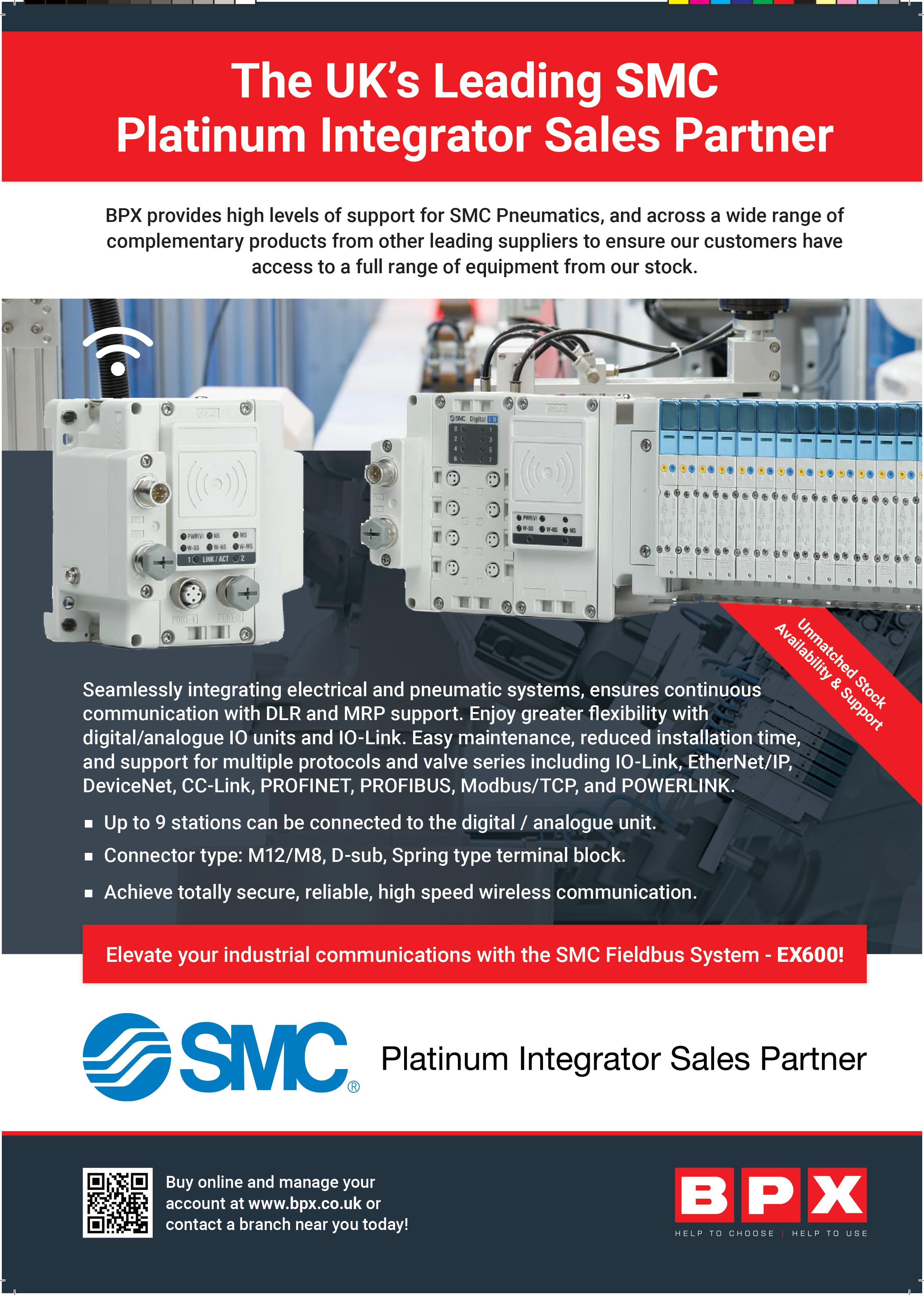
Manufacturing optimisation for profit and sustainability
As the issue of sustainability continues to gain attention in industrial markets, more stakeholders are starting to understand that their process and plant investments to improve profitability can also contribute directly to achieving their sustainability goals. Such insights can help guide industrial organisations towards prioritising investment into solutions that improve their operational sustainability and overall environmental footprint, as David Barrett-Hague, Head of Industrial Automation Marketing for UK & Ireland and Sustainability Ambassador at Schneider Electric, explains.
Arecent report based on a survey of industrial end users across North America, Europe, Middle East & Africa, and Asia by global analyst firm Omdia, identified that more than half of respondents are working on sustainability initiatives.
The report highlighted several technologies that will have the most significant impact on manufacturing sustainability goals. These include sensing, the Industrial Internet of Things (IIoT), Artificial intelligence (AI), digital twins, cloud computing, supply chain management software and energy management systems.
While some of these solutions are still emerging in the manufacturing sector, many respondents have already deployed them to gain cost savings and ensure operational resiliency.
Smarter automation
Upgrading inefficient equipment requires a strategic approach, and the results should directly reduce a company’s energy consumption and total cost of asset ownership. Legacy assets remain a challenge to optimise for many industrial organisations and are driving the need for ‘open’ solutions that are easily integrated with a variety of existing and new technologies. Using the cloud to gather and analyse data from all operational processes and edge locations, as well as new and legacy asset information, on a central platform has significant benefits, including increased visibility, equipment optimisation, and overall project management effectiveness. It also opens the pathway to aggregating plant-wide data, which enables
thorough analytics and informed decision-making across the business. Many leading industrial organisations have already taken great strides to this level of digital transformation and are reaping the benefits of improved efficiency, reduced downtime, better productivity and, importantly, better sustainability credentials.
Supply chain visibility

A manufacturing organisation’s ability to optimise operations also relies heavily on its capability to manage its supply chain. As mentioned, industrial sustainability inherently depends on increased connectivity and data gathered by various sensors within the plants’ processes. When aggregated, this data gives organisations the necessary visibility to make intelligent decisions that positively impact their operational success. The accumulation of data allows various analytics to be performed, from basic identification of threshold limits to machine learning and deep learning algorithms. Scalable technologies enable holistic views of various industrial organisations, future-proofing operations with next-generation capabilities.
Sustainability is an important consideration for any industrial business as regulations tighten and the pressure of Net Zero targets grows. A further technology that bears specific mention in this regard is the digital twin. Digital twins replicate a design or setup in a virtual environment and then simulate it under various situations, conditions, and scenarios.
This allows advanced planning and strategic thinking to impact current processes and future developments, as well as improving other areas of the business such as training and product changeovers. While there are many examples of the value of digital twins, they have not yet been widely adopted by industrial organisations due, in part, to the requirement for a level of digitalisation maturity. Despite this, they remain a vital piece of the sustainability puzzle and will unlock huge efficiencies for industrial organisations in the years to come.
There are many ways in which industrial organisations are using their investment in productivity and digitalisation to support and prioritise their sustainability goals. Though methods vary by industry and digital maturity, they all rely on the effective collation, analysis and harnessing of data. With climate change increasingly forcing the pace, manufacturers must build sustainability into their digital transformation journeys to improve efficiency and contribute to the collective effort of industrial environmental protection.
www.se.com
46 www.mepca-engineering.com SUSTAINABILITY
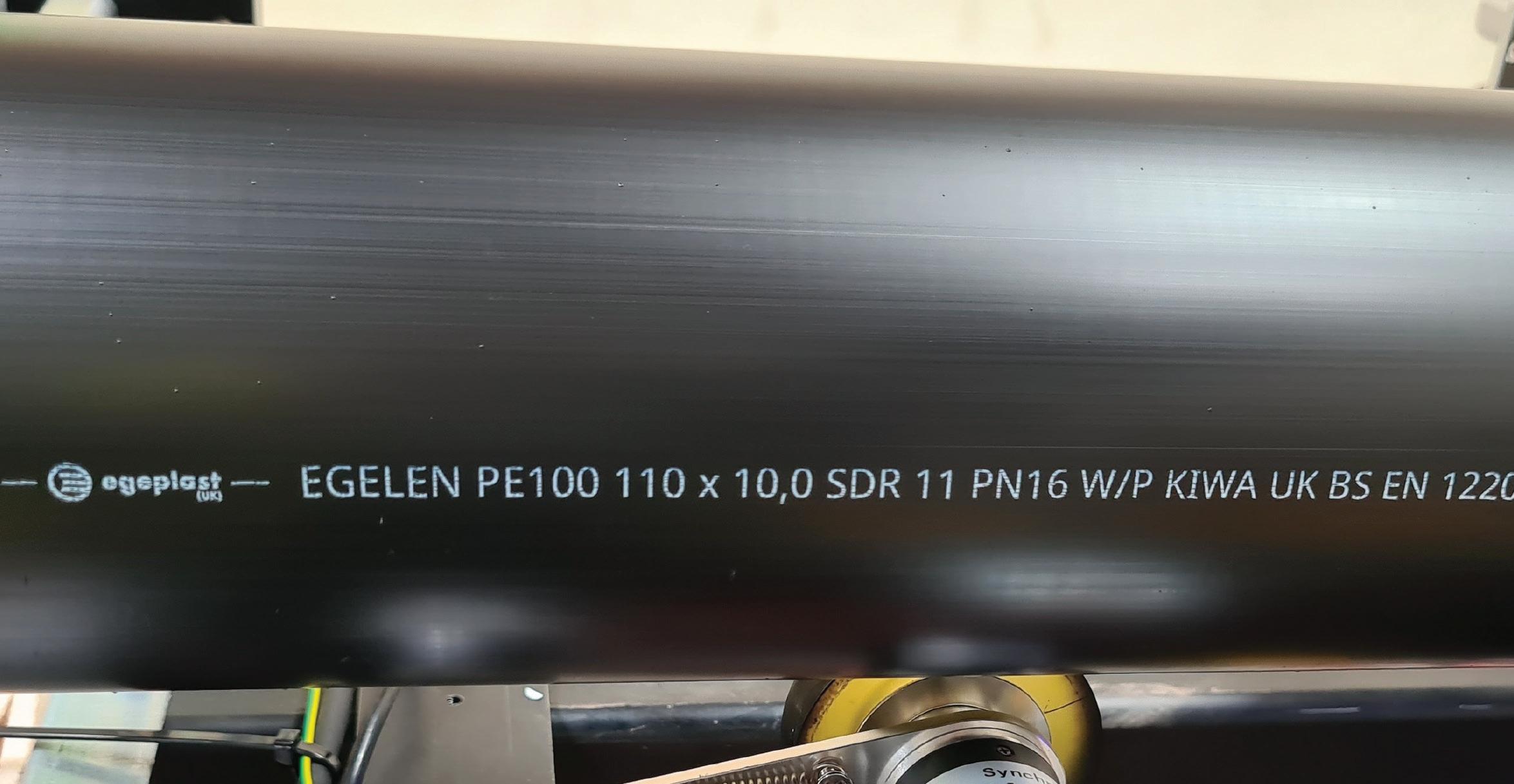


AI or eyes on?
Automation has been a driving force in shaping how we produce goods and manage industrial processes. From the early days of Alfred Nobel’s dynamite manufacturing process to the current fourth industrial revolution, technological advancements have revolutionised manufacturing efficiency, safety, and productivity. Hydraulic test and measurement specialist, UK Flowtechnik, explores the functionality of process displays in the context of automation, emphasising the importance of local control and clear visibility for operators.
In the late 19th century, after an explosion in its Swedish nitro-glycerine production facility where, among the workers who lost their lives was Emil, brother of Alfred Nobel, the inventor of dynamite faced a critical challenge: how to prevent casualties during the production of explosives. Dynamite, a powerful yet volatile substance, requires careful handling and precise mixing of ingredients. Nobel’s solution was to design a safer manufacturing process that minimised human intervention and reduced the risk of accidents.
Nobel’s dynamite factory in Ardeer, Scotland, became the largest explosives factory in the world. He introduced innovations such as gelignite (a stable form of dynamite) and improved safety measures. However, the heart of his success lay in automating critical processes. By mechanising tasks like mixing nitroglycerin and other ingredients, Nobel significantly improved efficiency while minimising the danger to workers.
The role of process displays
Fast forward to the present day, where the fourth industrial revolution (4IR) is reshaping industries worldwide. The 4IR encompasses technologies, including artificial intelligence, robotics, the Internet of Things (IoT), and advanced digital production. Within this context, process displays play a crucial role in modern manufacturing. Let’s explore their functionality:
Real-time monitoring: Process displays provide operators with real-time information about production lines, machinery, and critical parameters. Operators can monitor variables like temperature, pressure, and flow rates, ensuring that processes remain within safe and efficient limits.
Local control: Local control through process displays allows operators to
make immediate adjustments. Operators can intervene promptly when anomalies occur, preventing quality issues or production disruptions. For example, if a temperature exceeds the desired range, an operator can adjust the cooling system directly from the display. Clear visualisation: Process displays offer a clear view of the entire production process. Operators can visualise the flow of materials, identify bottlenecks, and track product movement. Clear visualisation enhances decision-making and reduces the risk of errors.
Quick access to critical functions: Buttons and controls on process displays allow operators to switch views, adjust settings, or halt processes instantly. Whether changing a recipe, stopping a conveyor belt, or initiating maintenance, quick access to critical functions improves efficiency and prevents losses.
Preventing losses and enhancing efficiency

preventing further loss. Clear visibility ensures that no abnormality goes unnoticed.
Adapting to changing demands:
Efficiency and productivity are paramount in today’s competitive manufacturing landscape. Here’s how process displays contribute:
Reducing downtime: Downtime decreases when operators can swiftly address issues using process displays. Whether recalibrating sensors or troubleshooting a malfunction, every minute saved translates to increased production capacity.
Minimising product loss: Imagine a scenario where an undetected fault causes a chemical spill. With process displays, operators receive immediate alerts locally and can shut down the affected section,
Changing process parameters on the fly allows manufacturers to adapt to varying production demands. Local control ensures flexibility, whether adjusting batch sizes or switching between product lines.
Conclusion
Automation has come a long way from Nobel’s dynamite factory to the 4IR. Process displays empower operators, providing them with the tools to enhance efficiency, prevent losses, and maintain safety. As we continue to embrace technological advancements, let’s recognise the critical role of process displays in shaping the future of manufacturing.
www.ukflowtechnik.com
48 www.mepca-engineering.com PROCESS CONTROL

Taking the pulse of SME Week 2024
On 5 and 6 June, the NEC Birmingham will transform into an epicentre of industrial innovation, hosting the highly anticipated Smart Manufacturing & Engineering Week 2024.
Across its two halls, six exhibitions, two summits and eight education theatres, Smart Manufacturing & Engineering Week 2024 (SM&E Week) addresses the key issues that concern manufacturing and engineering businesses currently, irrespective of the market sector they serve. The main themes that the wide-ranging event covers are innovation, the supply chain, sustainability, digital transformation and people and skills.
A new SM&E Week feature for 2024, taking place in Hall 5, is the Connect+ Live hosted meetings programme. It’s a concierge service that transcends conventional networking methods and prioritises the needs of the visitor. The programme is being run in partnership with Newbridge Events, specialists in business matchmaking, and enables time-pressured visitors to connect with several handpicked solution providers to ensure meaningful face-to-face meetings. Connect+ Live allows visitors to make personalised matches by aligning an exhibitor’s offering with their specific needs and scheduling meetings in advance with the right person who can answer questions and is empowered to take their business forward.
The Connect+ Live hosted meetings programme is only available to pre-registered visitors.
SM&E Week will include two landmark events: the Industrial Data & AI Summit and the Manufacturing Digitalisation Summit. Representing critical forums for those navigating the sea of digital transformation, the summits will illuminate the journey toward integrating cutting-edge digital technologies and leveraging data for strategic innovation. Experts and industry leaders will share insights and narratives of change, underscoring the pivotal role of digitalisation in driving progress.

Although attendance at the summits requires a fee, SM&E Week also offers a wealth of educational opportunities at no cost, featuring nearly 150 presentations spread across eight different educational theatres. These theatres encompass a wide range of topics, including digital transformation, industrial data & AI, IIoT & connectivity, drives & controls, innovation, maintenance, air-tech solutions, and fluid power & systems solutions.
Highlights from the keynote presentations include Neelofar Ansari, Senior Manufacturing Engineer, BAE Systems, who is presenting on the intriguing topic of Human Augmentation: Connecting with Manufacturing Environments in the IIoT and Connectivity Theatre at 13.30 on 5 June. Also, Roy Haworth, Head of Digital Mock Up Process and Implementation, Airbus Defence & Space, will be talking about Using CAD data to drive data fusion and 3D visualisation in the Innovation Theatre at 12.00 on 6 June.
As well as the summits and educational theatre sessions, there are other learning opportunities happening during the live events at the NEC on 5 and 6 June, for example, The Institute for Manufacturing (IfM), University of Cambridge Masterclasses.
These interactive workshops are free to attend, but they are limited and must be pre-booked. On the networking front, several events for The Manufacturer Directors’ Forum will take place during the week. This network of senior manufacturers is now more than a decade old and members are drawn from across the industrial spectrum and share knowledge by attending targeted events and roundtable discussions.
Amid the technological showcase, the Guitar Legends competition introduces a playful note of creativity. Competitors will have the opportunity to vie for a unique prize - a 3D-printed guitar – while showcasing their musical talents and echoing the event’s theme of inventive spirit.
As well as the events mentioned in this article taking place at the NEC at the same time are other relevant events including the UK Garage & Bodyshop event run by Messe Frankfurt; Med-Tech Innovation Expo and TCT 3Sixty from Rapid News Group and Subcon from the Mark Allen Group.
With elements including the free workshops and Connect+ Live hosted meetings requiring pre-booking, visitors are encouraged to register their free place at SM&E Week online now. me-week-2024.reg.buzz
50 www.mepca-engineering.com EVENT PREVIEW
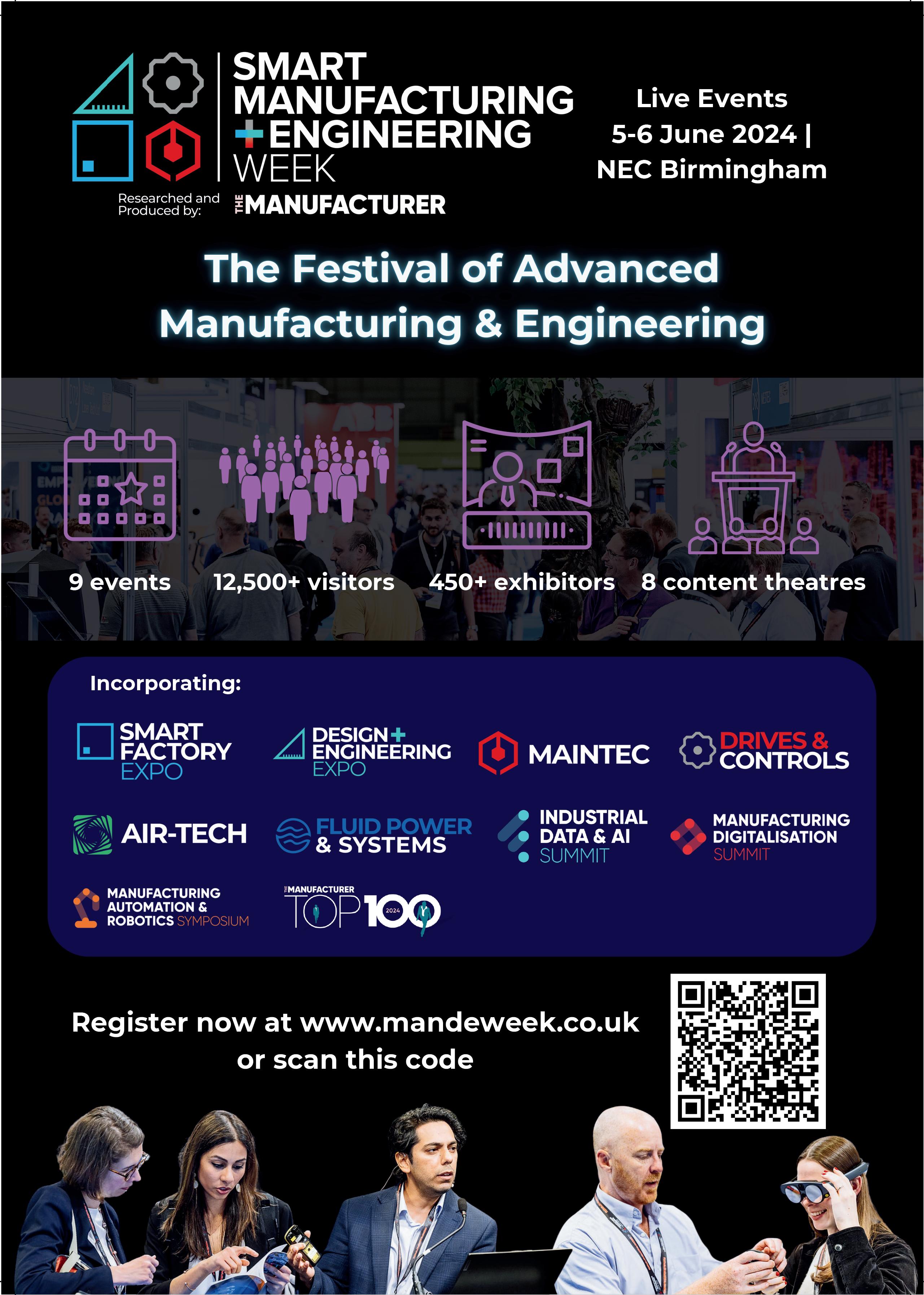
Less than two months to the Machine Vision Conference
The annual Machine Vision Conference (MVC) is renowned worldwide as the principal event that captures the very best in machine vision technology, from the latest cutting-edge industrial vision to innovative imaging technologies. This year’s MVC, the eighth staging of the event, will be held between 18-19 June at the Coventry Building Society Arena where the MVC visitors will also have the unique opportunity to visit the co-located Automation UK which showcases the latest automation and robotics all under one roof.
Machine vision solutions have already been applied to many industries, from food, beverage and pharmaceutical to healthcare, automotive, traffic and transport. Implementing these solutions has been recognised as offering significant benefits to various businesses by enhancing process efficiency, which often results in improved financial performance.
The versatility and adaptability of machine vision technology can be used for automated inspection, object recognition and defect detection, which will, in return, minimise errors and reduce wastage. By incorporating these solutions, businesses can streamline their operations, improve quality control, and boost productivity. It is proven that in fastgrowing industries, businesses that embrace and take advantage of these innovative machine vision solutions will benefit from improving their overall performance and competitiveness.
The MVC’s reputation for providing an impressive and comprehensive machine vision event attracts a diverse range of visitors, including those from big global brands. These companies are keen to discover the latest innovative solutions to enhance their businesses. The 2023 visitors included Airbus, BMW, DeBeers, Jaguar Land Rover, McVities Cake Company, Mercedes AMG F1, Mitsubishi Electric, Morrisons, Nestle UK, Nissan, Ocado, Panasonic, Rolls-Royce, Siemens, Sony, Tata Technologies, Tesco, The Co-Op, Unilever, Vodafone, and Warbutons.
The event organisers, the UK Industrial Vision Association (UKIVA), which is part

of Automate UK alongside the British Automation and Robot Association (BARA), are anticipating over a thousand visitors during the two-day event. MVC will host more than 50 well-known brands exhibiting their state-of-the-art products, services, and solutions, as well as over 40 technical presentations from leading industry experts. MVC is a must-attend event for visitors to expand their knowledge of machine vision.
Andrew Mark Peacock, Director at Peacock Technology Ltd visited the 2023 MVC and described it as: “A unique opportunity to meet suppliers and industry experts covering the full machine vison stack.”
There are many other compelling reasons to visit MVC which provides a perfect combination for existing vision users and engineers as well as educating those new to the world of machine vision. Visitors can explore the content-packed event with plenty of opportunities to meet and connect
with industry peers, talk to exhibitors who can directly help their businesses, see live demos, and hear from industry experts about new machine vision technology and captivating product launches.
Scott McKenna, Deputy Chief Operating Officer at Automate UK said: “Last year’s Machine Vision Conference was a huge success. Co-located with the brand new Automation UK exhibition, and capitalising on the synergies that exists within these sectors, visitor numbers were at an alltime high. We very much look forward to growing the event this year with even more informative content and innovative technology on display.”
Irrespective of visitors’ level of expertise in machine vision, the event will have something for everyone. Anyone planning to attend MVC in June can register for a free pass by visiting the event’s website.
www.machinevisionconference.co.uk
52 www.mepca-engineering.com EVENT PREVIEW



CAPTURING THE VERY BEST OF INDUSTRIAL VISION AND IMAGING
Visitor registration is now open for the much-anticipated Machine Vision Conference, taking place on 18-19 June 2024 at the CBS Arena in Coventry. It is renowned for bringing together the machine vision industry, from leading brands showcasing cutting-edge solutions to industry experts sharing their vast knowledge. Plan your visit and register now for your free ticket!

 COVENTRY BUILDING SOCIETY ARENA COVENTRY
COVENTRY BUILDING SOCIETY ARENA COVENTRY
Registration opens for Silicone Expo USA
The countdown has officially begun as registration opens its doors to the highly anticipated Silicone Expo USA, set to be co-located with the prestigious International Elastomer Conference in the vibrant city of Pittsburgh. Brace yourself for an immersive experience that transcends boundaries and redefines innovation in the realm of silicone and elastomer technologies.
Silicone Expo USA, coupled with the International Elastomer Conference, serves as the ultimate rendezvous point for industry trailblazers, thought leaders, and enthusiasts alike. With each edition, the event promises an unparalleled platform for collaboration, knowledge exchange, and groundbreaking discoveries in the dynamic domains of silicone and elastomers.
What to expect
From 10 to 12 September 2024, Pittsburgh will transform into a bustling hub of creativity and ingenuity. Attendees can look forward to a multifaceted agenda comprising keynote speeches, panel discussions, and hands-on demonstrations. Whether you’re a seasoned professional seeking to stay ahead of the curve or a budding entrepreneur eager to make your mark, this event caters to all levels of expertise and interests.
Key highlights
• Cutting-Edge Exhibits: Explore an extensive array of cutting-edge exhibits showcasing the latest advancements in silicone and elastomer technologies. From high-performance materials to innovative manufacturing processes, witness firsthand the transformative impact of these materials across diverse industries.
• Networking Galore: Forge meaningful connections with industry peers, experts, and potential collaborators through structured networking sessions and social events. Exchange insights, explore potential partnerships, and cultivate relationships that extend beyond the confines of the event.
• Educational Opportunities: Delve
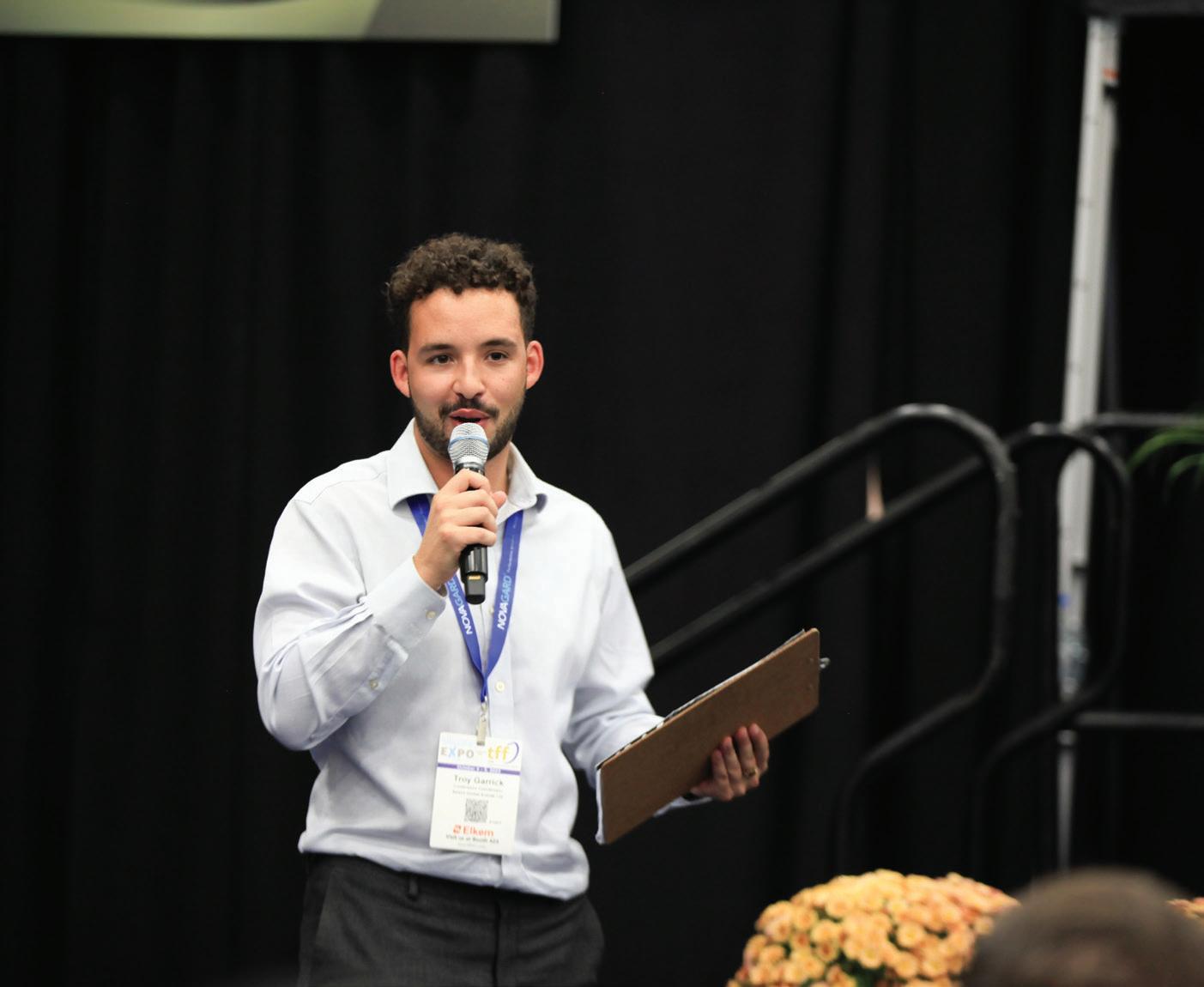
deeper into specialised topics through a series of educational sessions led by industry luminaries. Gain invaluable insights into emerging trends, best practices, and future prospects shaping the silicone and elastomer landscape.
• Innovation Showcases: Immerse yourself in innovation at the Innovation Pavilion, where groundbreaking technologies and revolutionary concepts take centre stage. Witness the convergence of science, engineering, and creativity as visionaries unveil their latest breakthroughs.
Why attend
Silicone Expo USA, in conjunction with the International Elastomer Conference, offers
unparalleled opportunities for professional development, collaboration, and inspiration. Whether you’re seeking to expand your knowledge base, discover cuttingedge solutions, or establish meaningful connections, this event is your gateway to success in the dynamic world of silicone and elastomers.
Registration details
Secure your spot at Silicone Expo USA by registering today. Early registration ensures access to exclusive benefits and discounted rates, so don’t miss out on this opportunity to be part of something extraordinary. www.silicone-expo.com
54 www.mepca-engineering.com EVENT PREVIEW
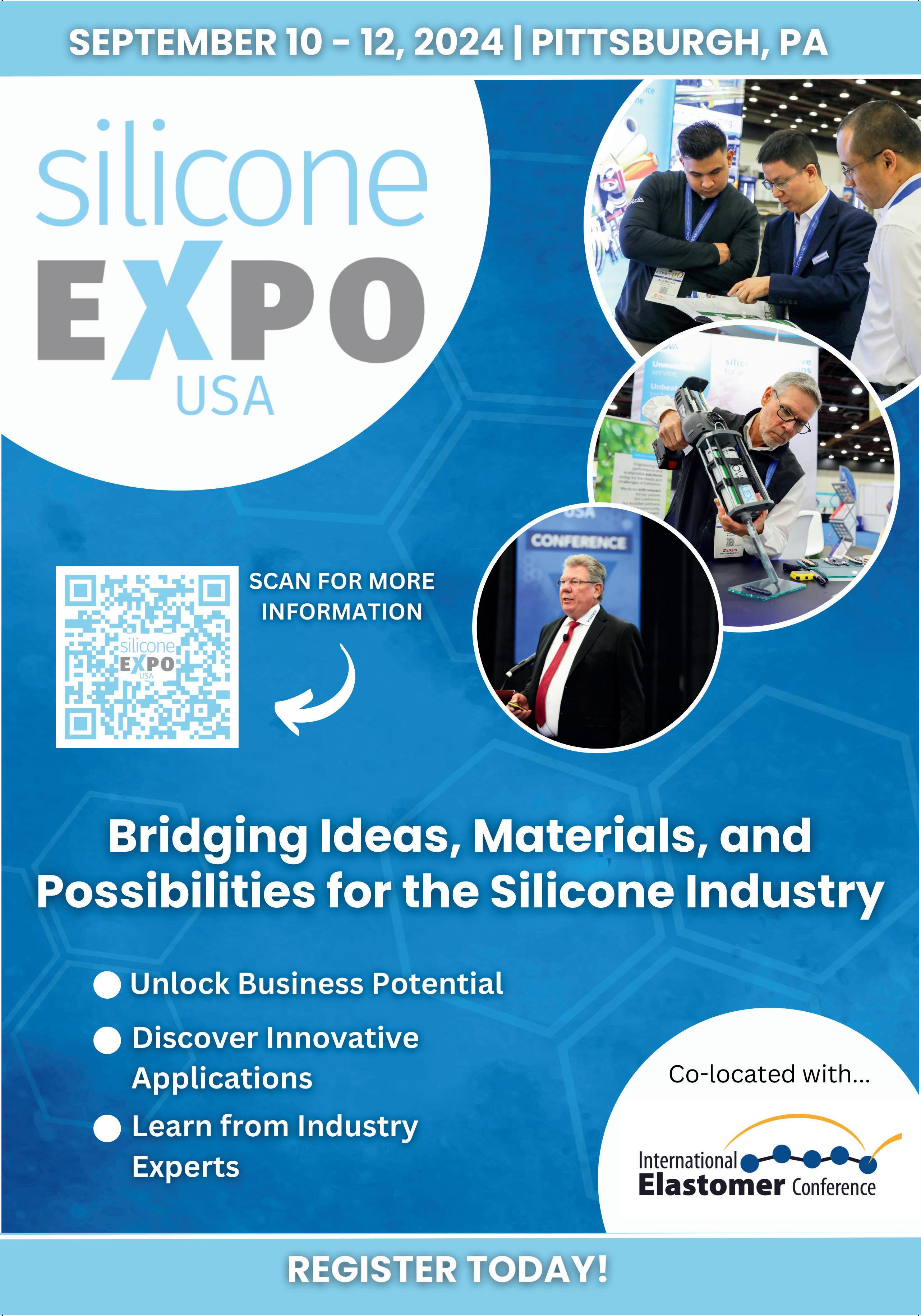
Overspeed protection guide free to download
Condition monitoring and protection systems specialist SENSONICS has published a free guide titled ‘Specifying Overspeed Protection Systems’. Overspeed protection is a key requirement in the power generation industry, where failure of the machine speed control loop can lead to damaging consequences. Applicable to steam turbines, gas turbines and boiler feed pumps, the implementation of independent monitoring and shutdown protection is essential to minimise this risk.

This resource is aimed at professionals involved in power generation system design as there are a multitude of equipment configurations and methodologies that can be applied, depending on the application. The guide describes the various components that make up an overspeed protection system, along with the recommended best practice. bit.ly/SENsopg
Improve air cleanliness in even the largest workplaces
AirBench has announced the release of its air cleaning system for large halls, including the AirTower AT range.
Designed for general dust and fume capture in large working areas, the AT range runs continuously, capturing weld fume, smoke, and particulate and exhausting clean filtered air back to the room.
Air Towers are a backup system designed to assist with general room air cleanliness where existing extraction is not fully capturing contamination. As weld fume settles at around 3m height, the AT range is perfectly placed to capture this layer, with the main inlet at 2.5m – making it the ideal solution for large welding halls.
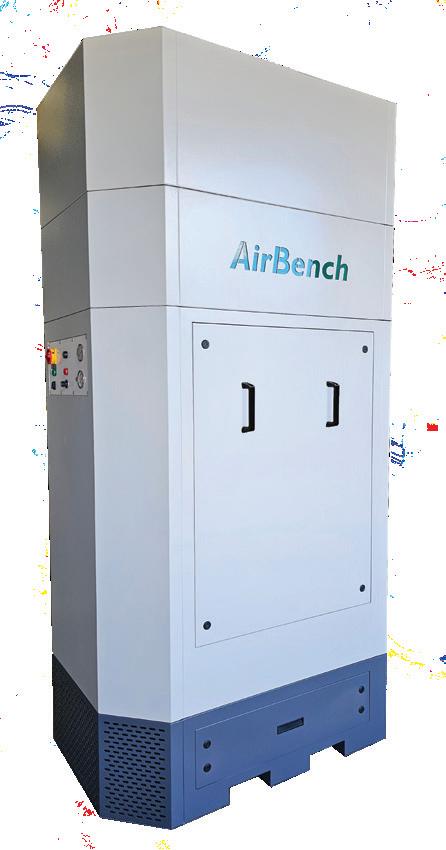
With airflows up to 15000m3/h, AT can continuously improve air cleanliness in even the largest workplaces.
AT joins AirBench’s air cleaning range, providing the large-area equivalent to the existing small units – the wall-mounted MF600 and floor-mounted MF2000 and MF3000 models. www.airbench.com/at
ABB enhances Connected Worker
A
Suite
BB has introduced an updated ABB Ability Connected Worker solution with new functionalities which strengthen and accelerate the digitalisation of the field operator experience to mitigate the risk of human error and unscheduled downtime.

The enhanced software integrates technology and connectivity into the workplace to provide the operator with more flexibility, control and ease of use through greater visibility of real-world circumstances and data. In doing so, it enables a more sustainable and resilient business model.
The Integrated Task Manager app will deliver ongoing, continuous improvements on current data and stronger analysis capabilities on historical data, allowing operators to more accurately measure their performance efficiency. Improvements in the Procedure Manager app mean that operators can now preview their industrial procedures across various mobile devices and in different virtual settings.
The updated Mobile app features an improved audit trail and the ability to go back and enter or approve data in a more controlled way. new.abb.com
IO-Link hub without need for cord-set power connection
Newly available from Aerco, the LioN-X 16DIO is a costeffective IO-Link hub that delivers enough current for many industrial applications without the need for a cord-set power connection.
Manufactured by Lumberg Automation, a Belden company, this IO-Link hub features 16 configurable channels and distributes power via those channels offering 350mA per channel – enough to power most industrial applications. The IO-Link hub’s advanced, cost-effective machine connectivity and data collection ensures fast and easy data transfer in complex operational networks.
A ruggedised design with a metal zinc diecast housing maximises durability and endures challenging conditions, rated IP69K and with a temperature range -40 to +70°C.
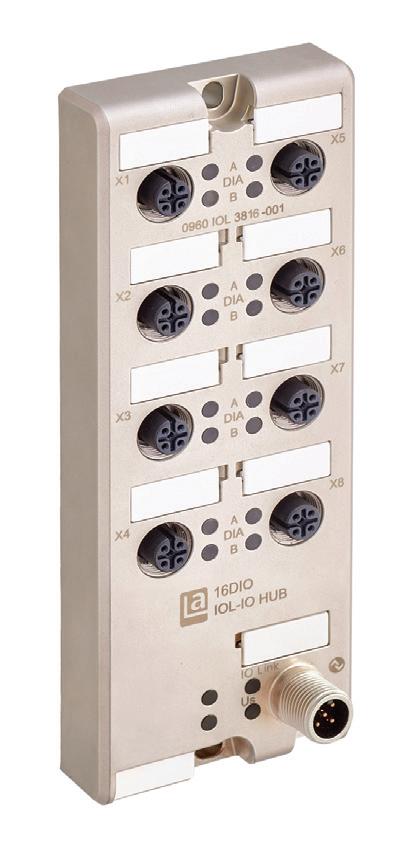
The Lumberg Automation LioN-X 16DIO IO-Link Hub LC suits a wide range of industries, including automotive, consumer packaged goods, food and beverage, machine building, manufacturing, and material handling. www.aerco.co.uk
56 www.mepca-engineering.com
INDUSTRY UPDATES



Attended by 1,500 professional visitors over 2 days



the lifting
and height safety industries
The networking exhibition for
equipment
SAVE THE DATE Hosted by: Headline Sponsor Gold Sponsor Badge and Water Sponsor 16th – 17th October 2024 Olympia West, London liftex.org #liftex2024
CONNECTIONS
3D Print Manufacturing

Midlands 3D Printing
T: 01785 594389
E: sales@midlands3d.com
W: www.midlands3d.com
Anti Vibration Products, Mounts & Bushes

Fibet Rubber Bonding (UK) Ltd
T: 01282 878200
E: sales@fibet.co.uk
W: www.fibet.co.uk
Connectors & Cabling Solutions
CEMBRE Ltd
T: 01675 470 440
E: sales@cembre.co.uk
W: www.cembre.com/en
Drives, Motors & Gears

Nord
T: 01235 534404
E: GB-sales@nord.com
W: www.nord.com
Dust & Fume Solutions
Impact Technical Services
T: 0116 244 8855
E: enquiries@impactts.co.uk
W: www.impacttechnicalservices.co.uk
Flow Meters

Titan Enterprises Ltd
T: +44 (0)1935 812790
E: sales@flowmeters.co.uk
W: www.flowmeters.co.uk
High Shear Mixing Equipment
Silverson Machines Ltd

T: +44 (0)1494 786331
E: sales@silverson.co.uk
W: www.silverson.co.uk
Industrial Communications
Brainboxes

T: + 44 (0) 151 220 2500
E: sales@brainboxes.com
W: www.brainboxes.com
Intoware

T: 0115 977 8969
E: hello@intoware.com
W: www.intoware.com
Industrial Fans

Axair Fans UK Limited
T: 01782 349 430
E: sales@axair-fans.co.uk
W: www.axair-fans.co.uk
Machine Safety
Schmersal UK Ltd

T: 01684 571980
E: uksupport@schmersal.com
W: www.schmersal.co.uk
Marking Solutions
T-Mark T: 0330 153 8320
E: sales@t-mark.co.uk
W: www.t-mark.co.uk
Pipework Systems

Jacob UK Ltd
T: 01694 722841
E: sales@jacob-uk.com
W: www.jacob-group.com/uk
Pressure Measurement Specialists

ESI Technology Ltd
T: +44 (0)1978262255
E: sales@esi-tec.com
W: www.esi-tec.com
Robotics & Automation
KUKA Robotics UK Ltd

T: 0121 505 9970
E: sales.uk@kuka.com
W: www.kuka.com
Sensors


IFM Electronic
T: 020 8213-0000 E: enquiry.gb@ifm.com W: www.ifm.com
PLUS Automation Ltd
T: 0121 58 222 58
E: Sales@PLUSAutomation.co.uk
W: www.PLUSAutomation.co.uk
Storage Solutions
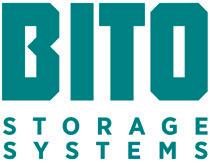
BITO Storage Systems Ltd.
T: 02476 388 852
E: Info.uk@bito.com
W: www.bito.com
Test & Inspection
AMETEK Land (Land Instruments

International)
T: +44 1246 417691
E: land.enquiry@ametek.com
W: www.ametek-land.com
58 www.mepca-engineering.com

5-6 JUNE 2024 • THE NEC BIRMINGHAM THE UK'S LARGEST SUBCONTRACT MANUFACTURING SUPPLY CHAIN SHOW JOIN US IN JUNE AT JOIN THE CONVERSATION @SubconShow #SubconShow REGISTER FOR FREE NOW FIND OUT MORE




















































































































 COVENTRY BUILDING SOCIETY ARENA COVENTRY
COVENTRY BUILDING SOCIETY ARENA COVENTRY





























